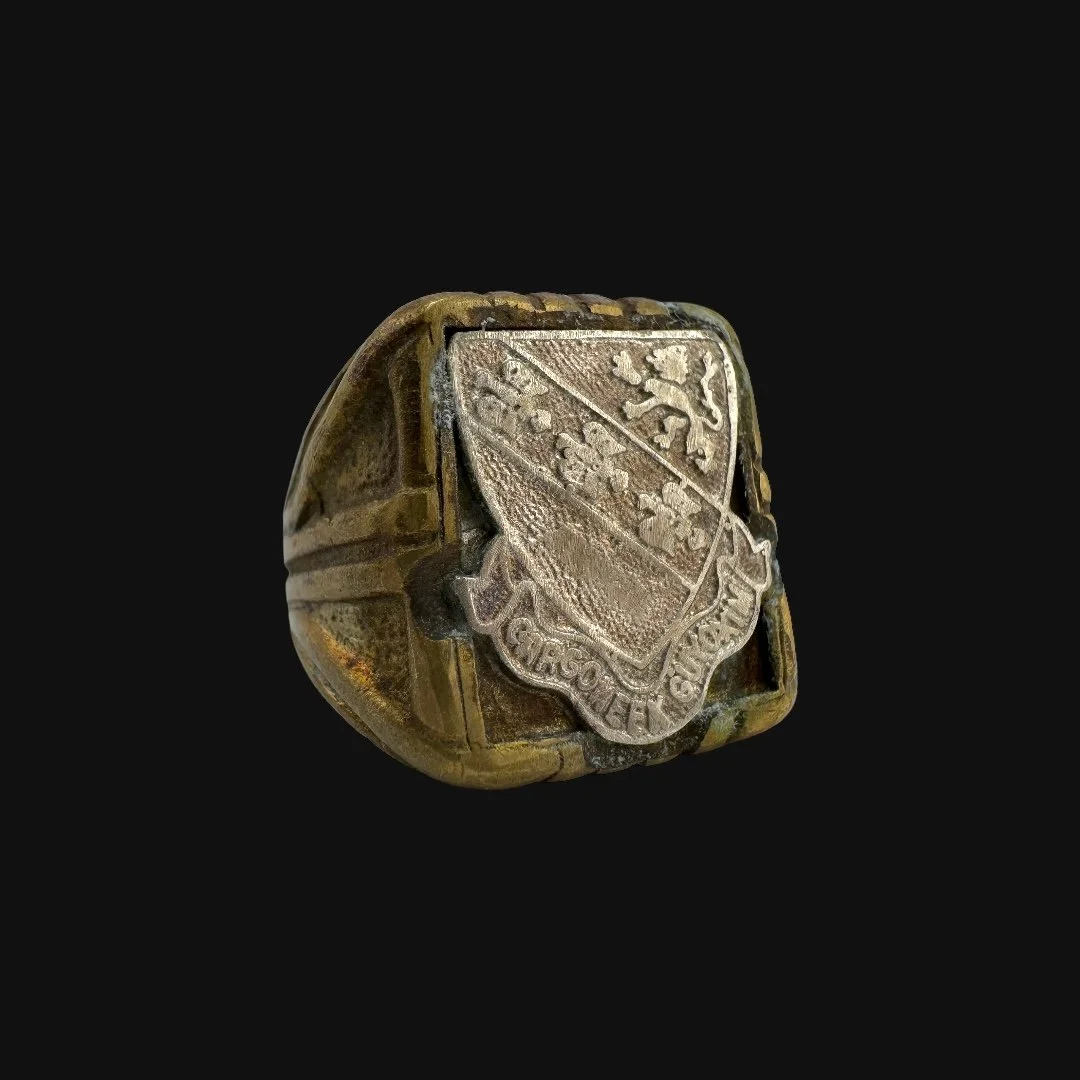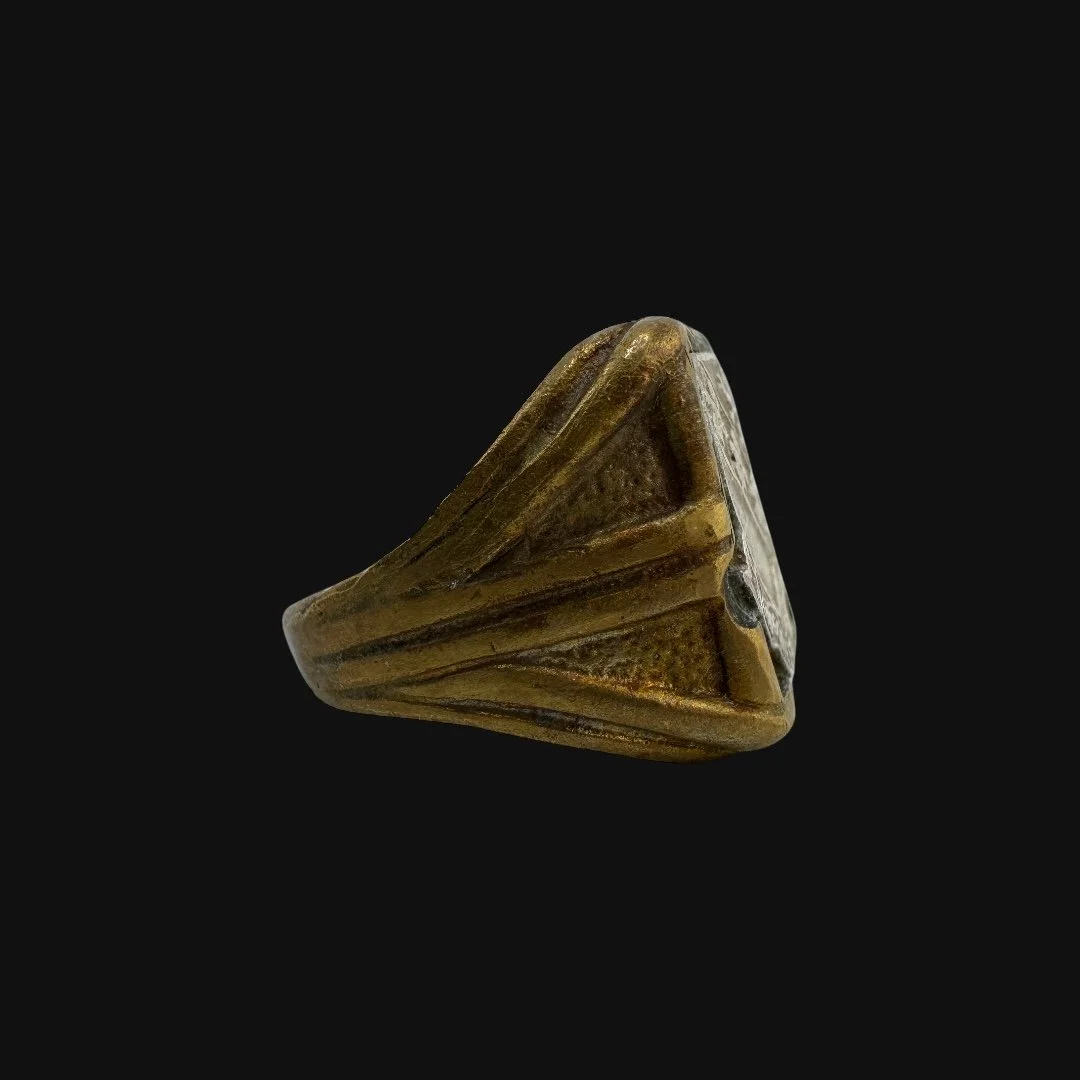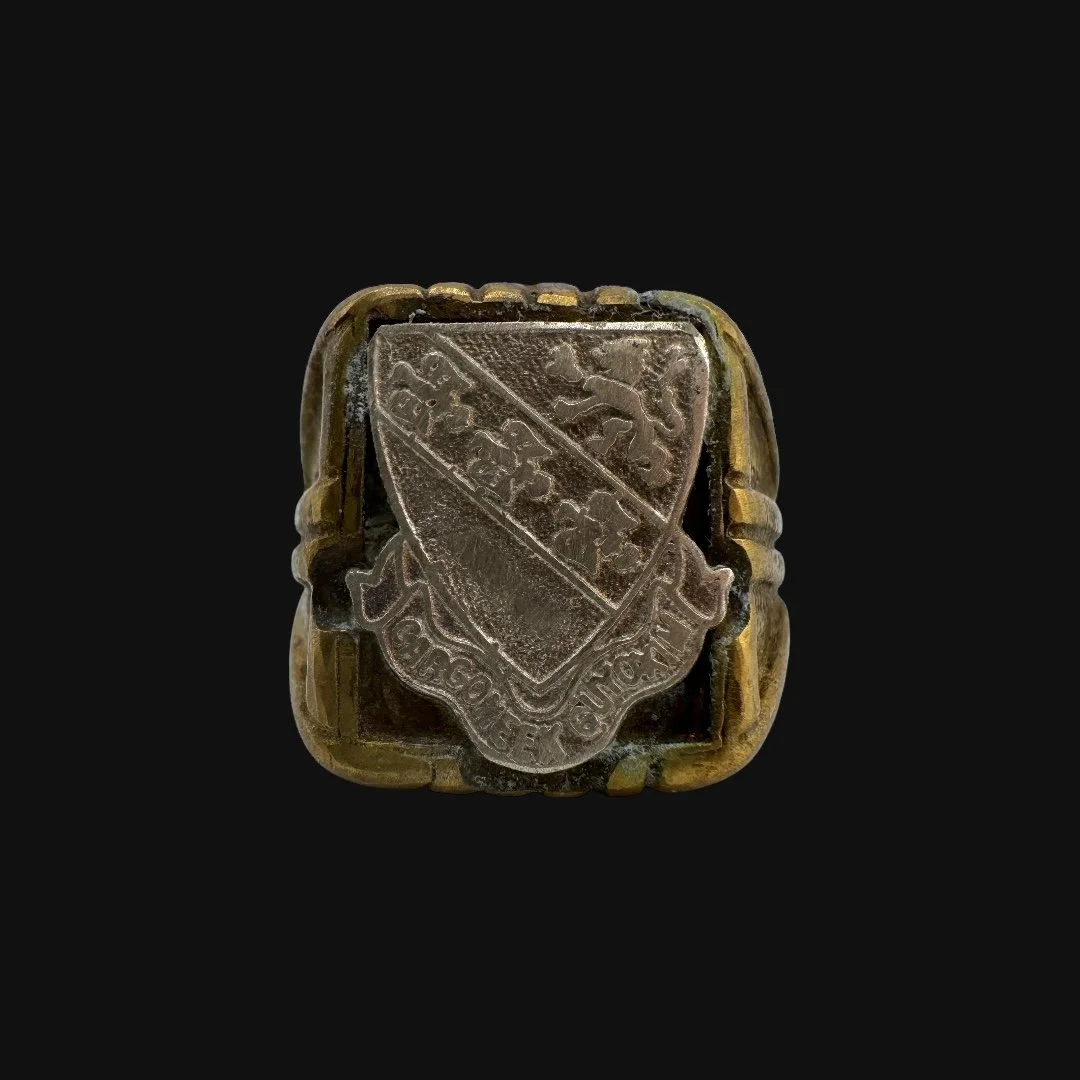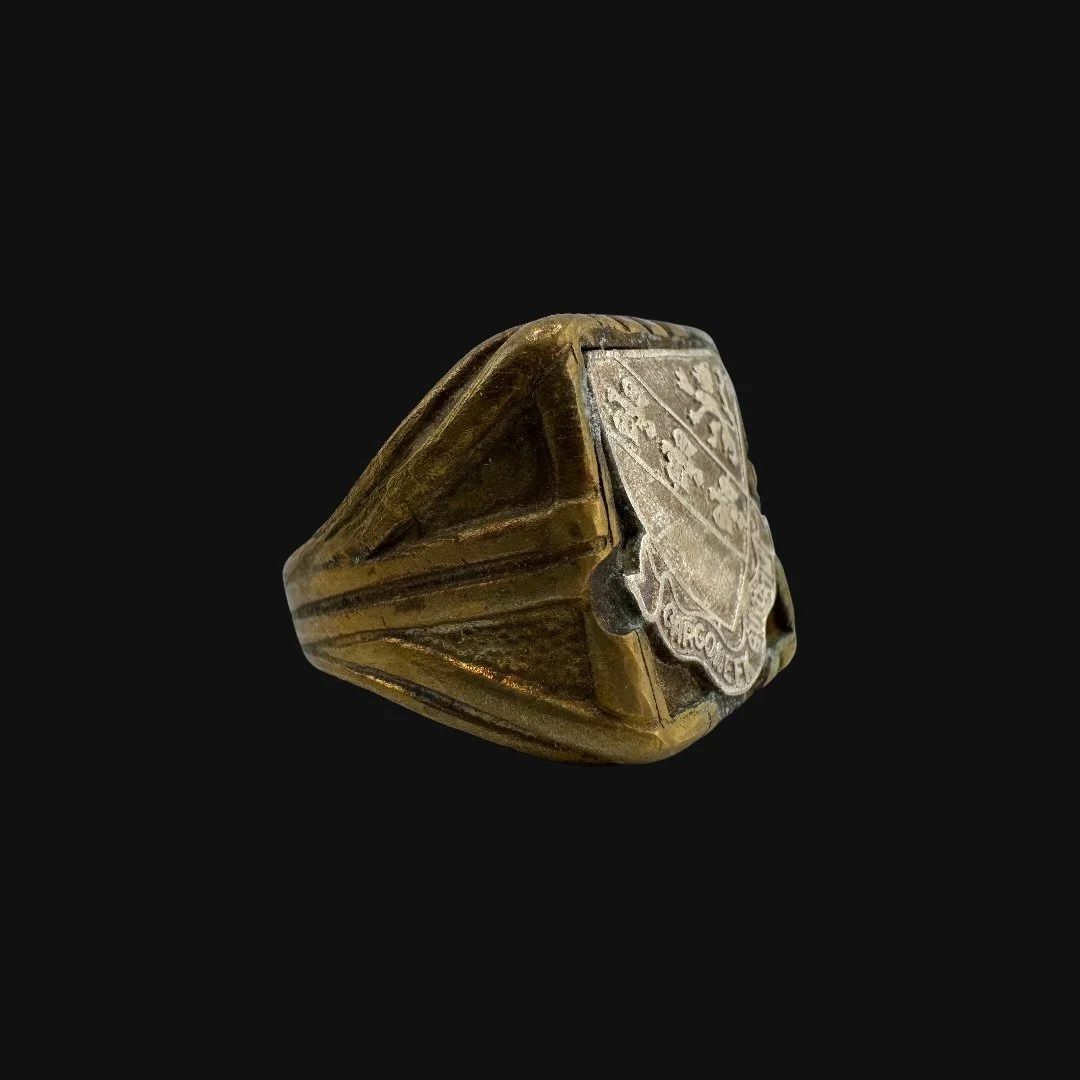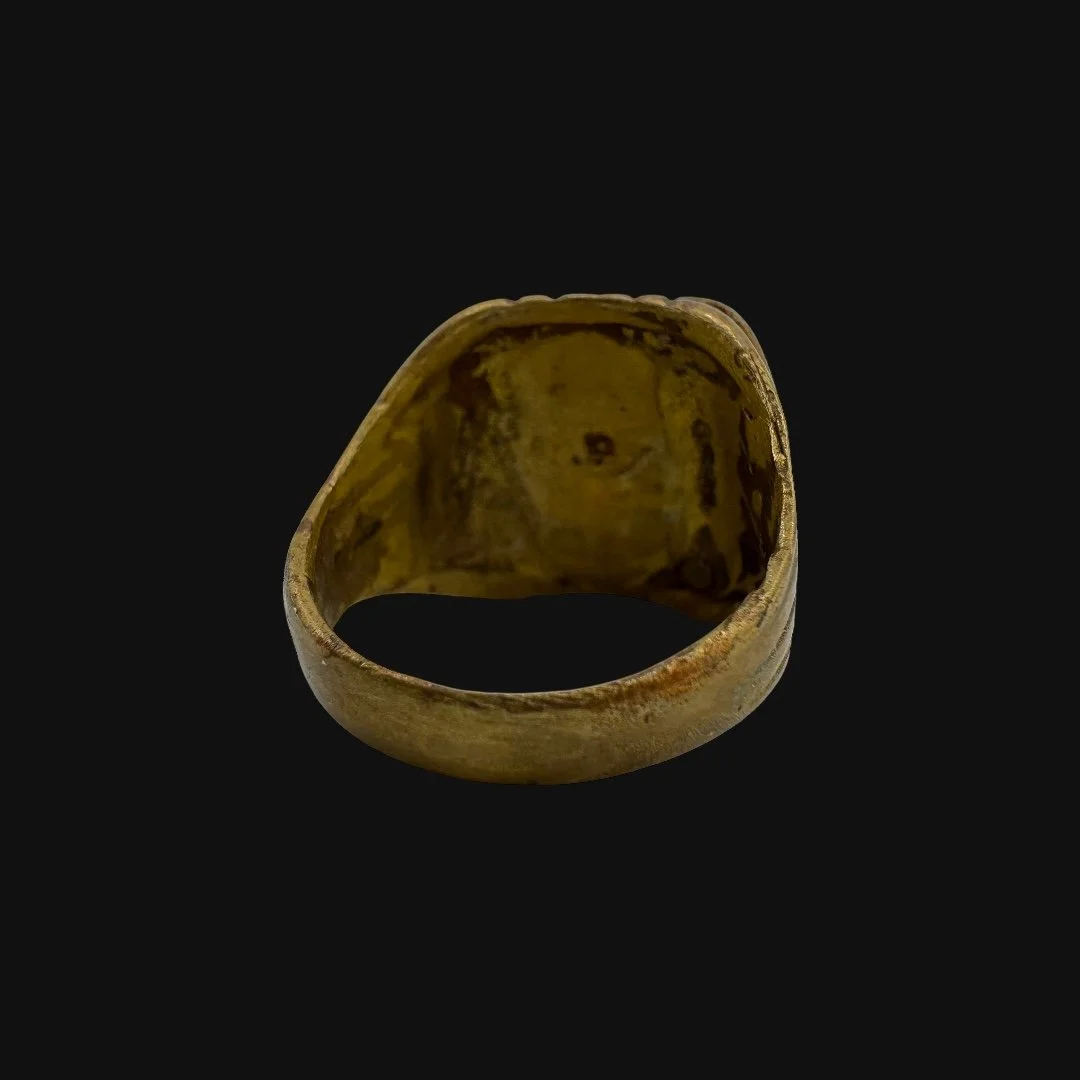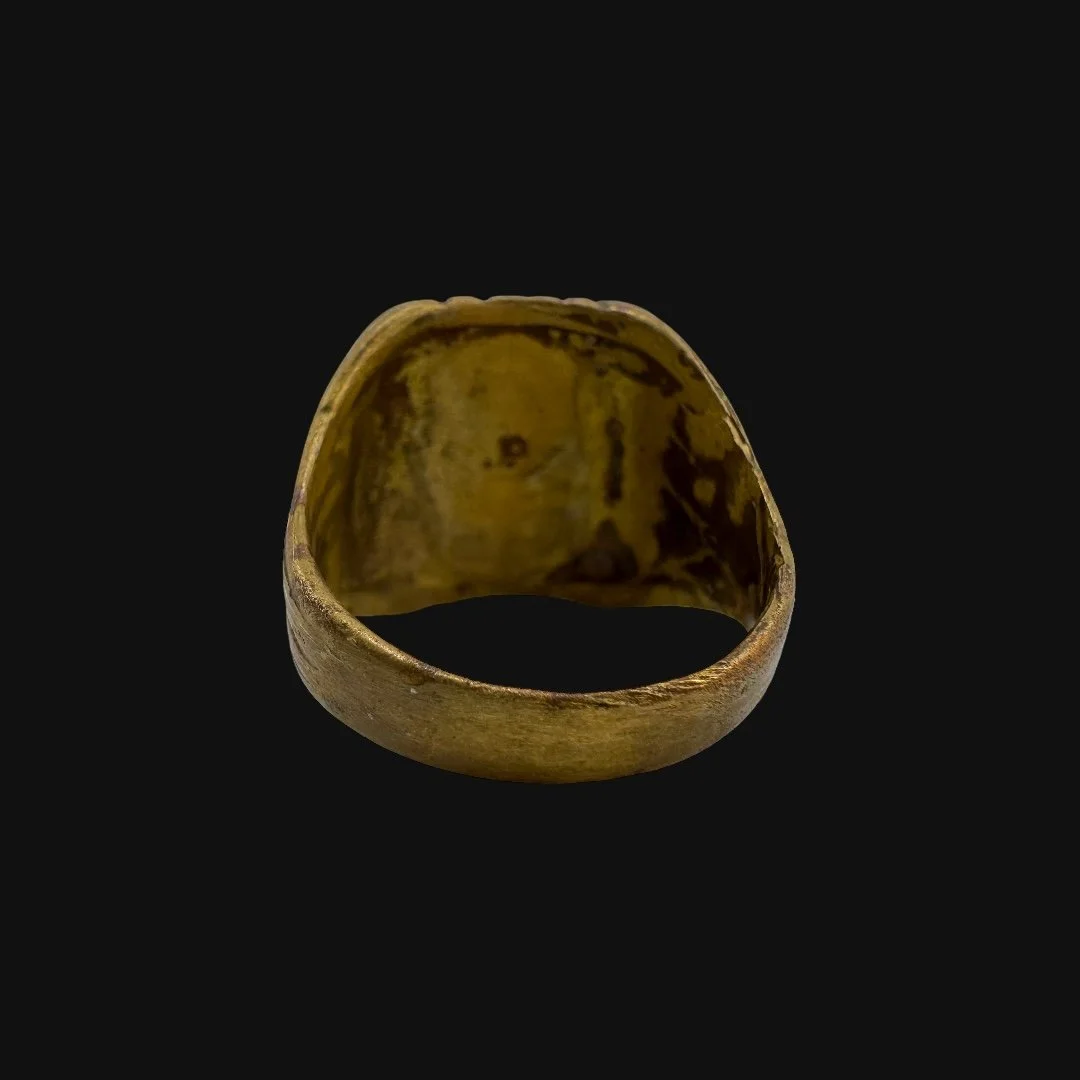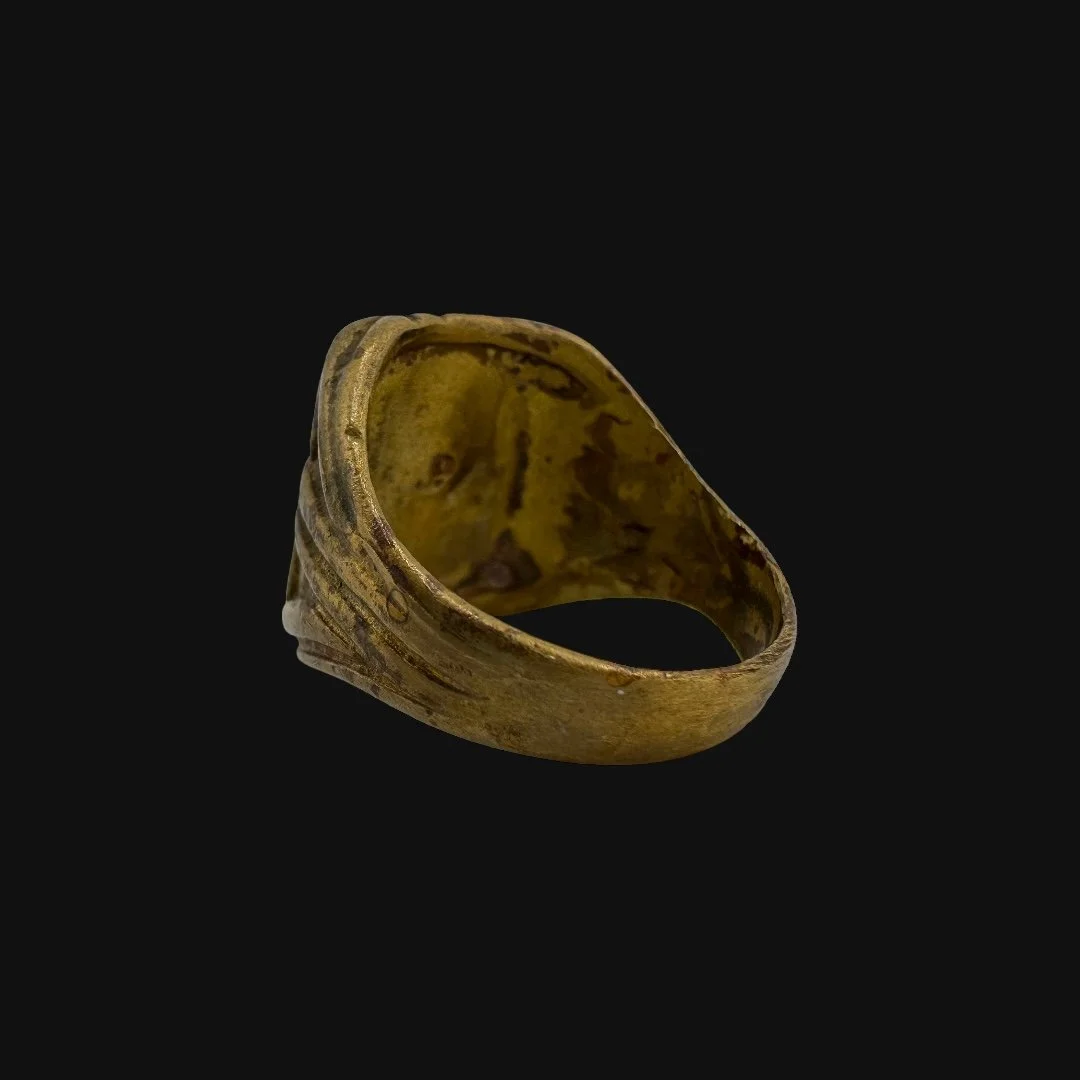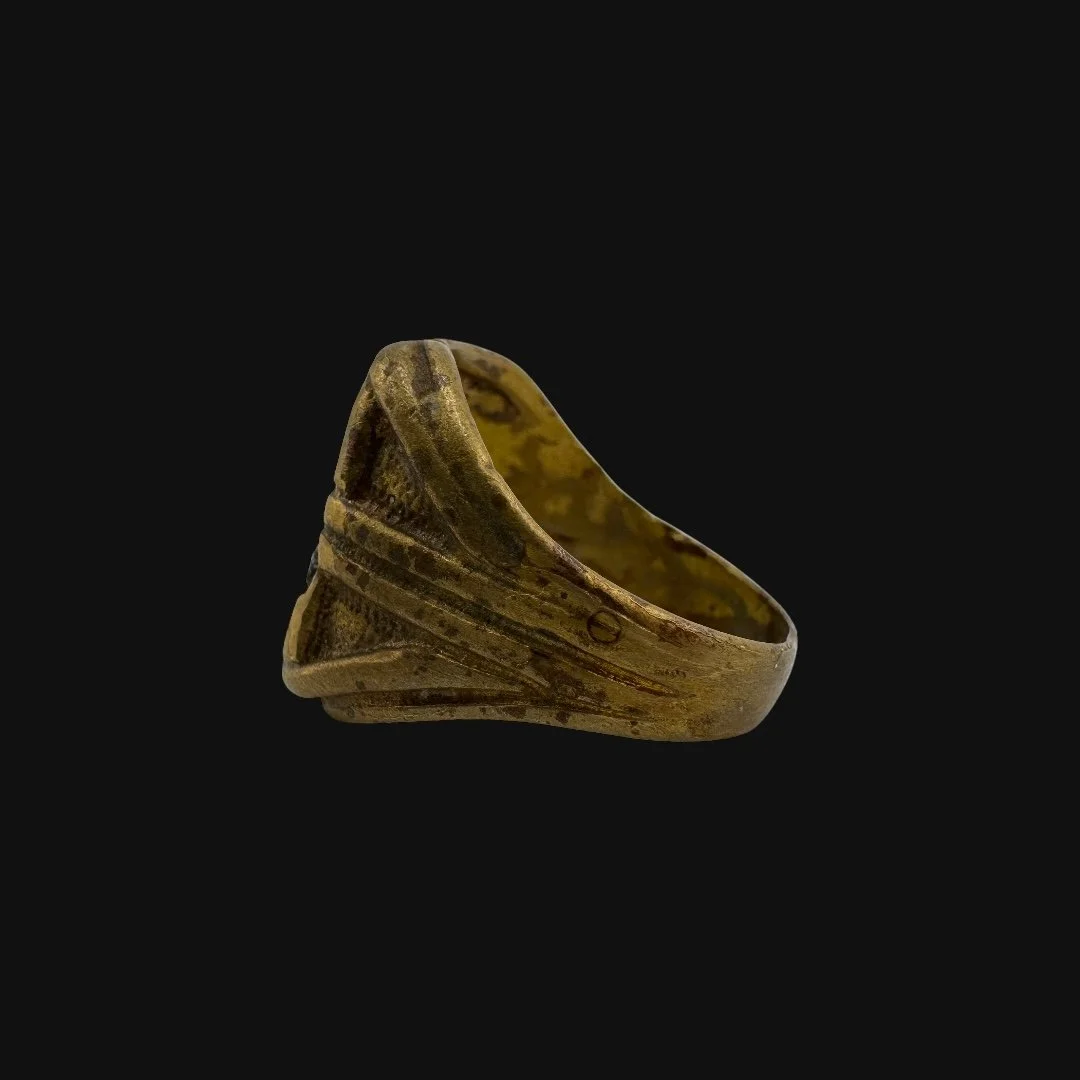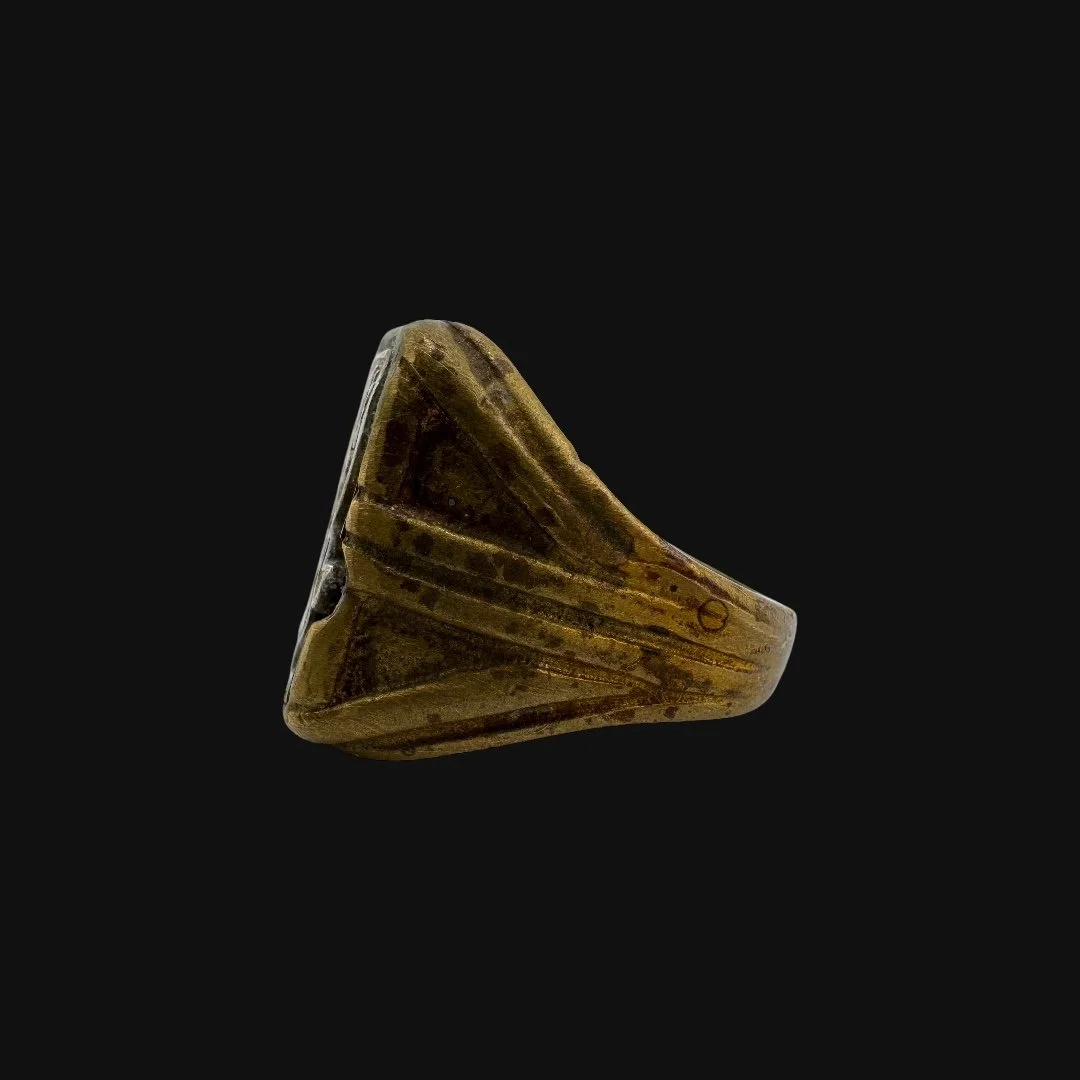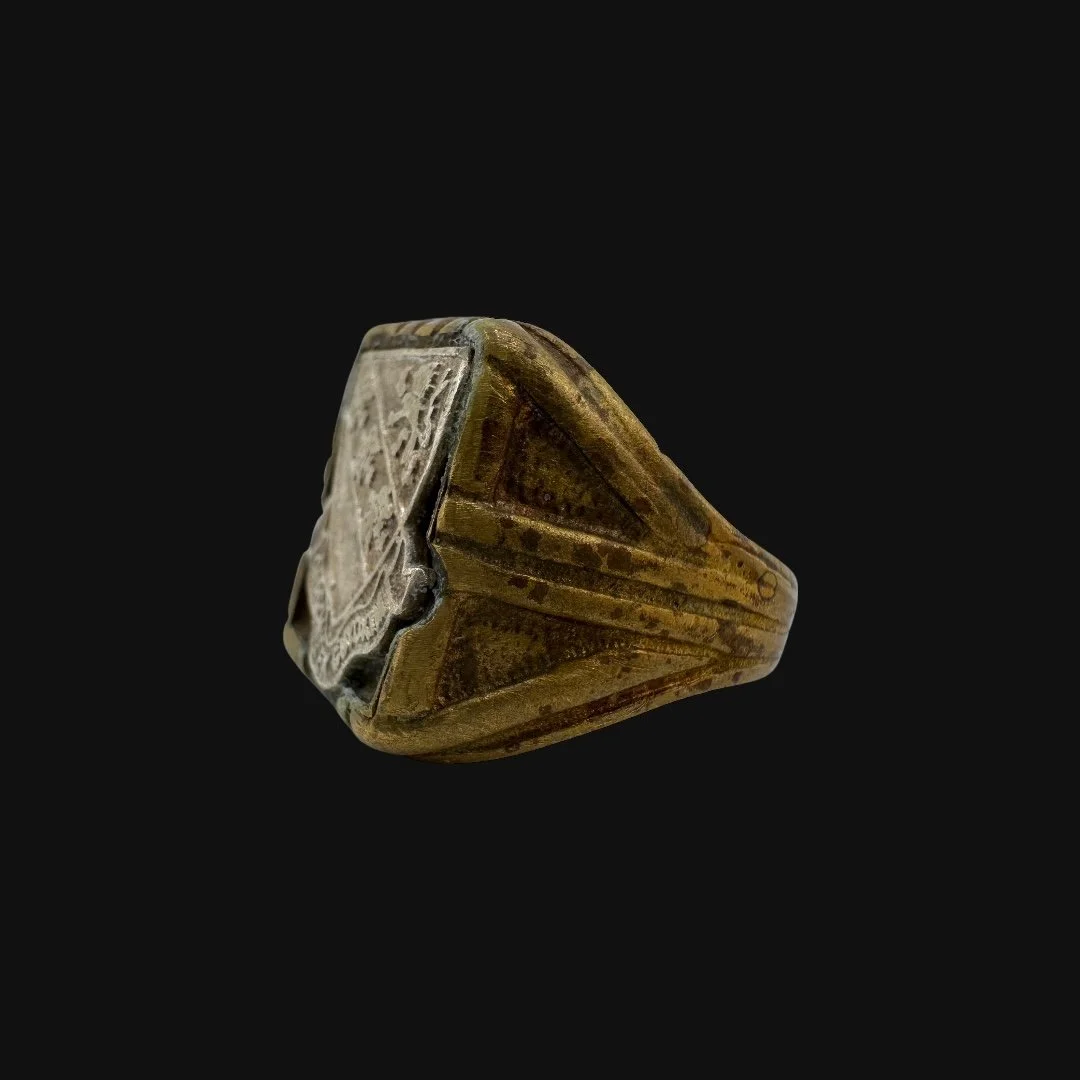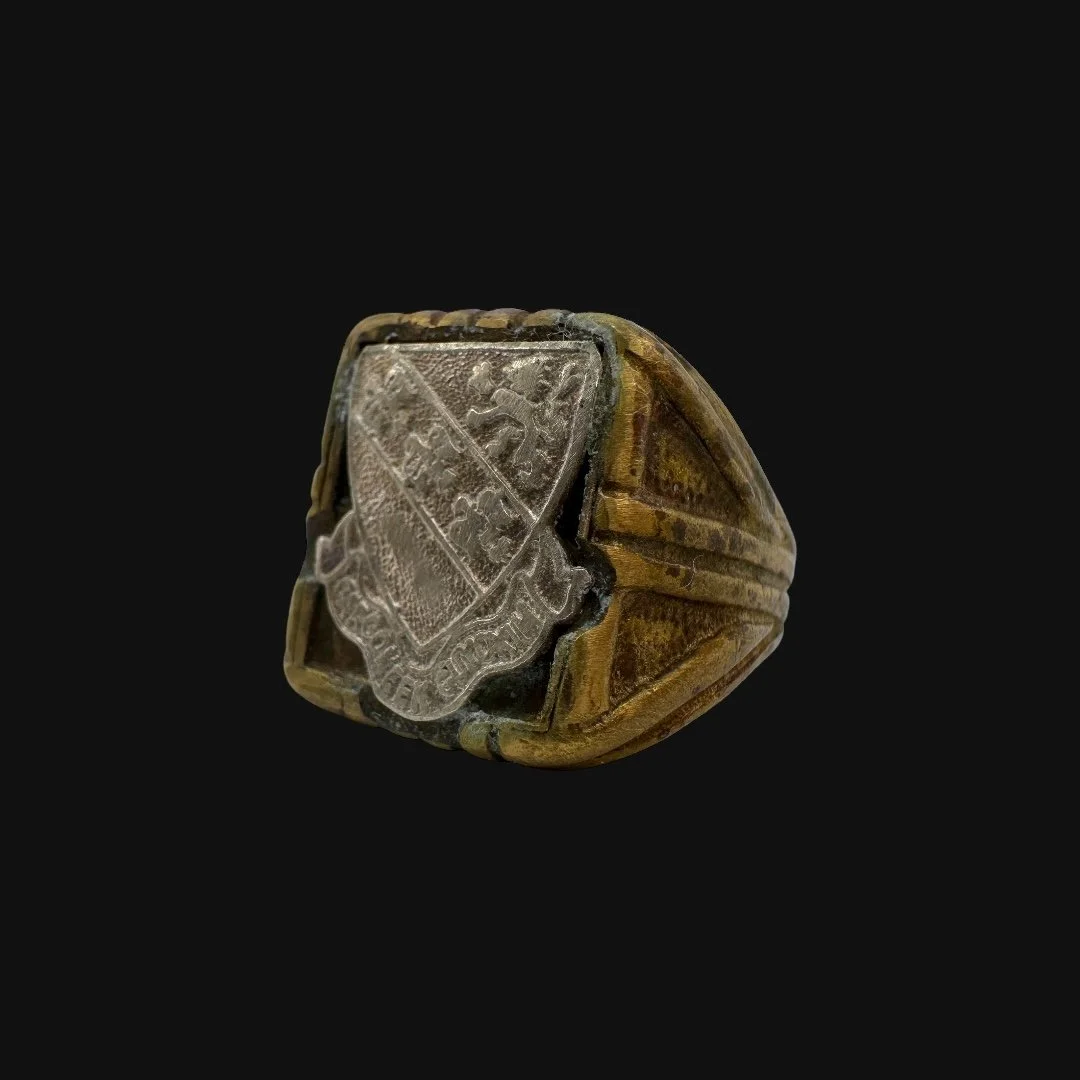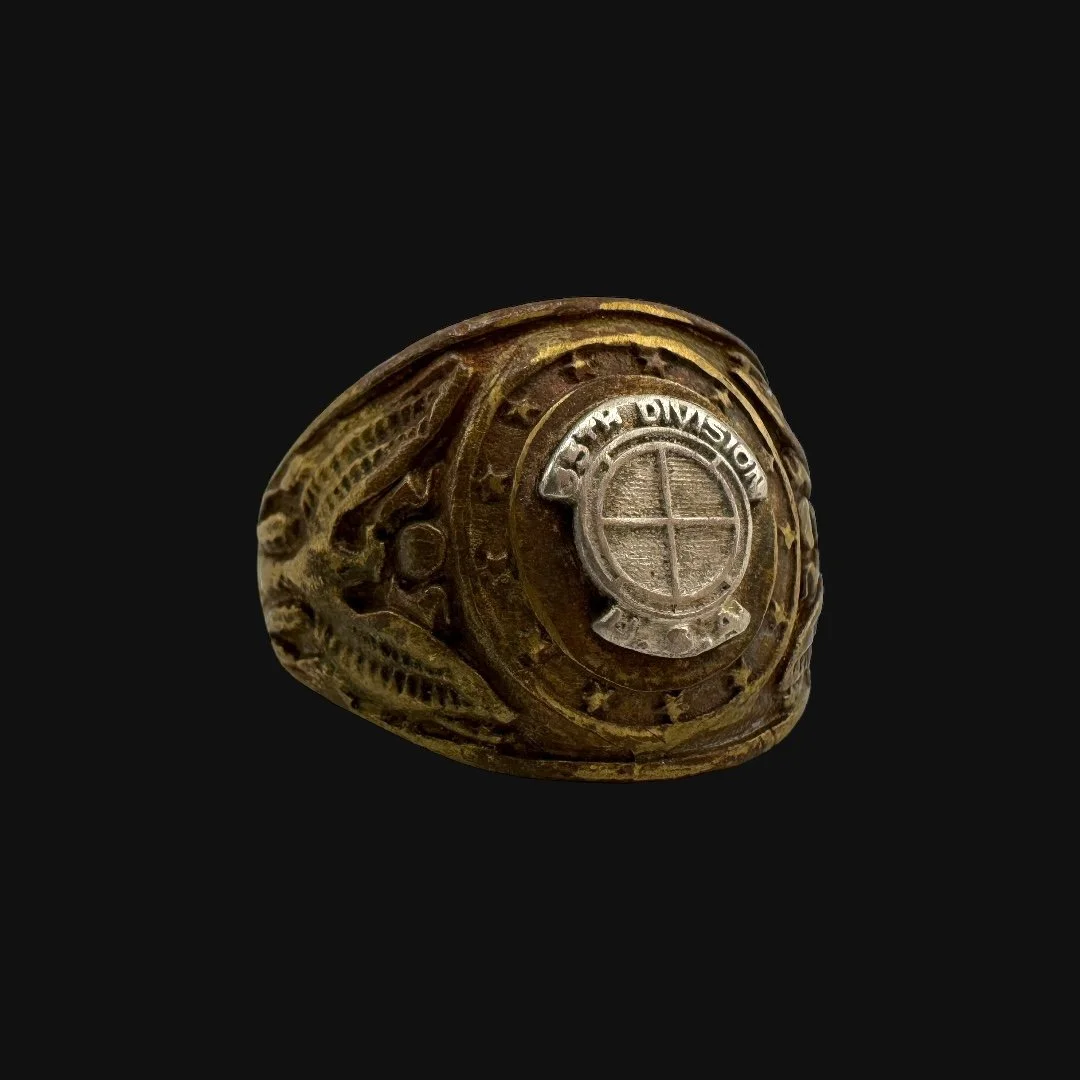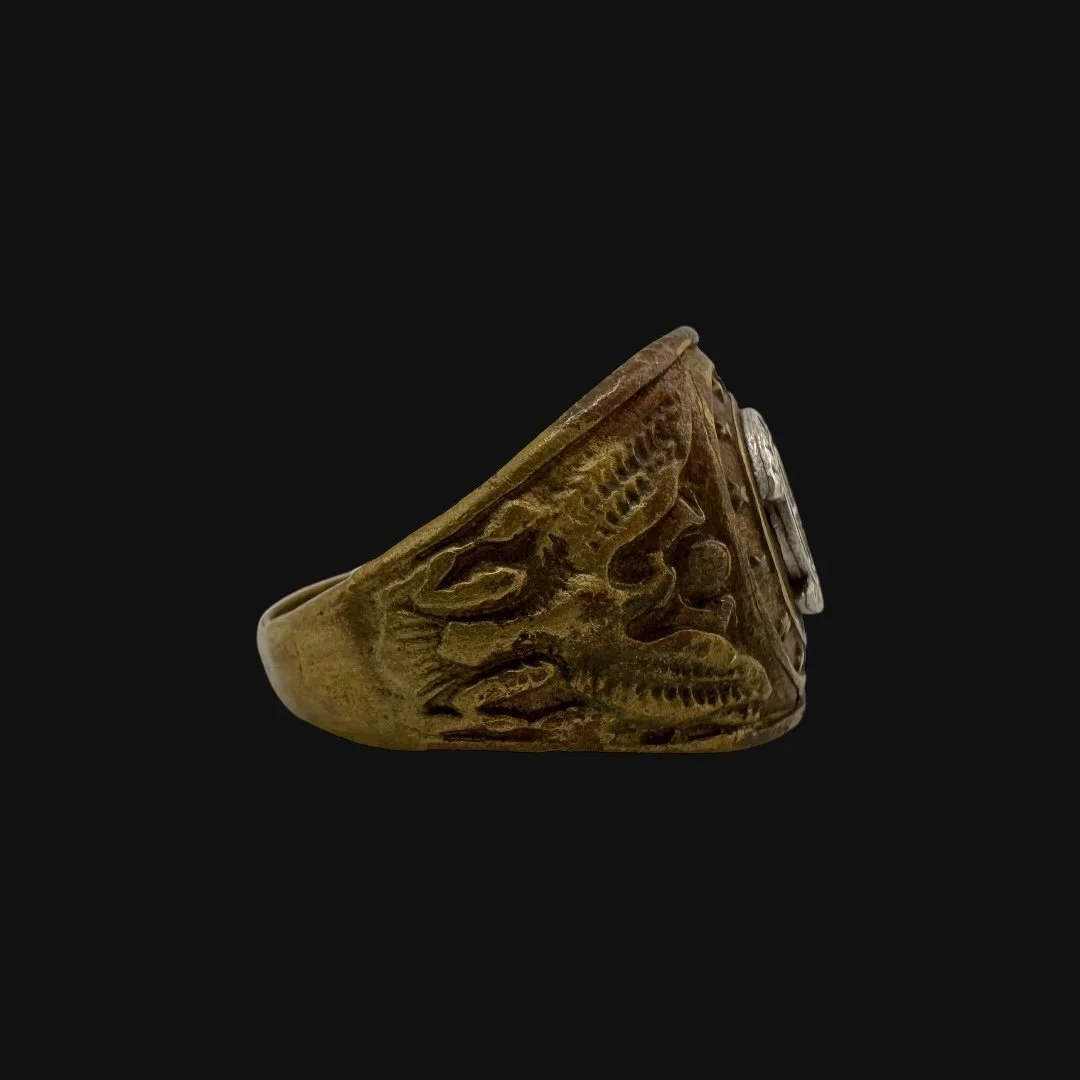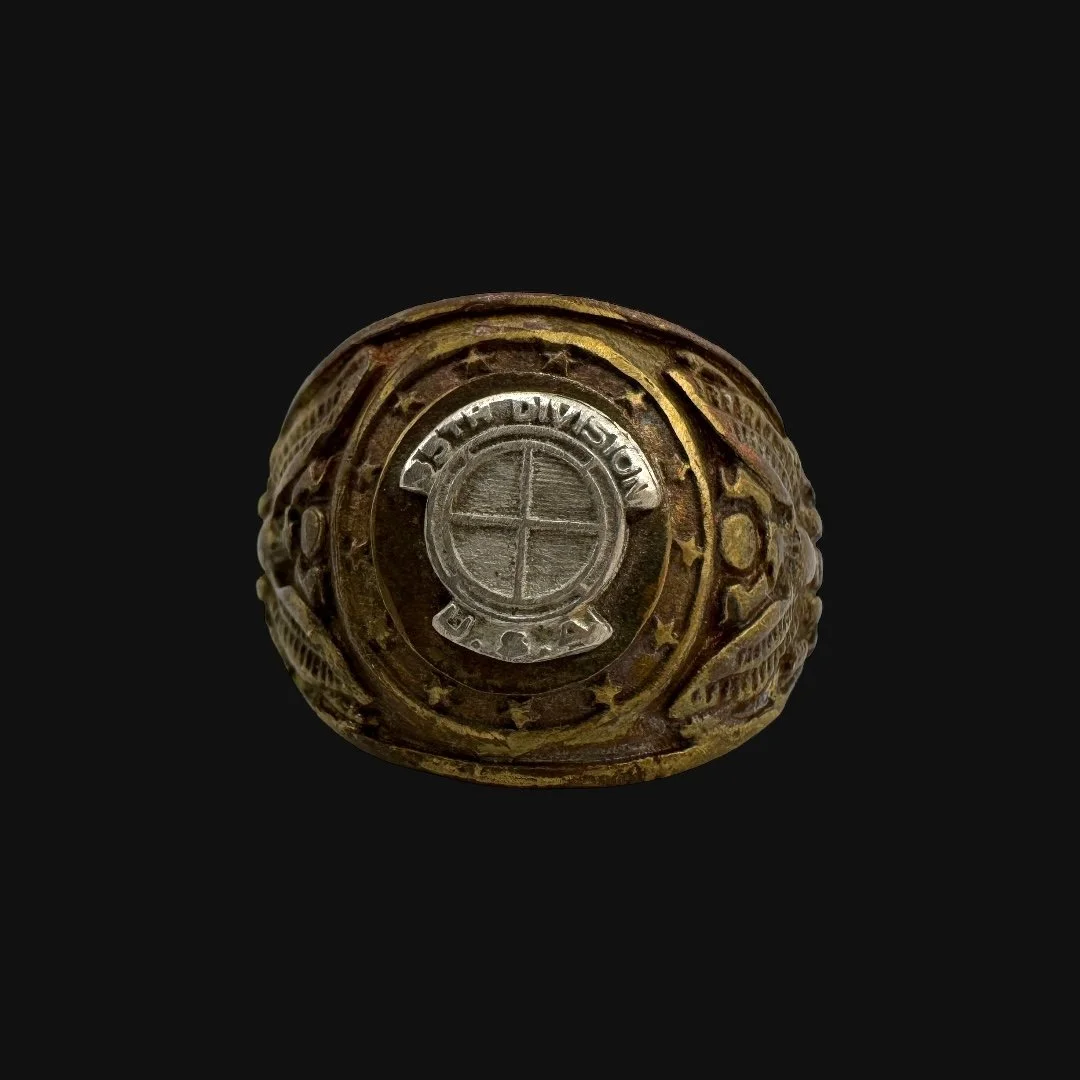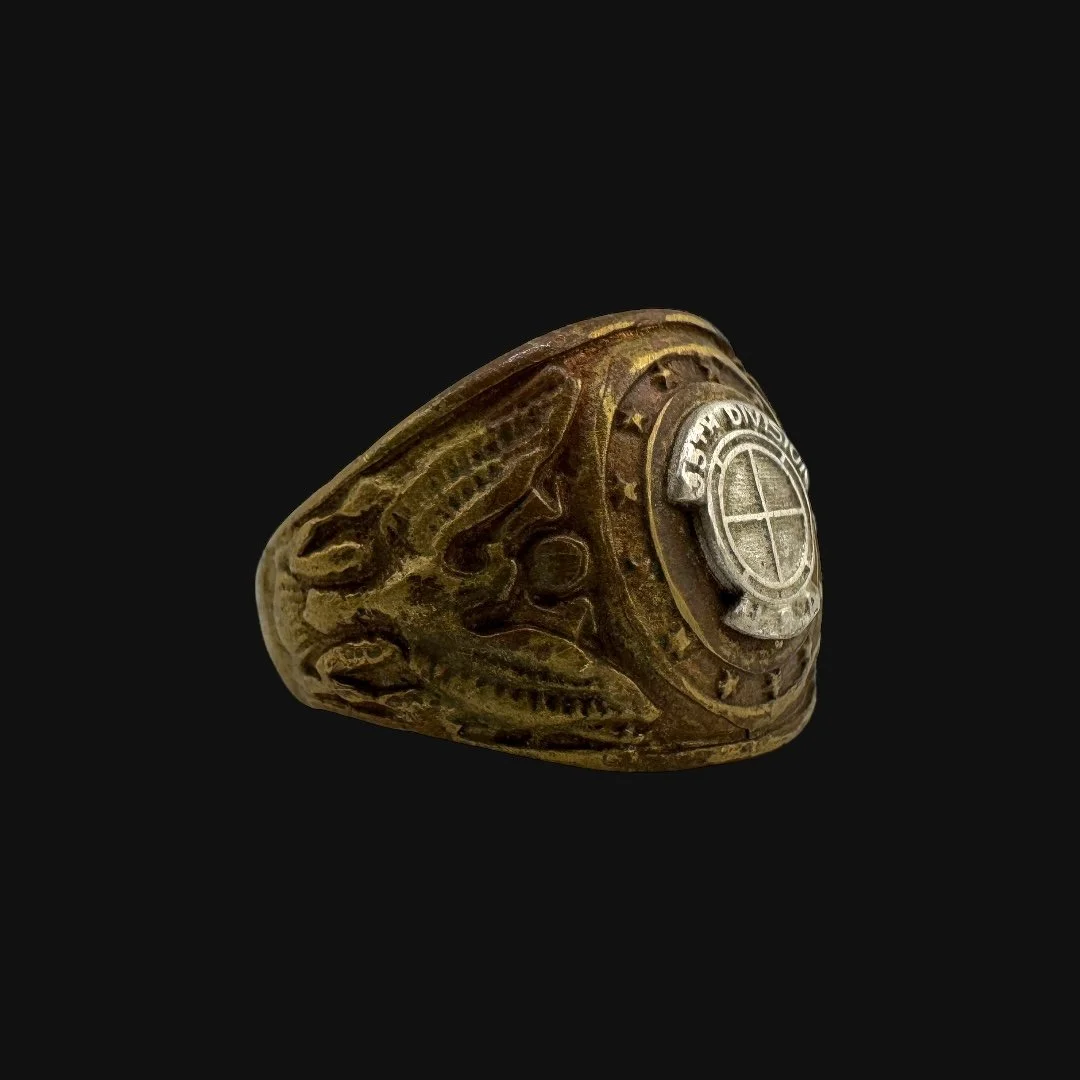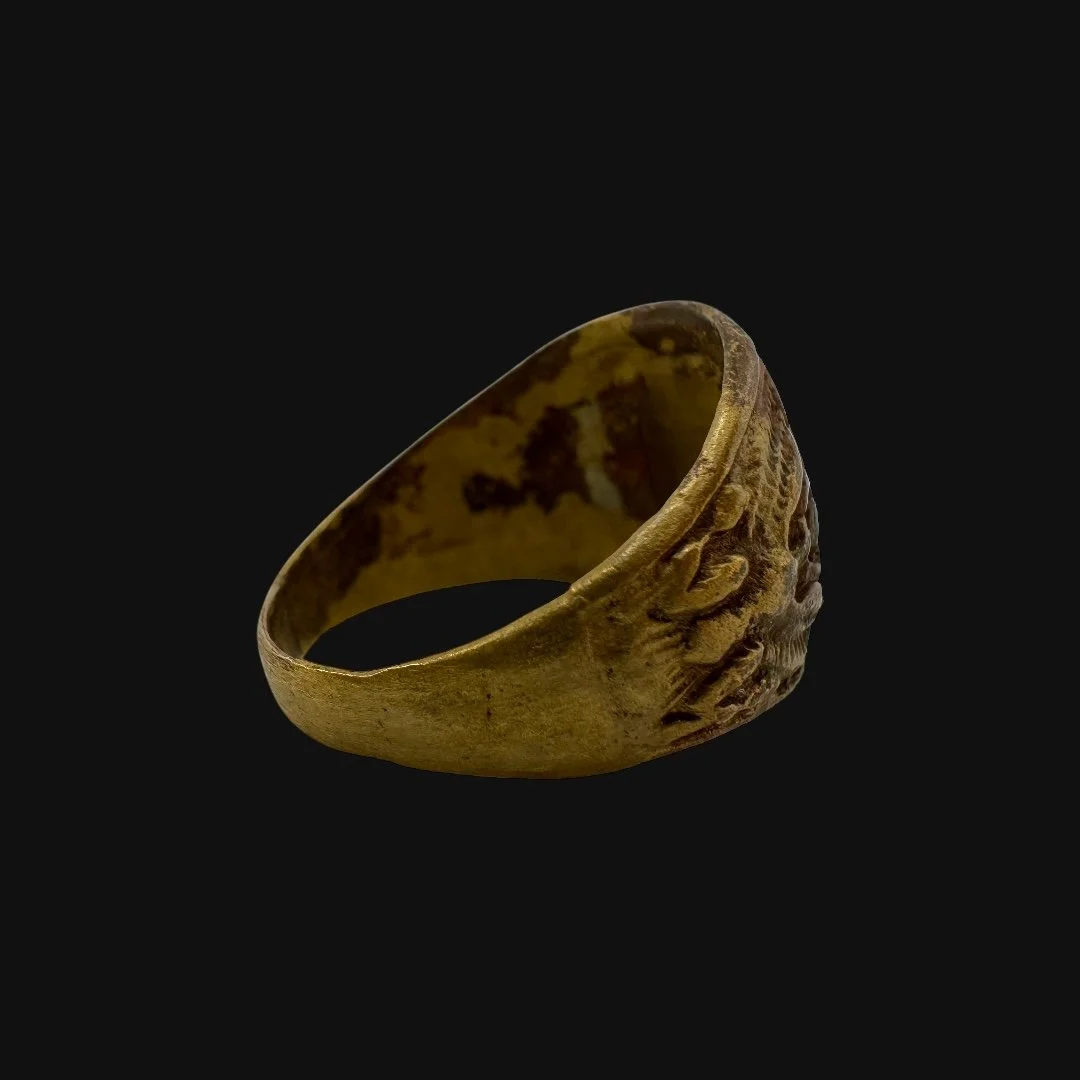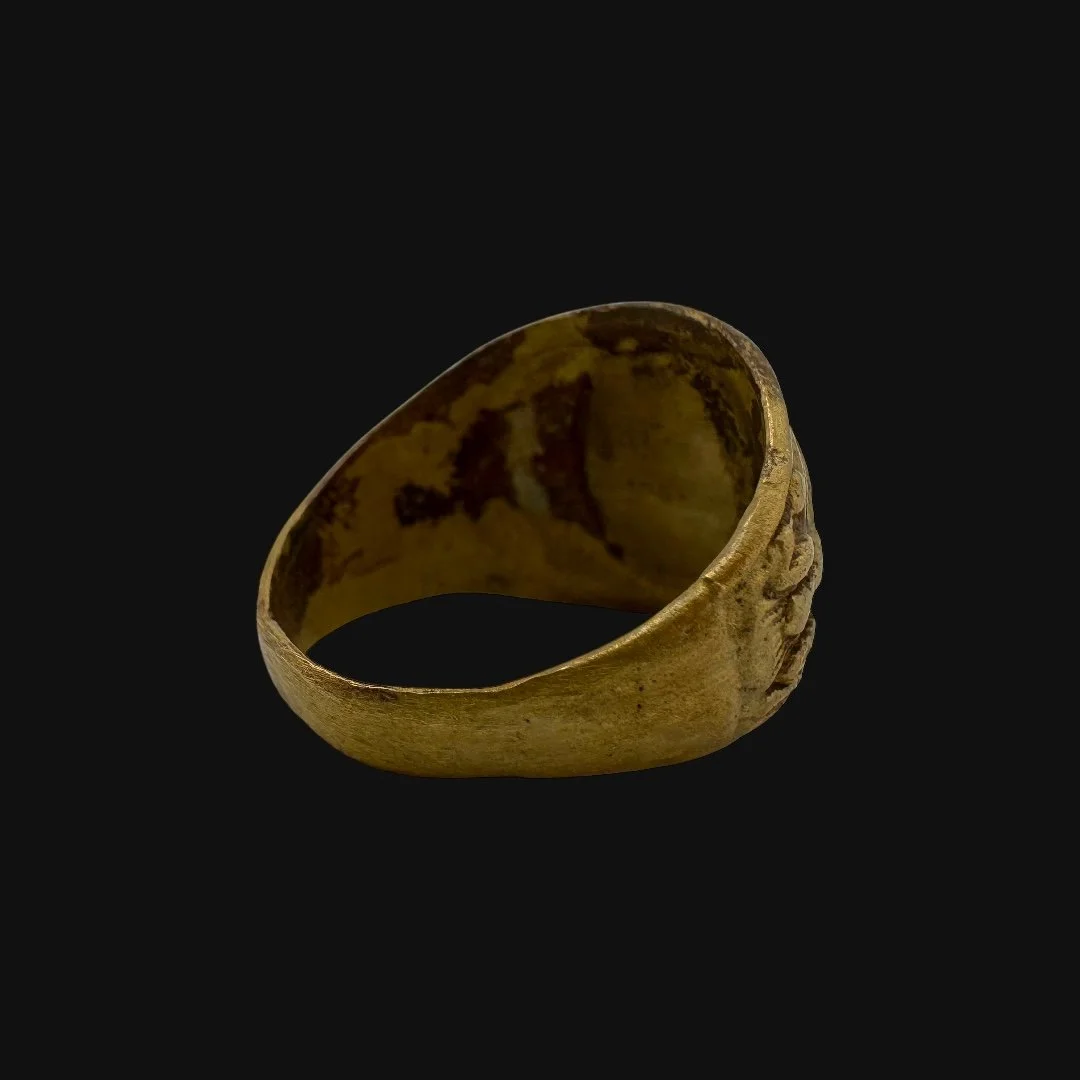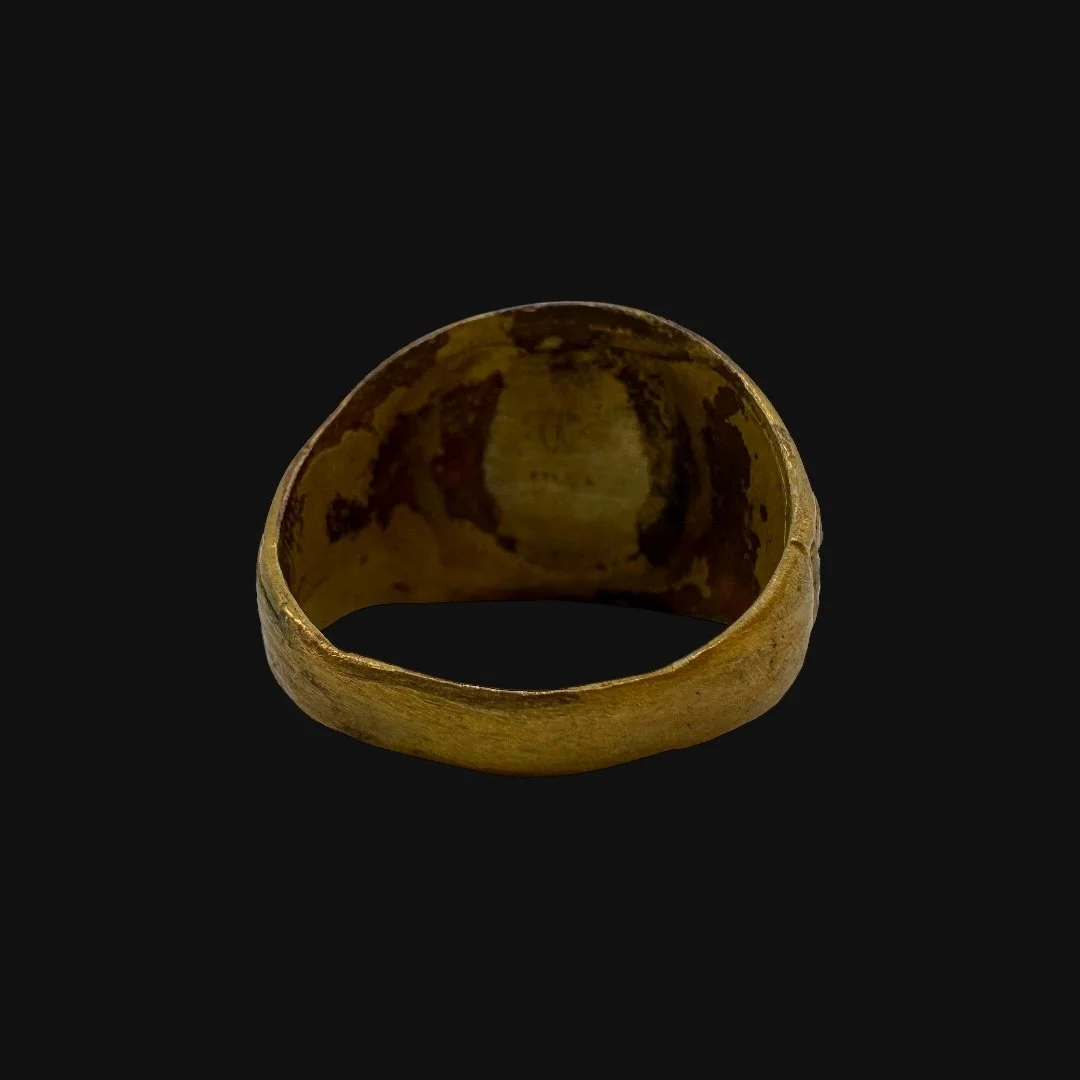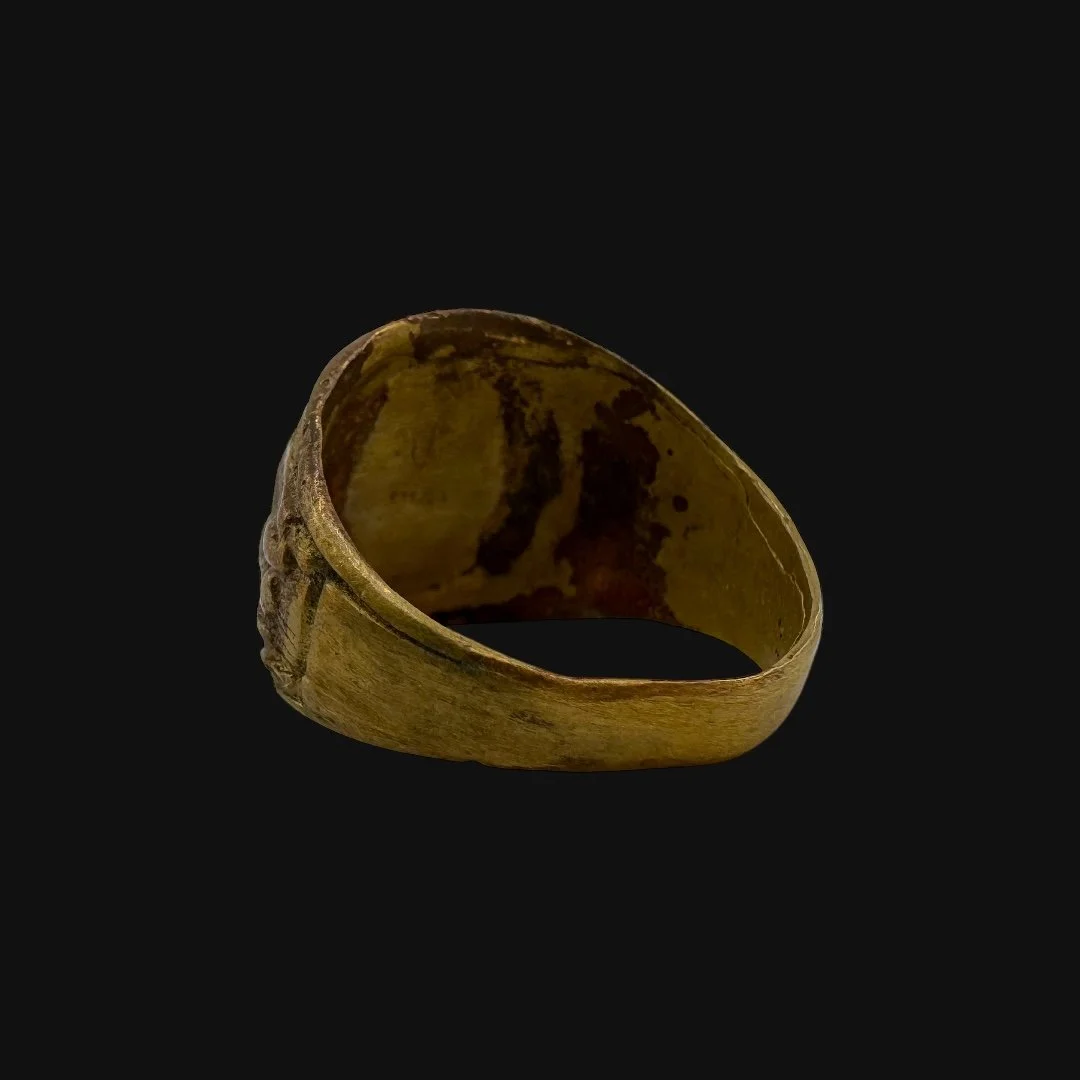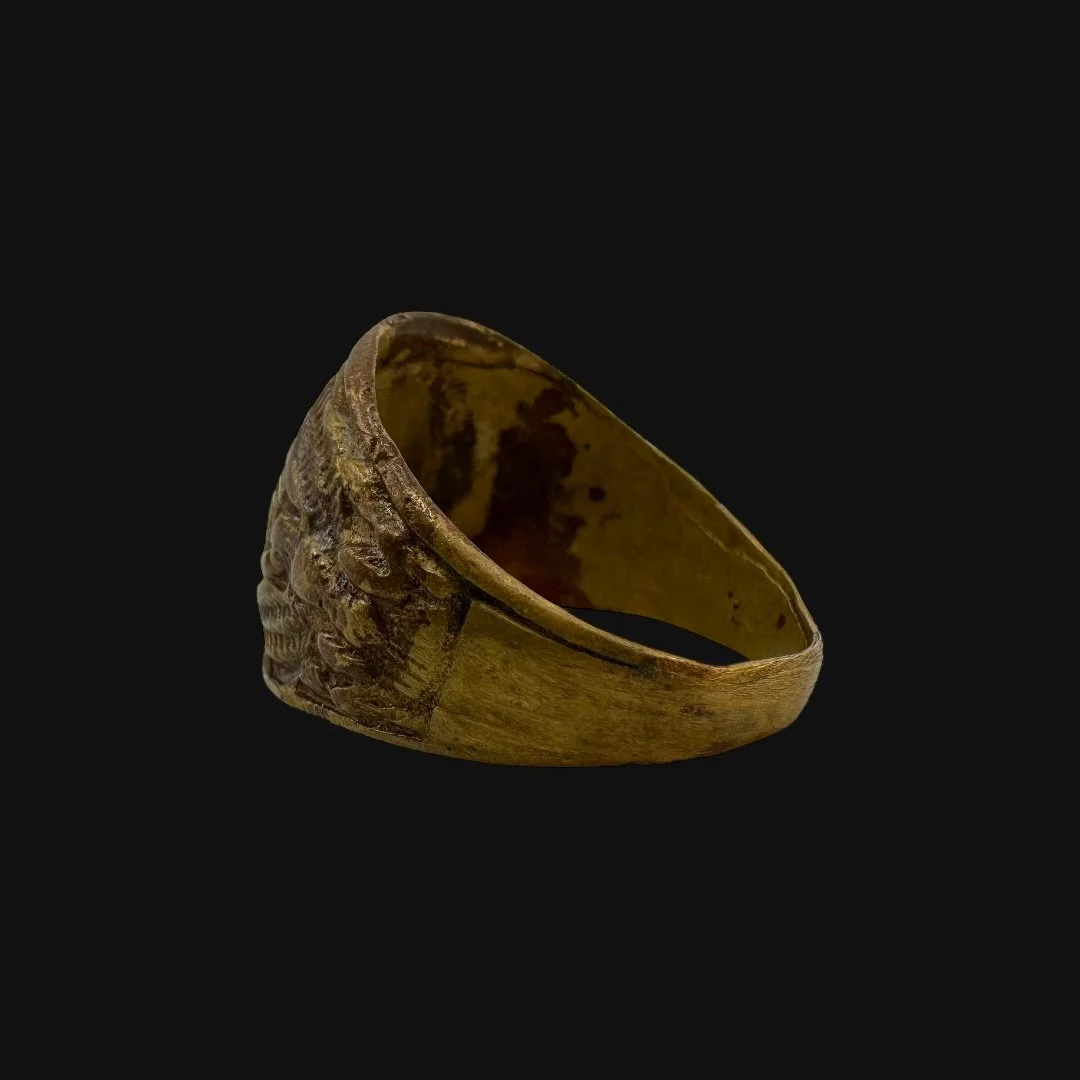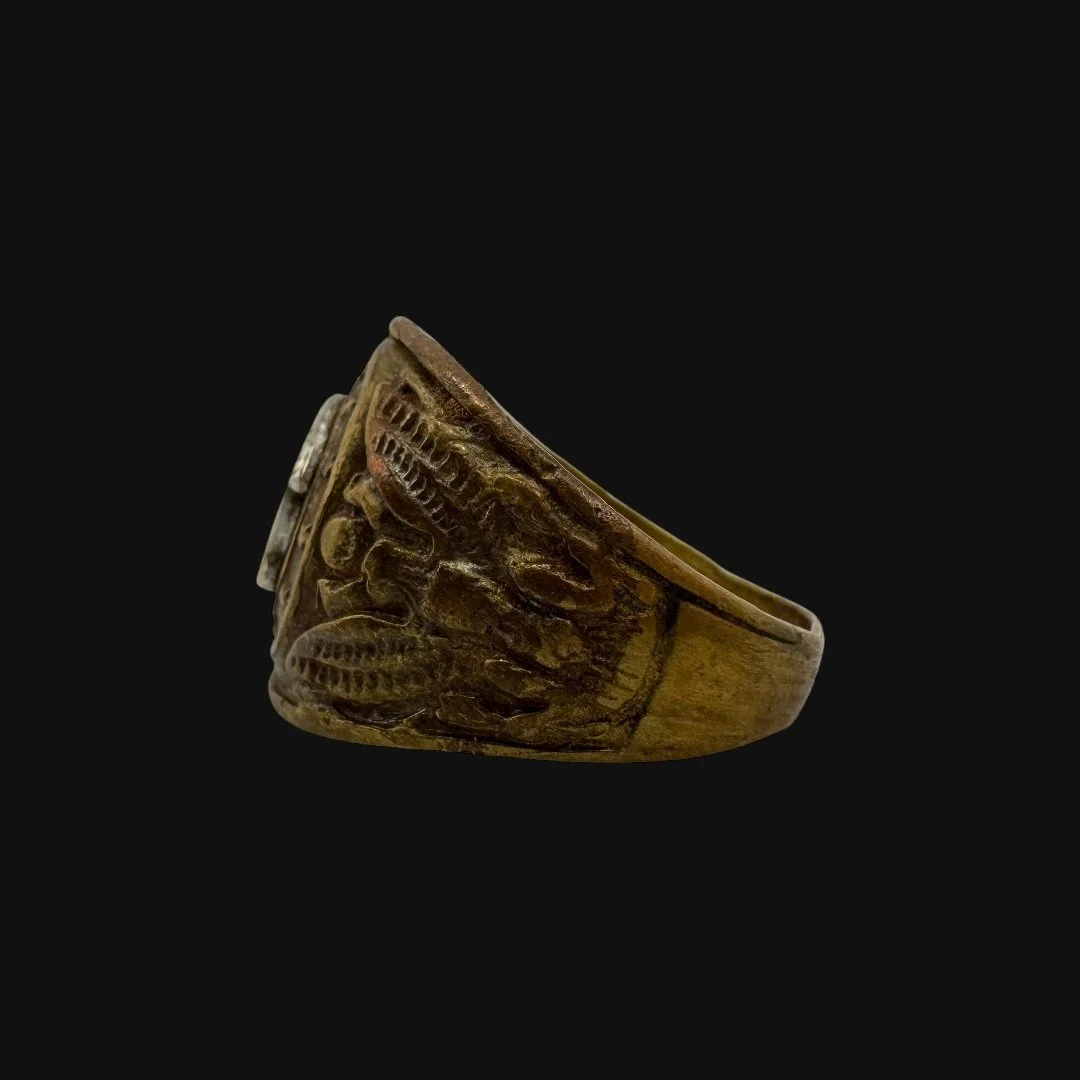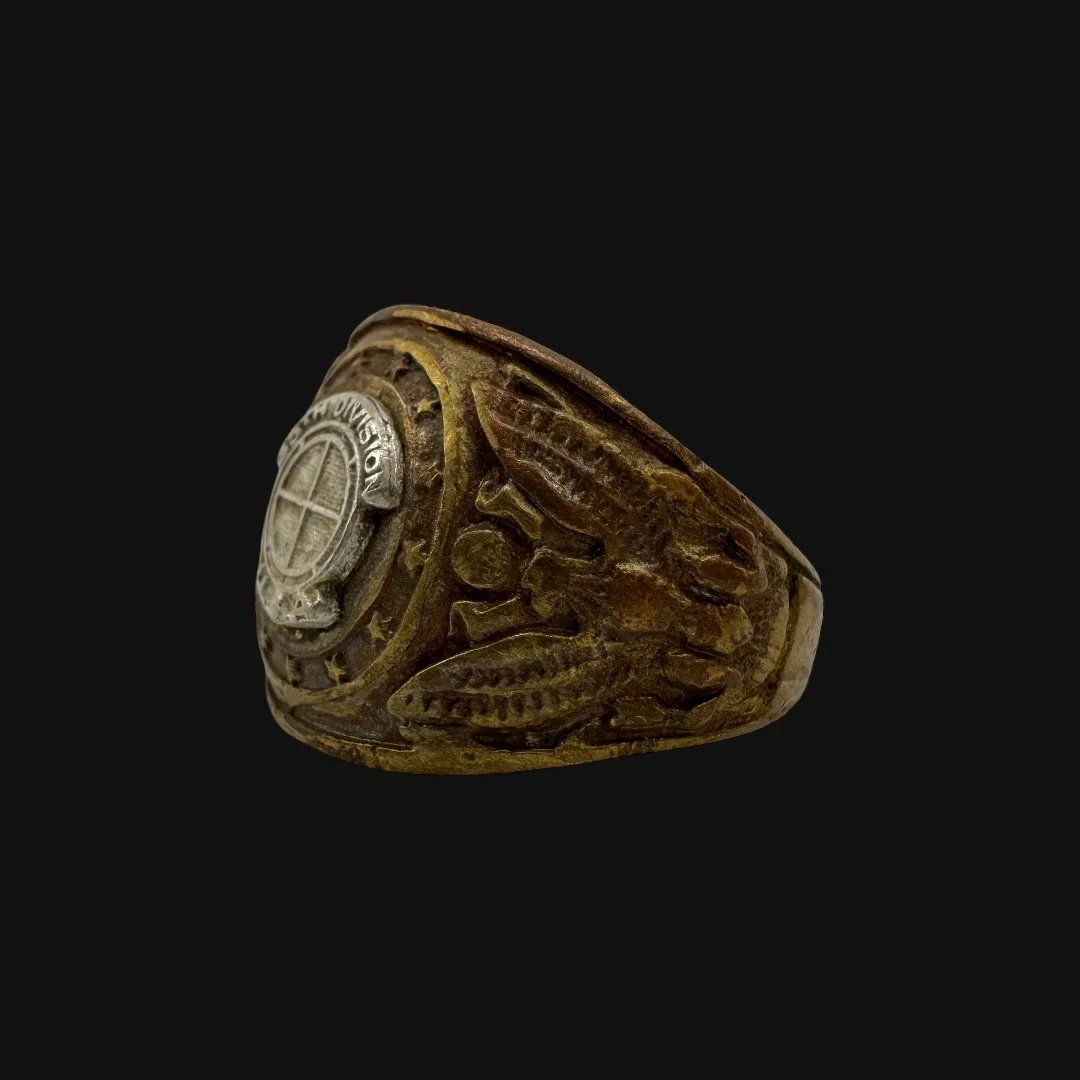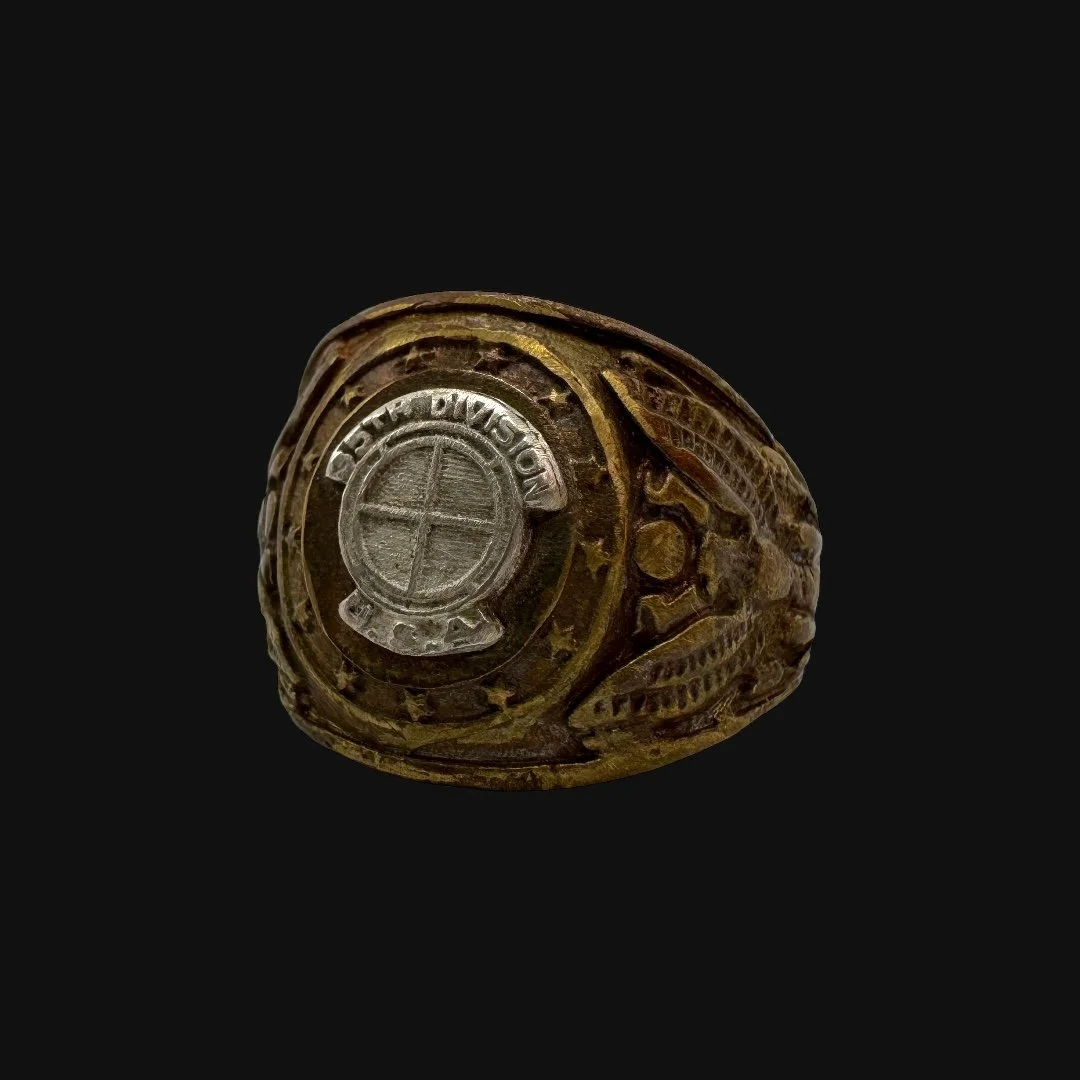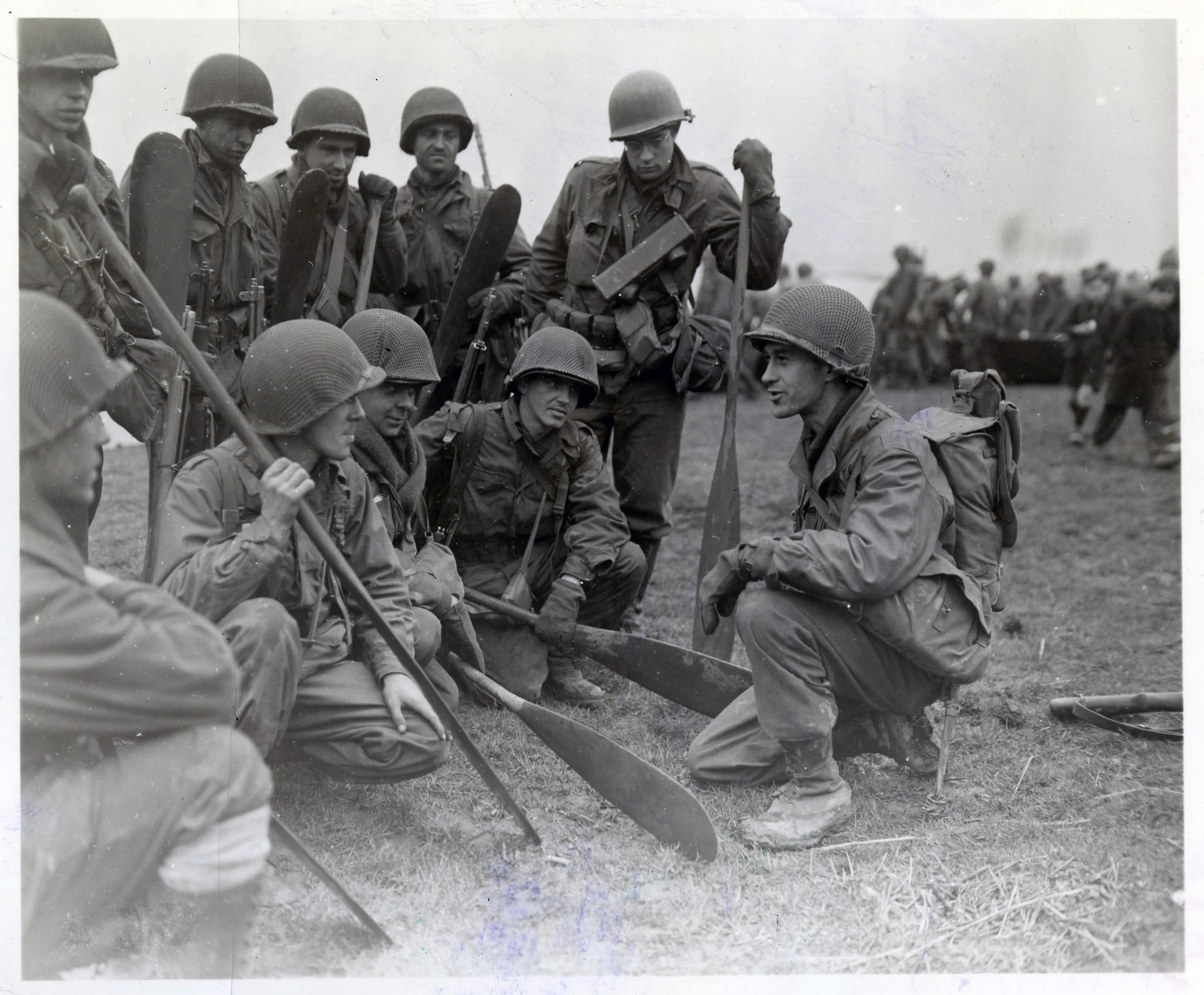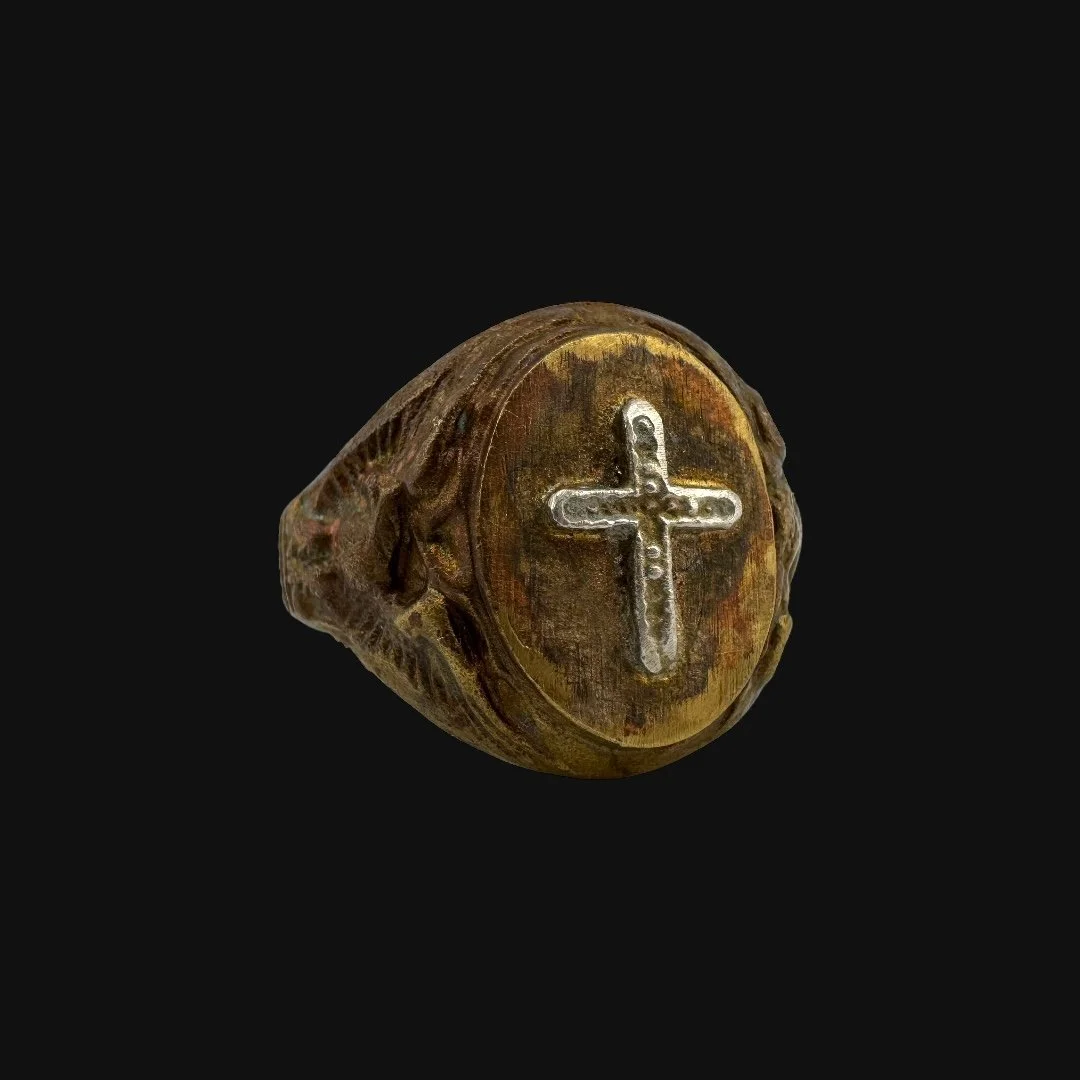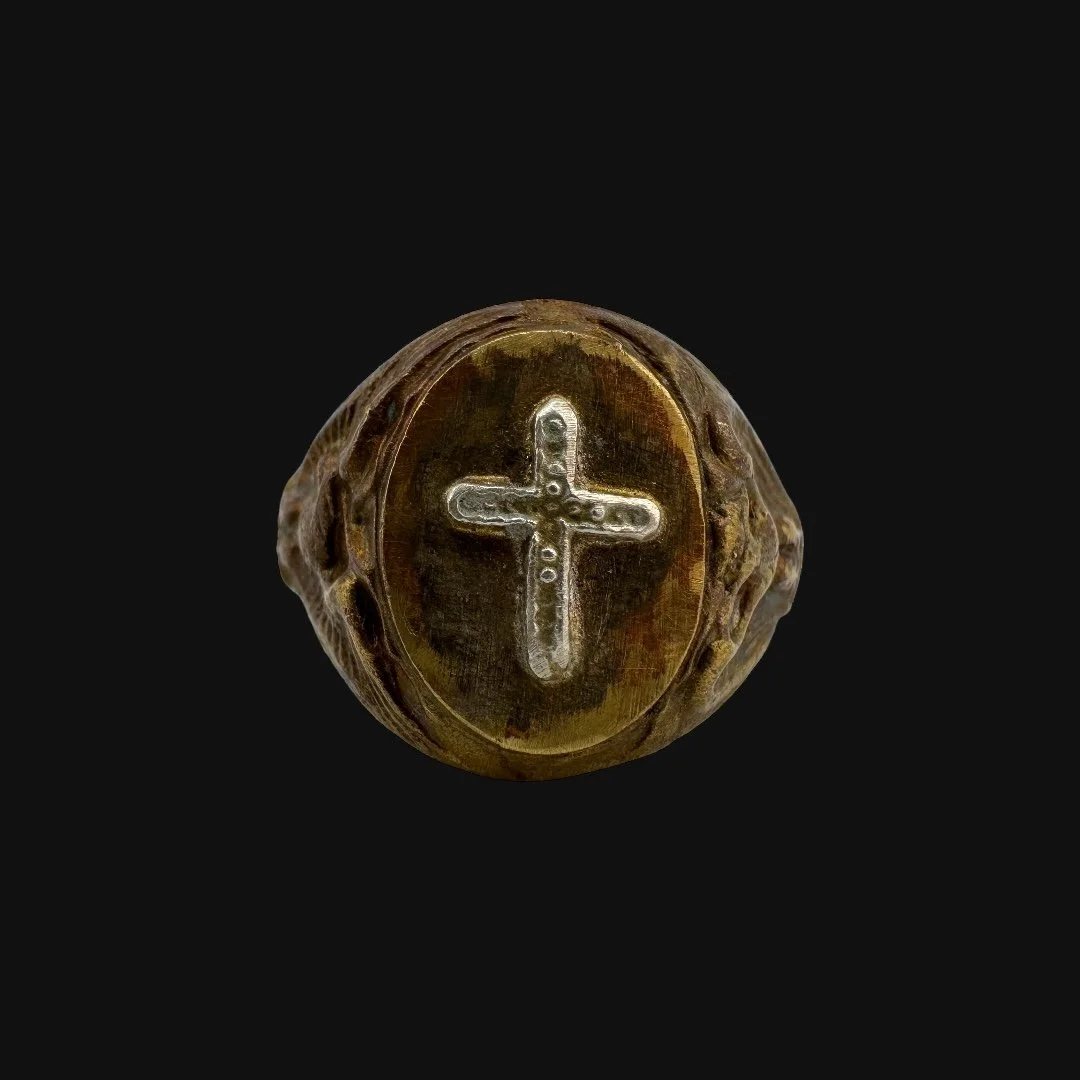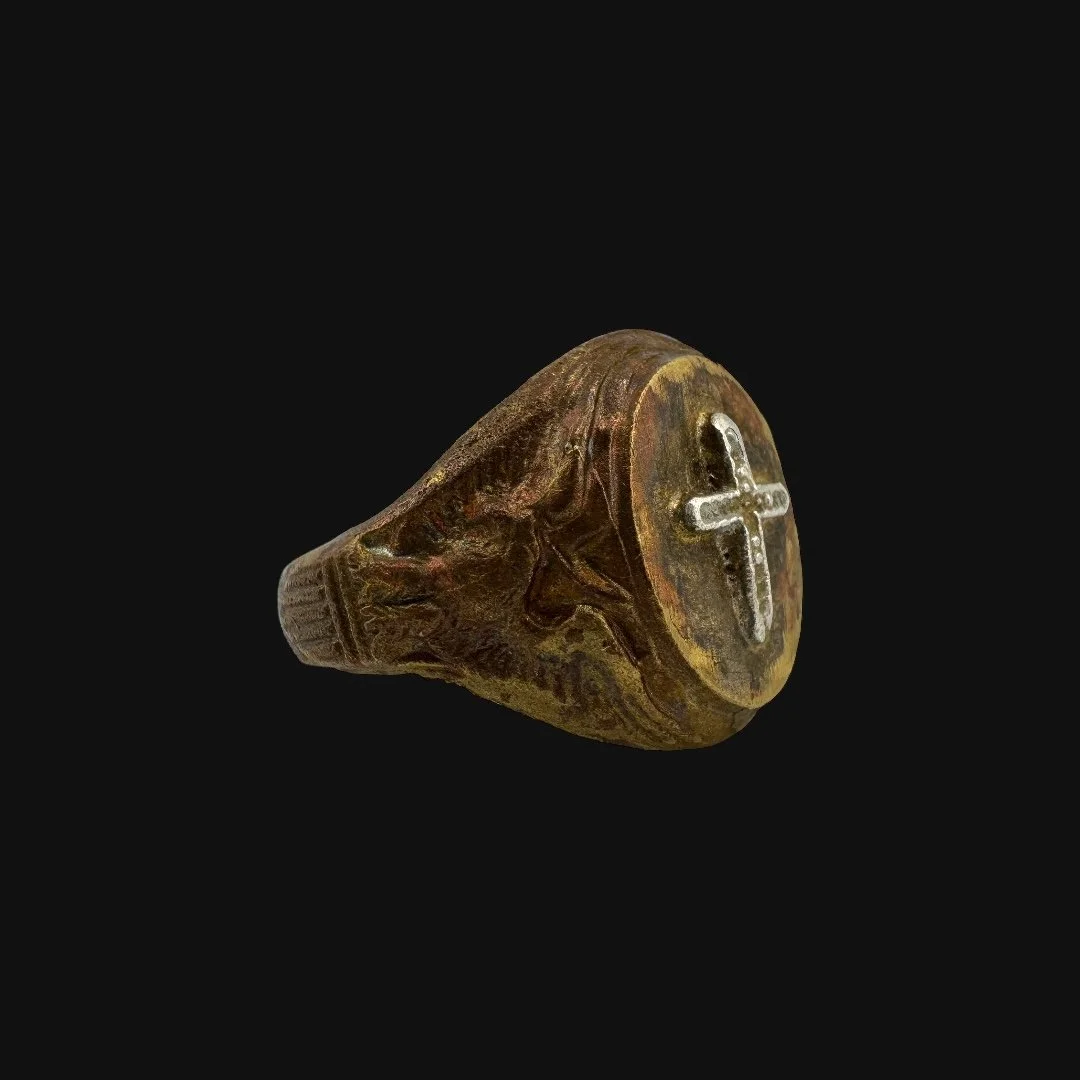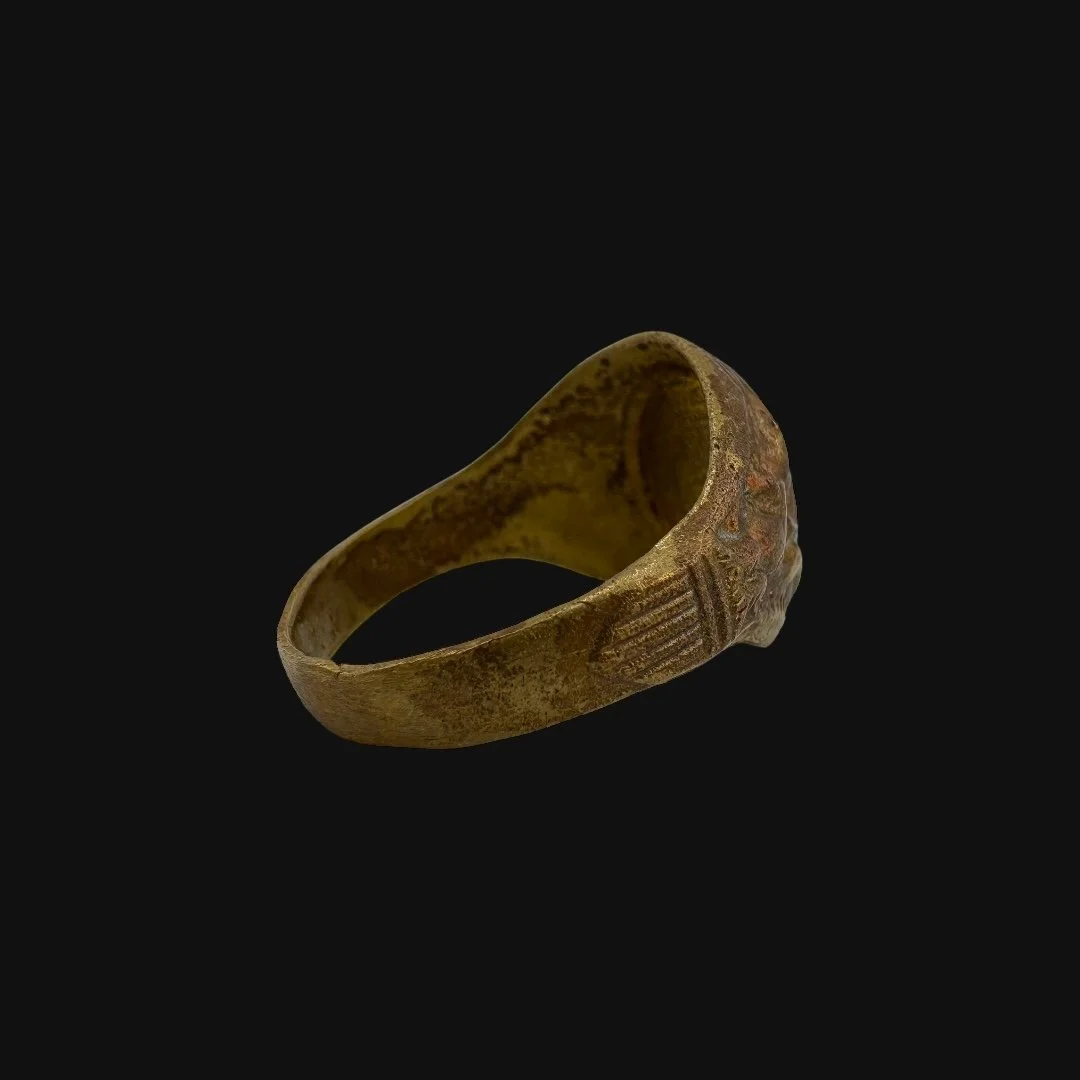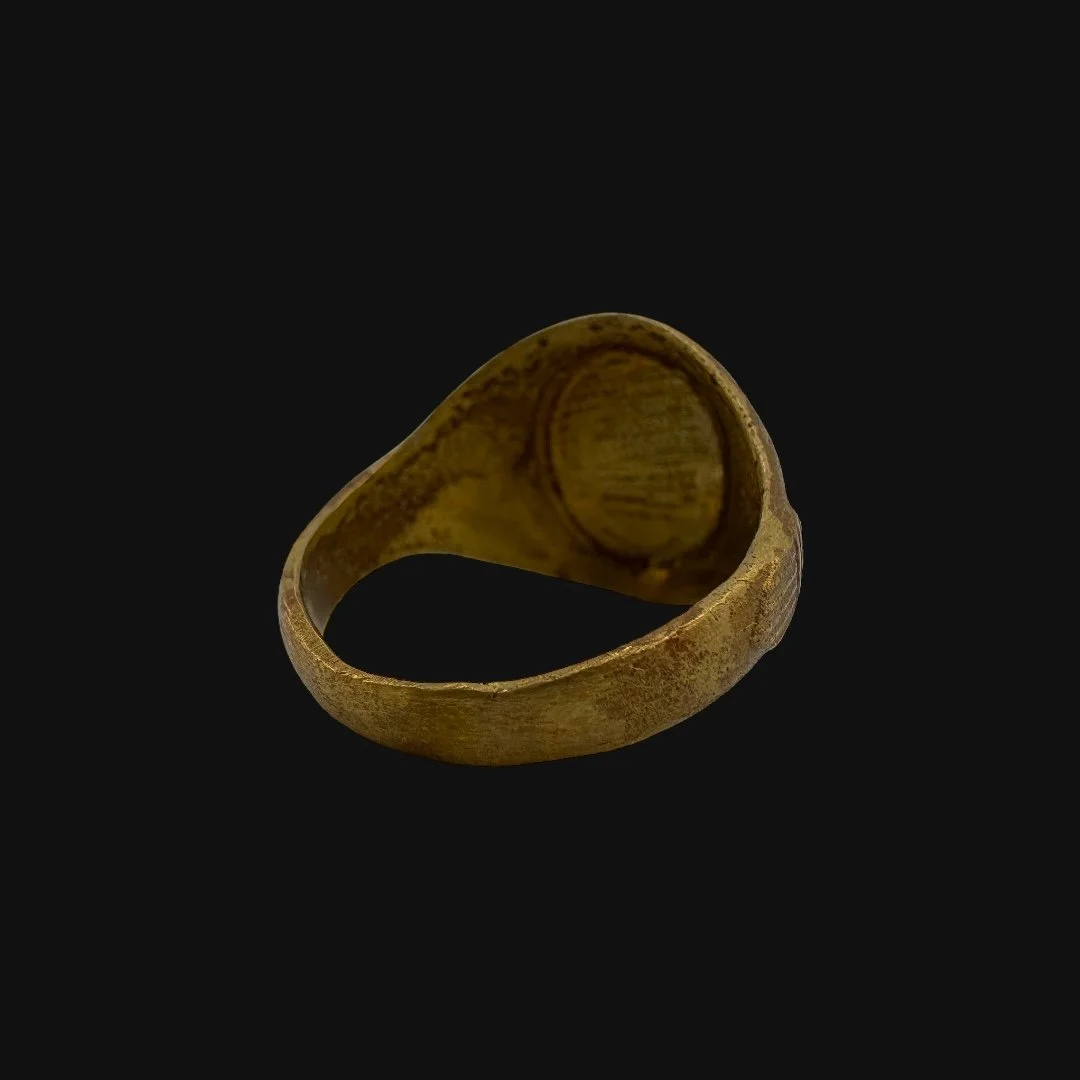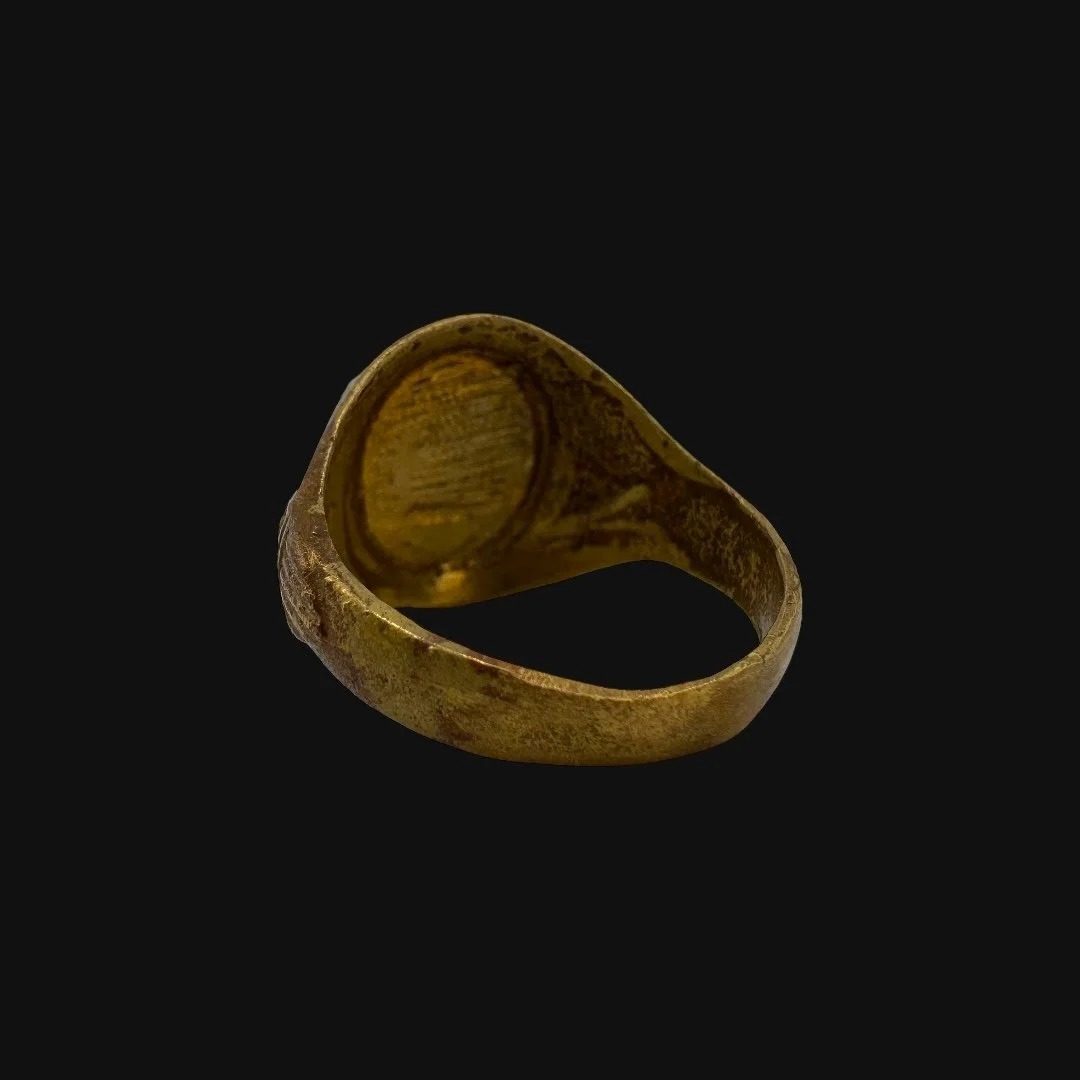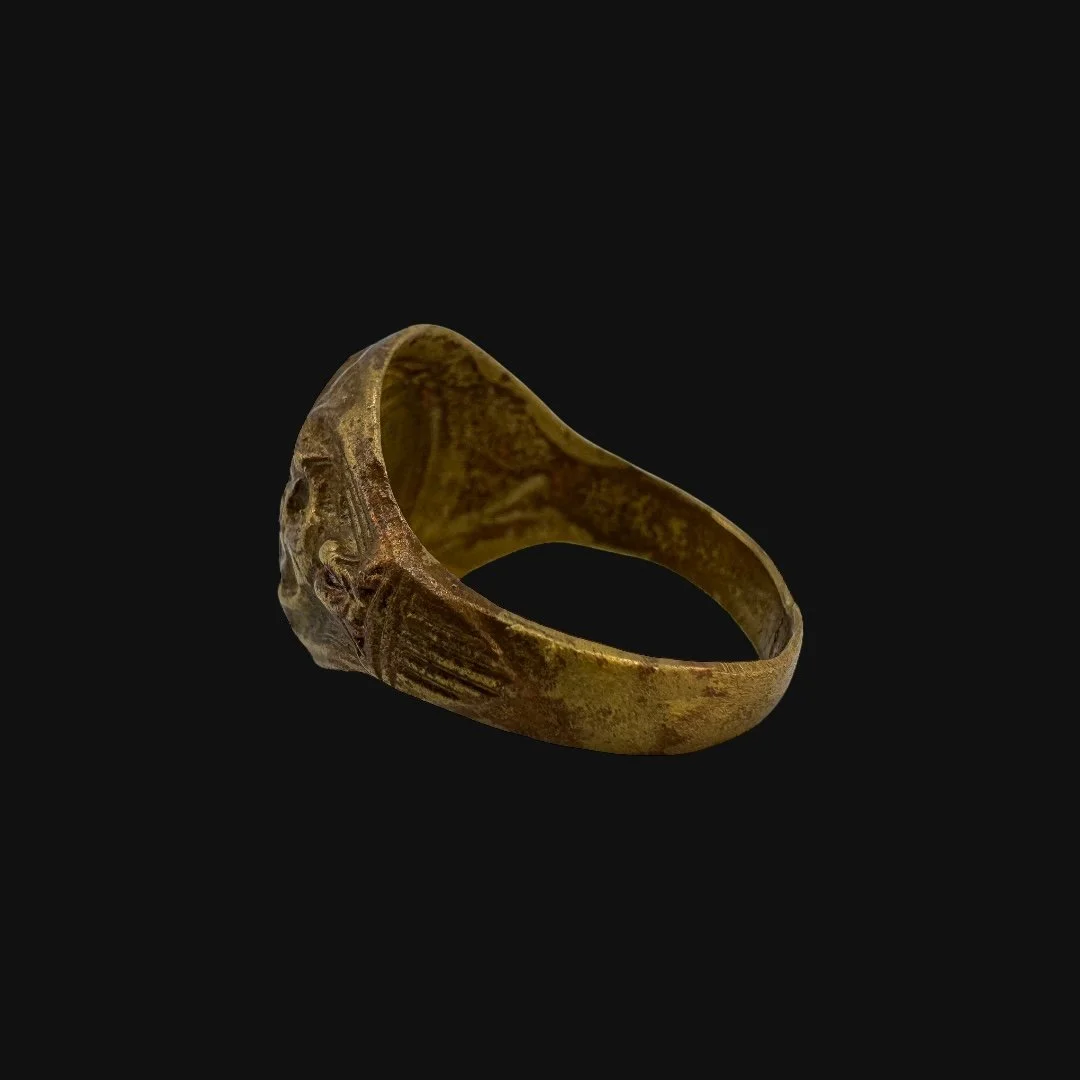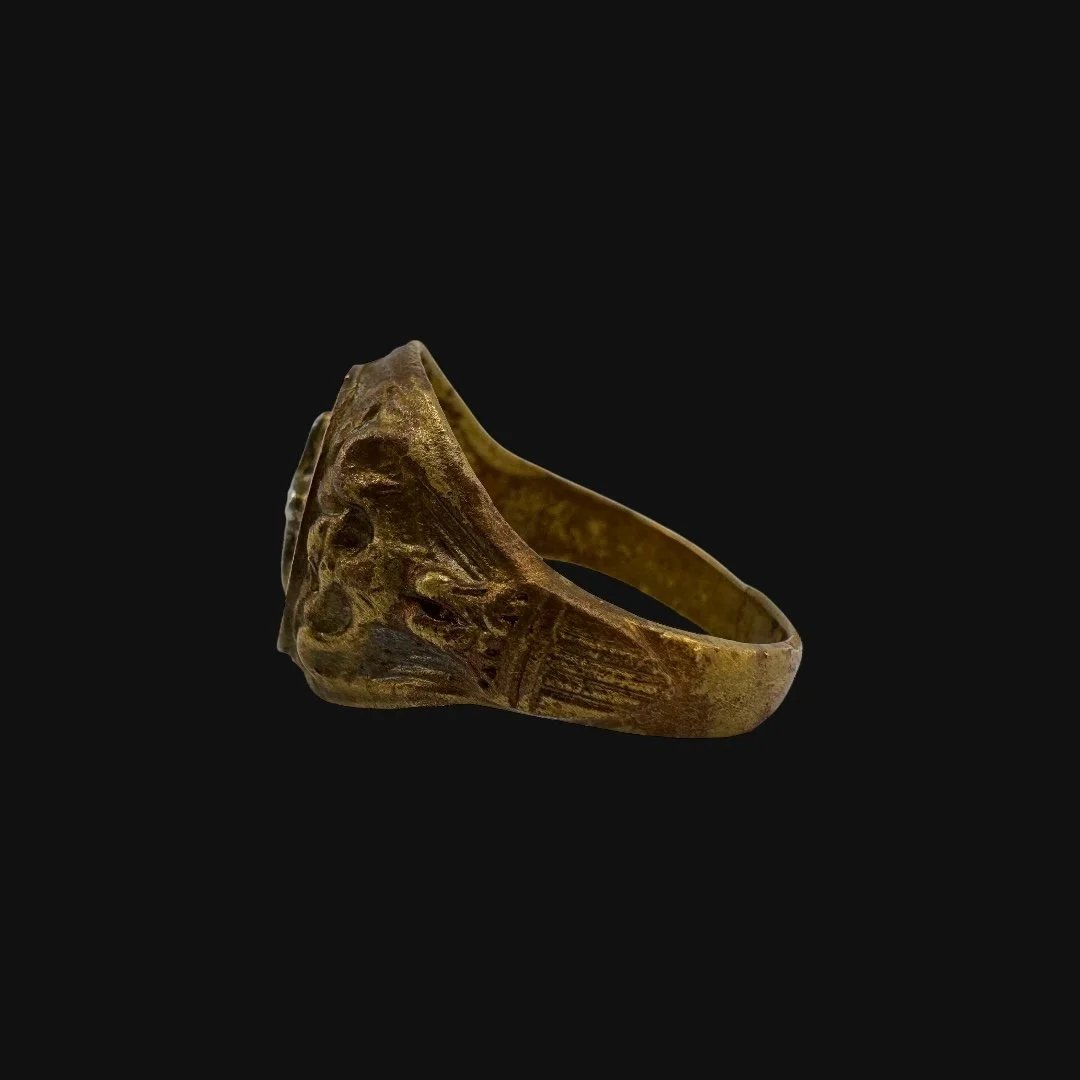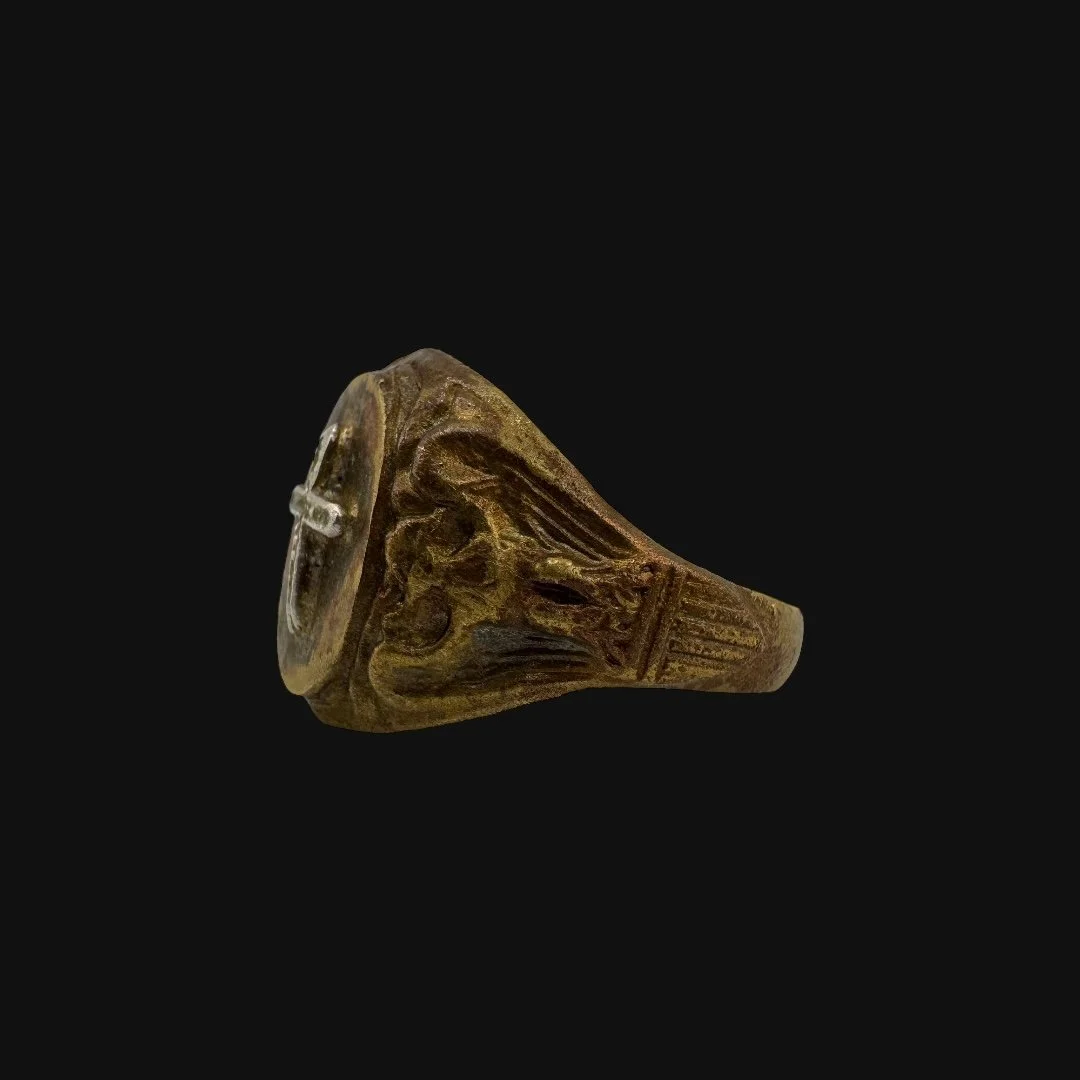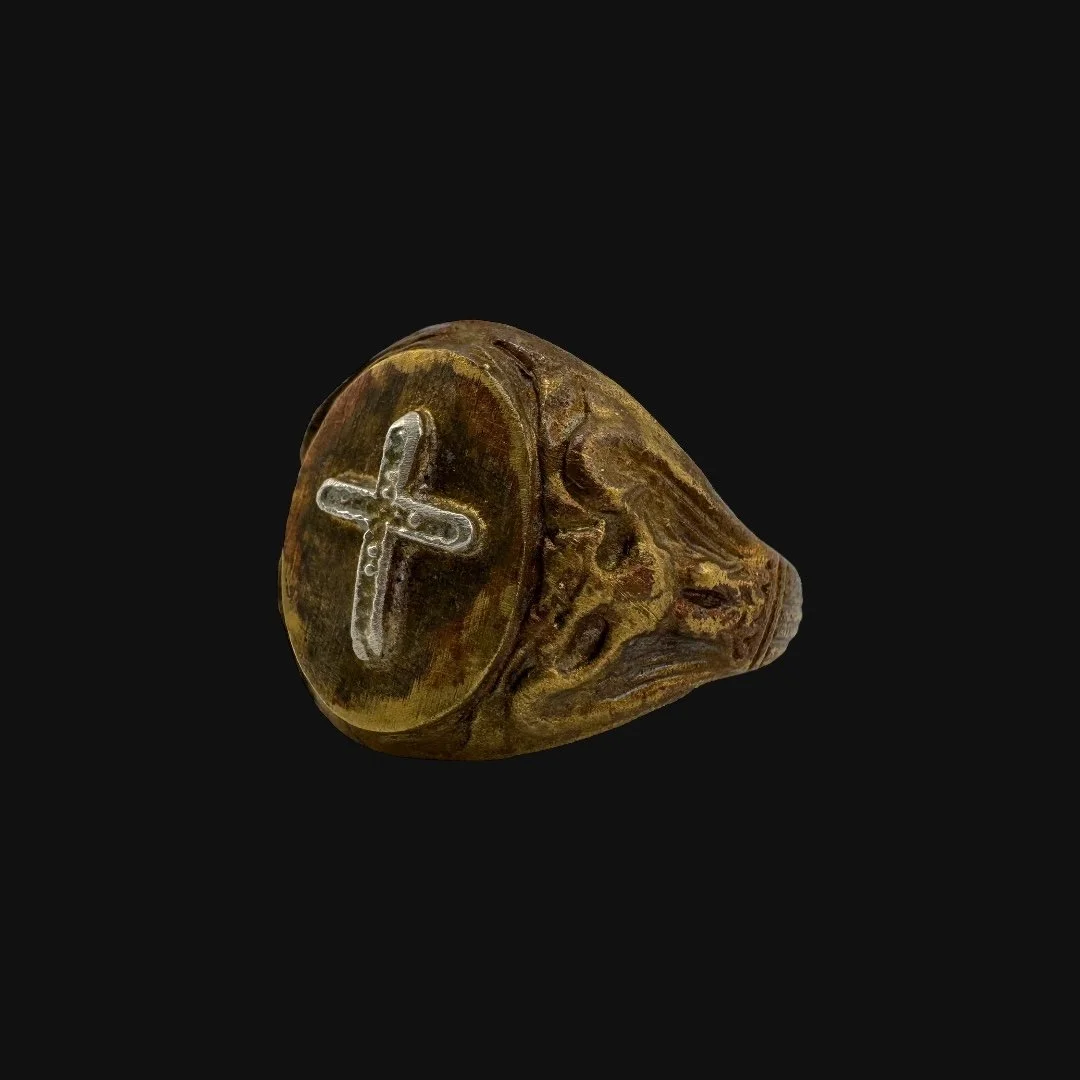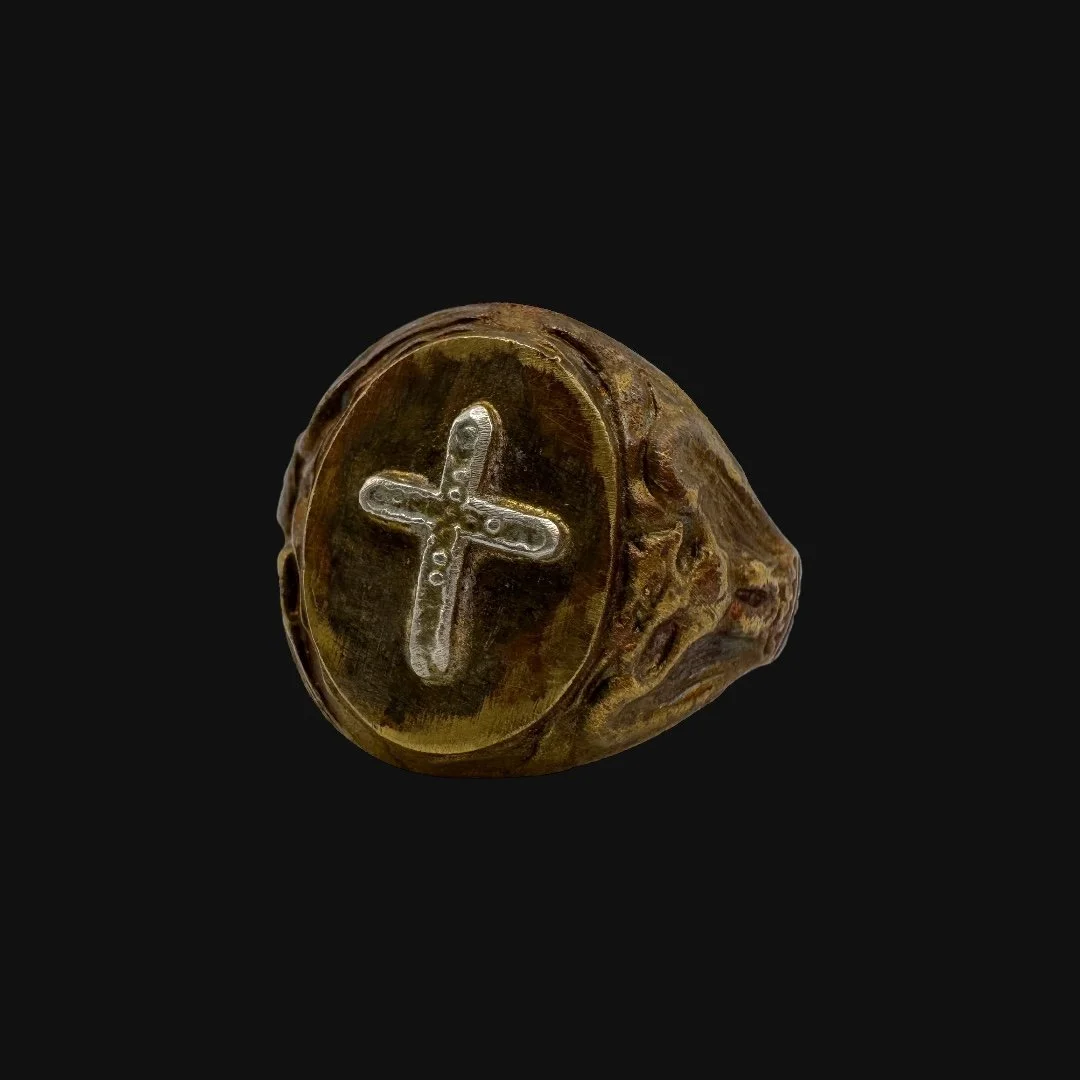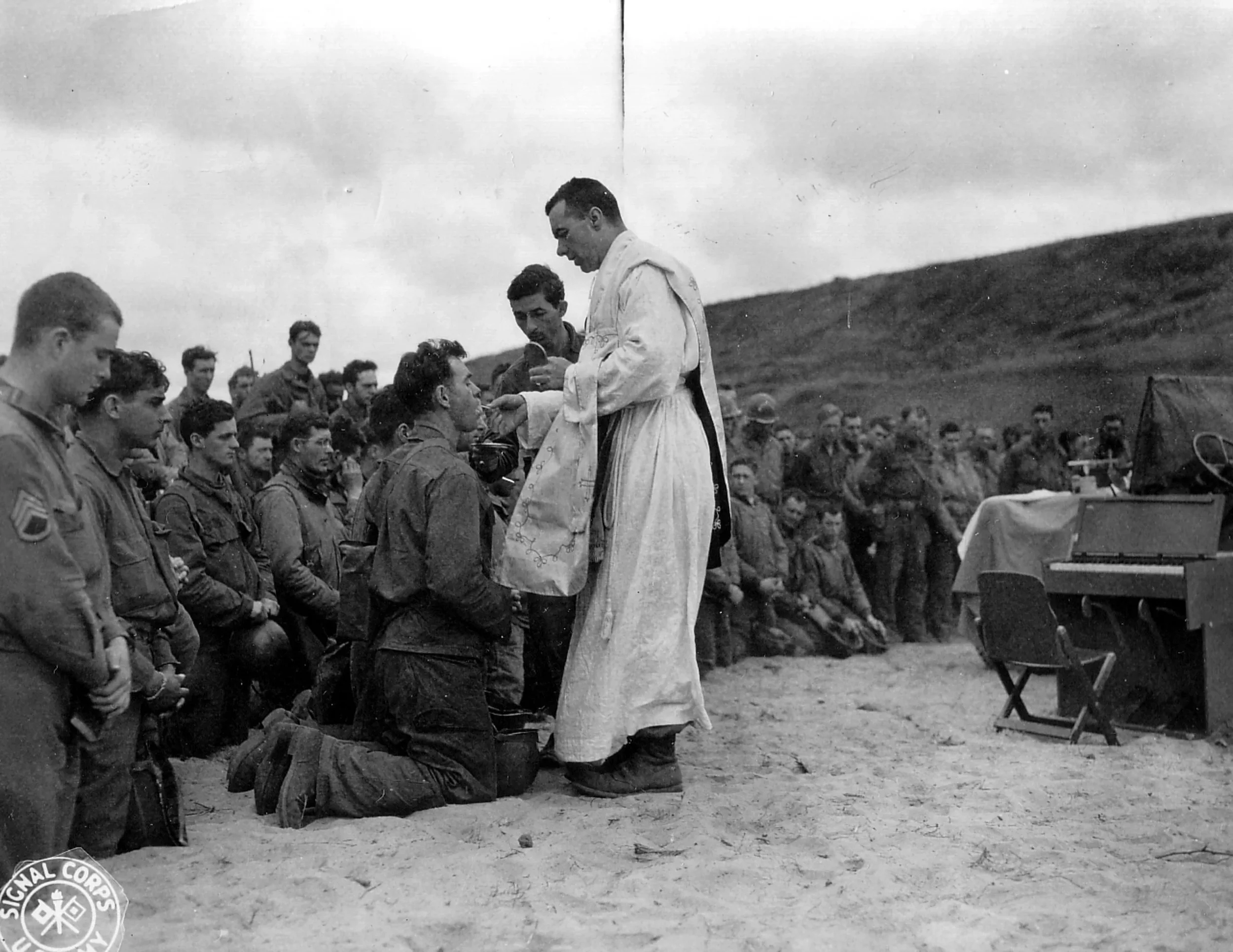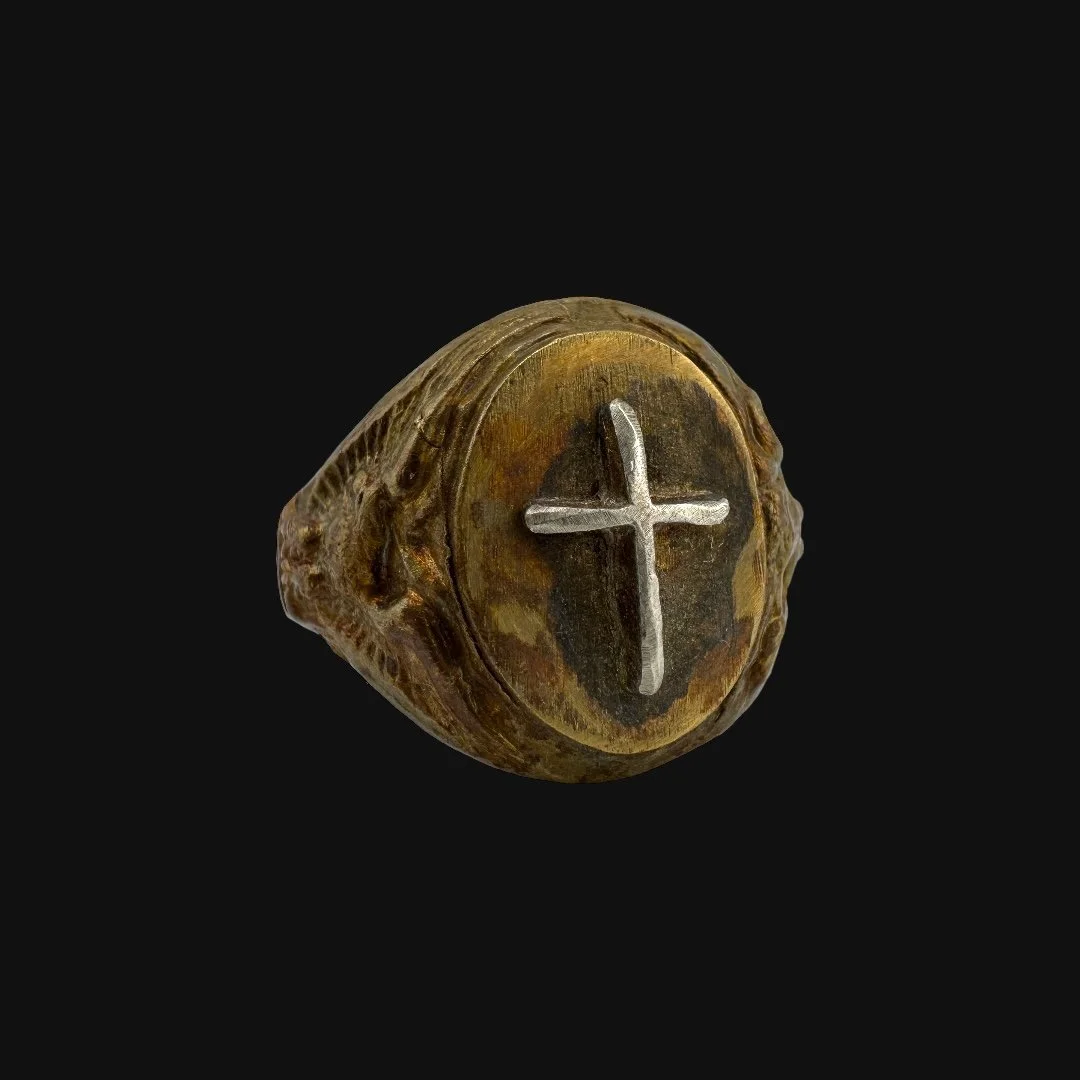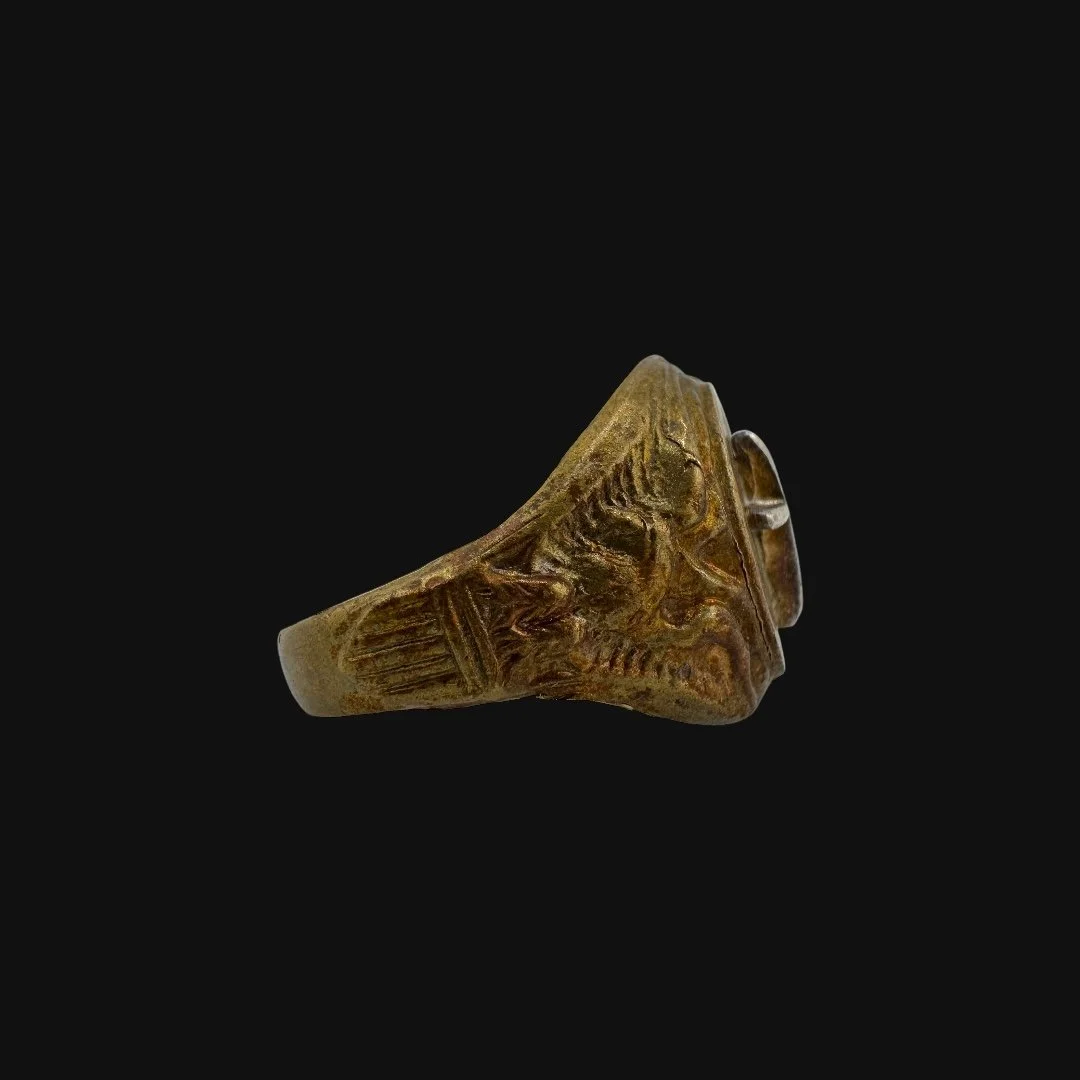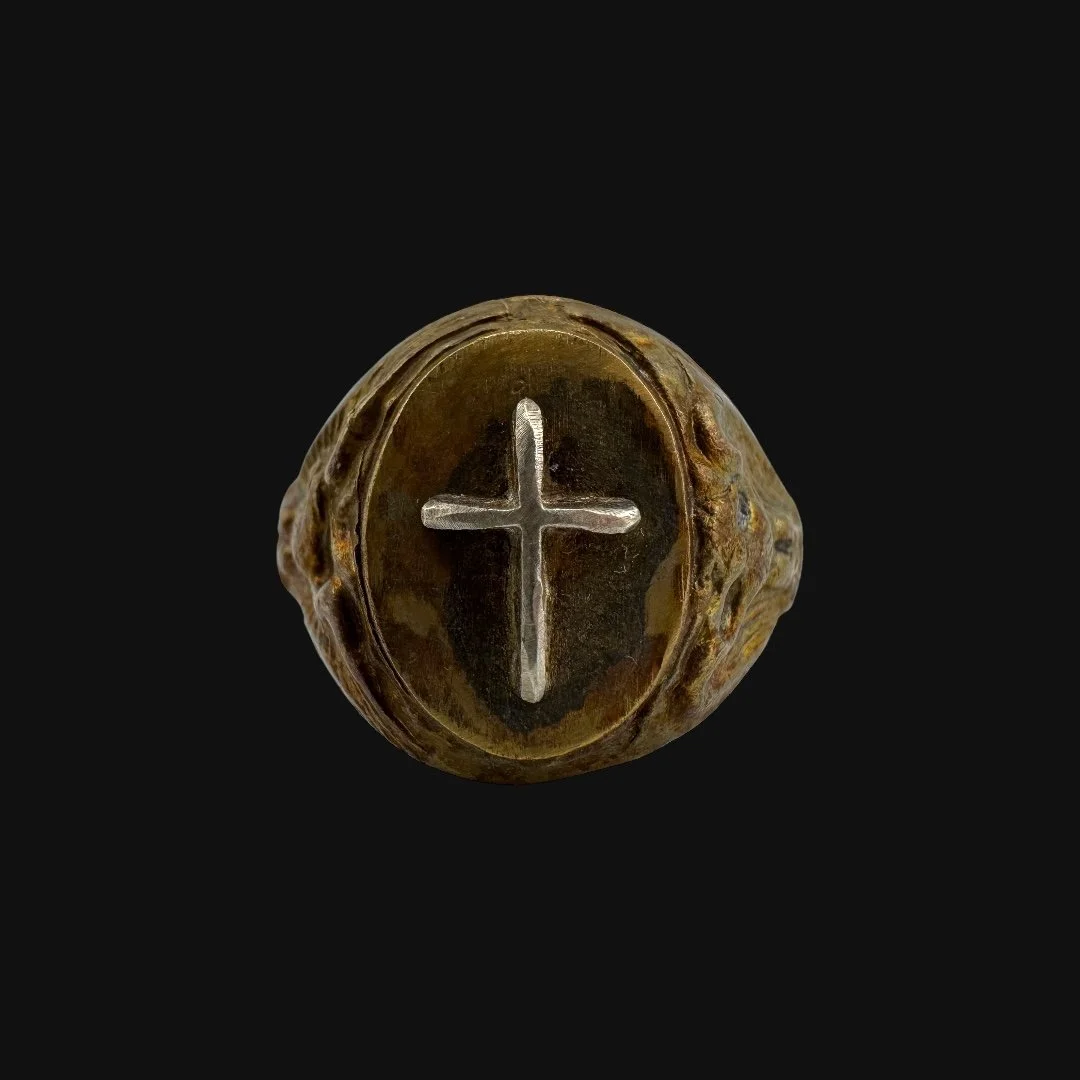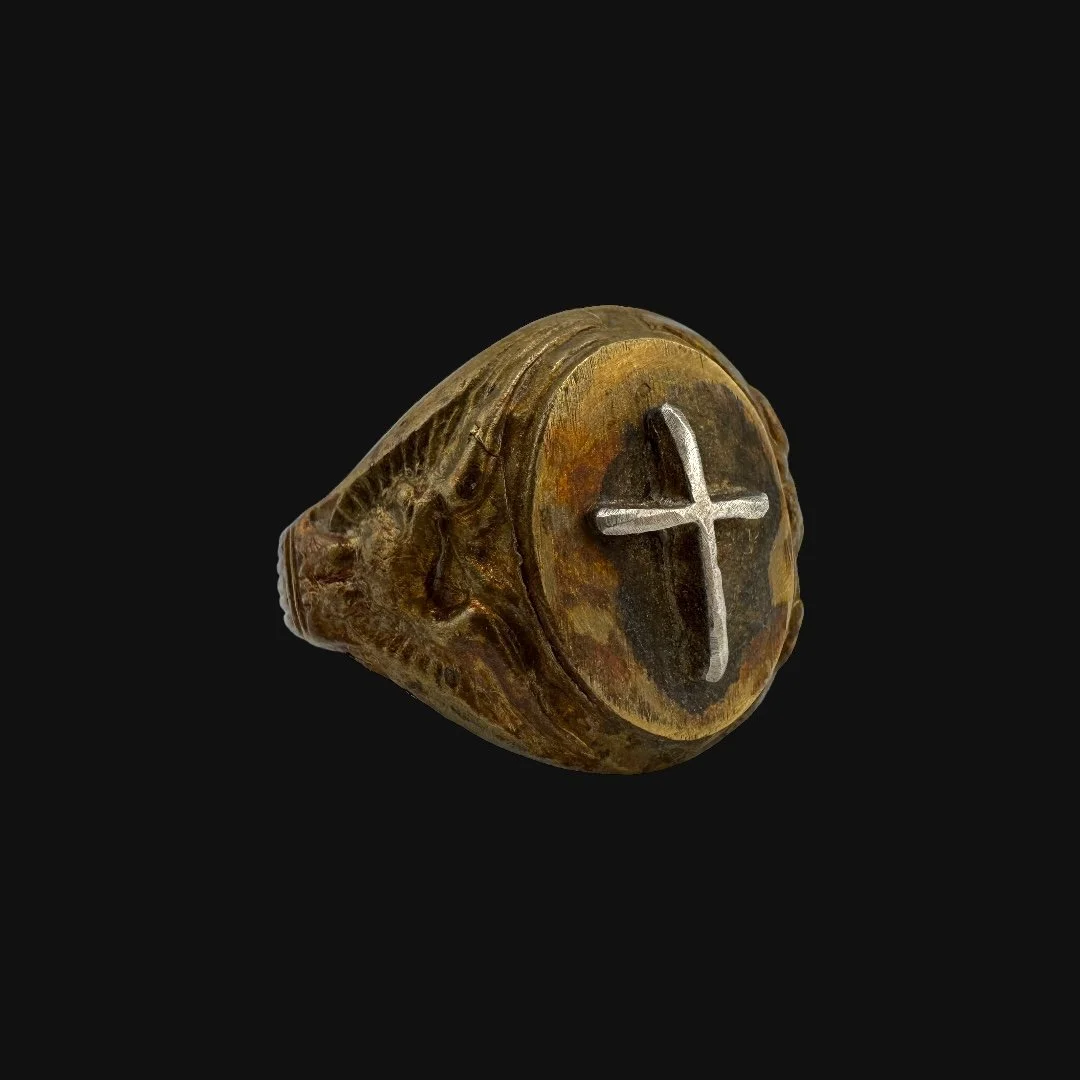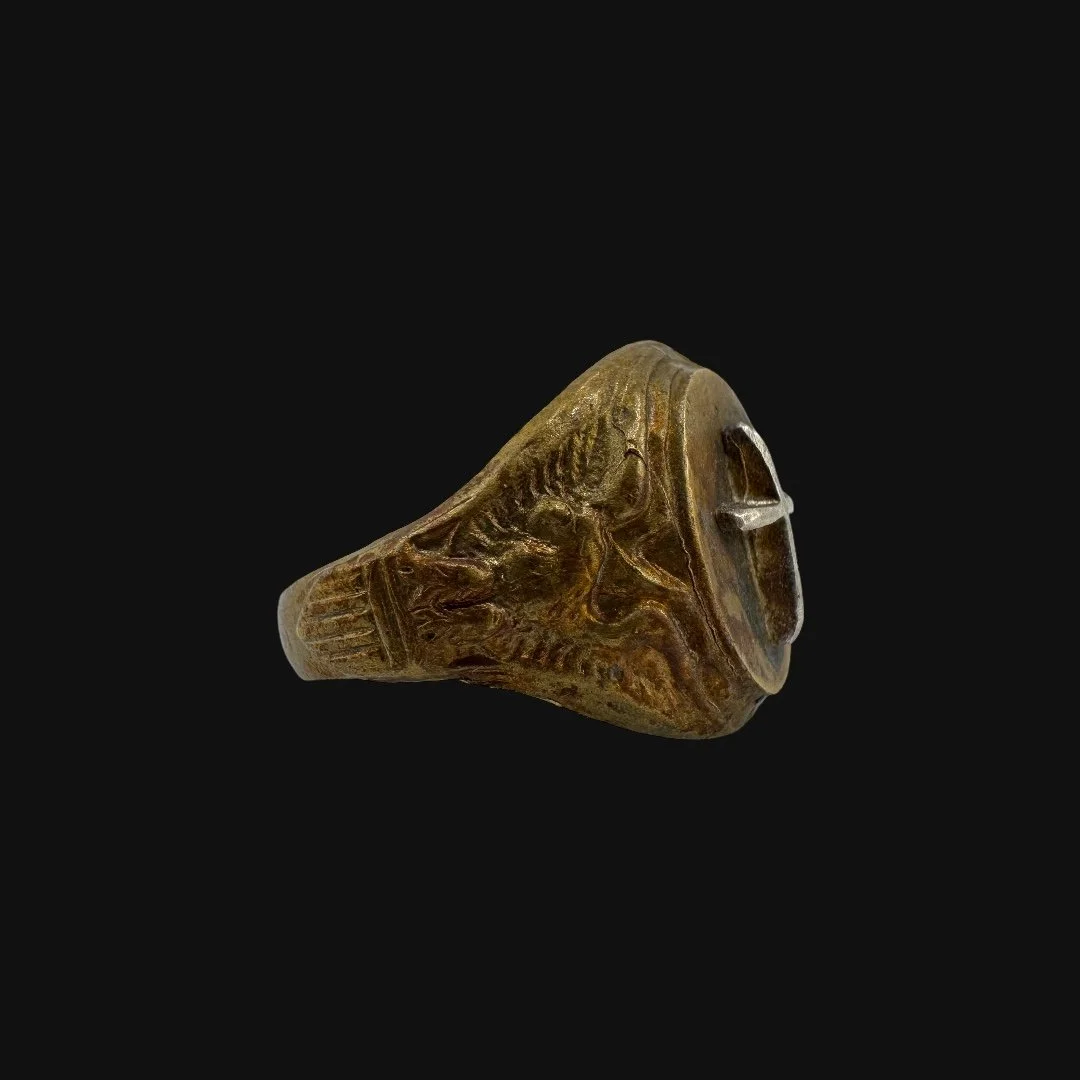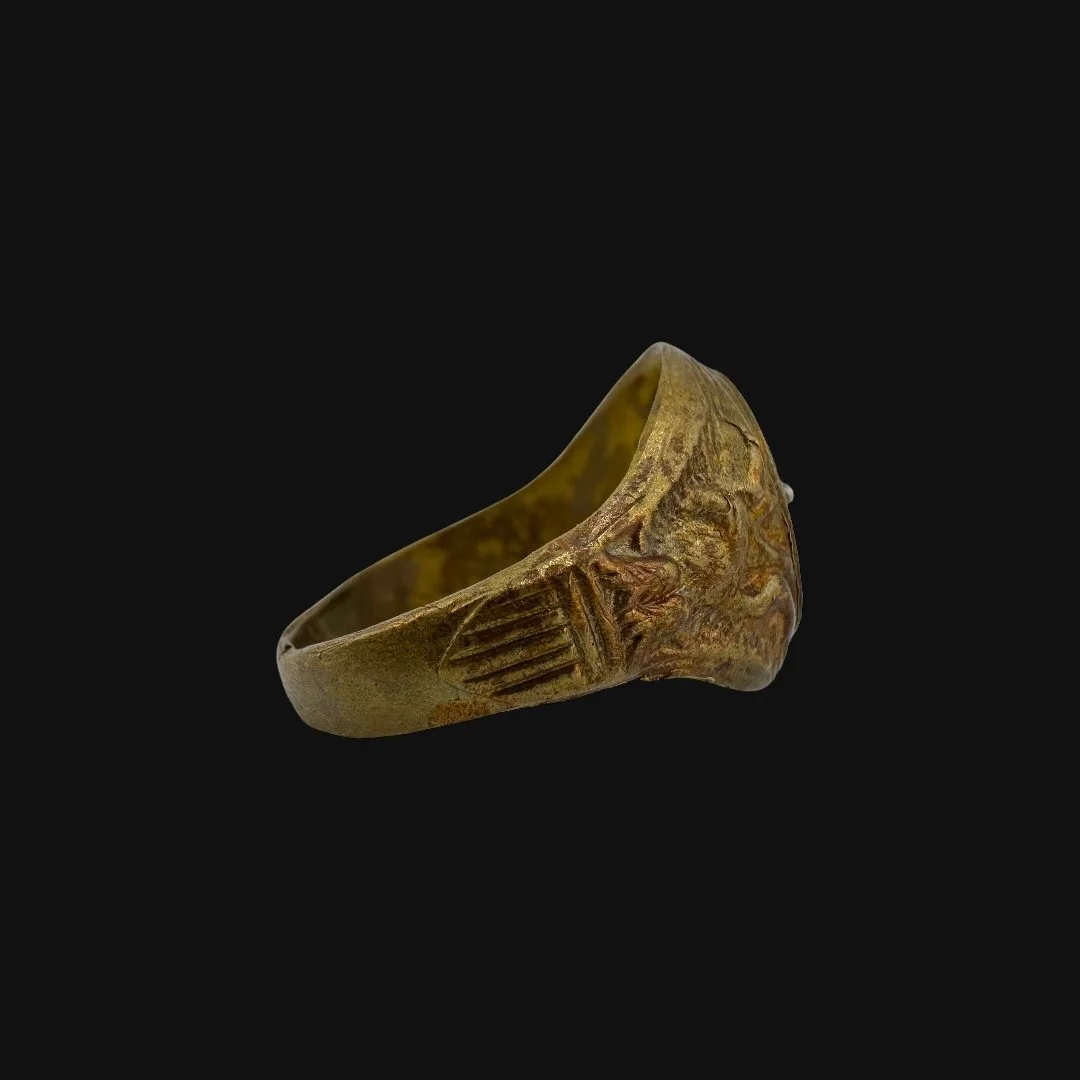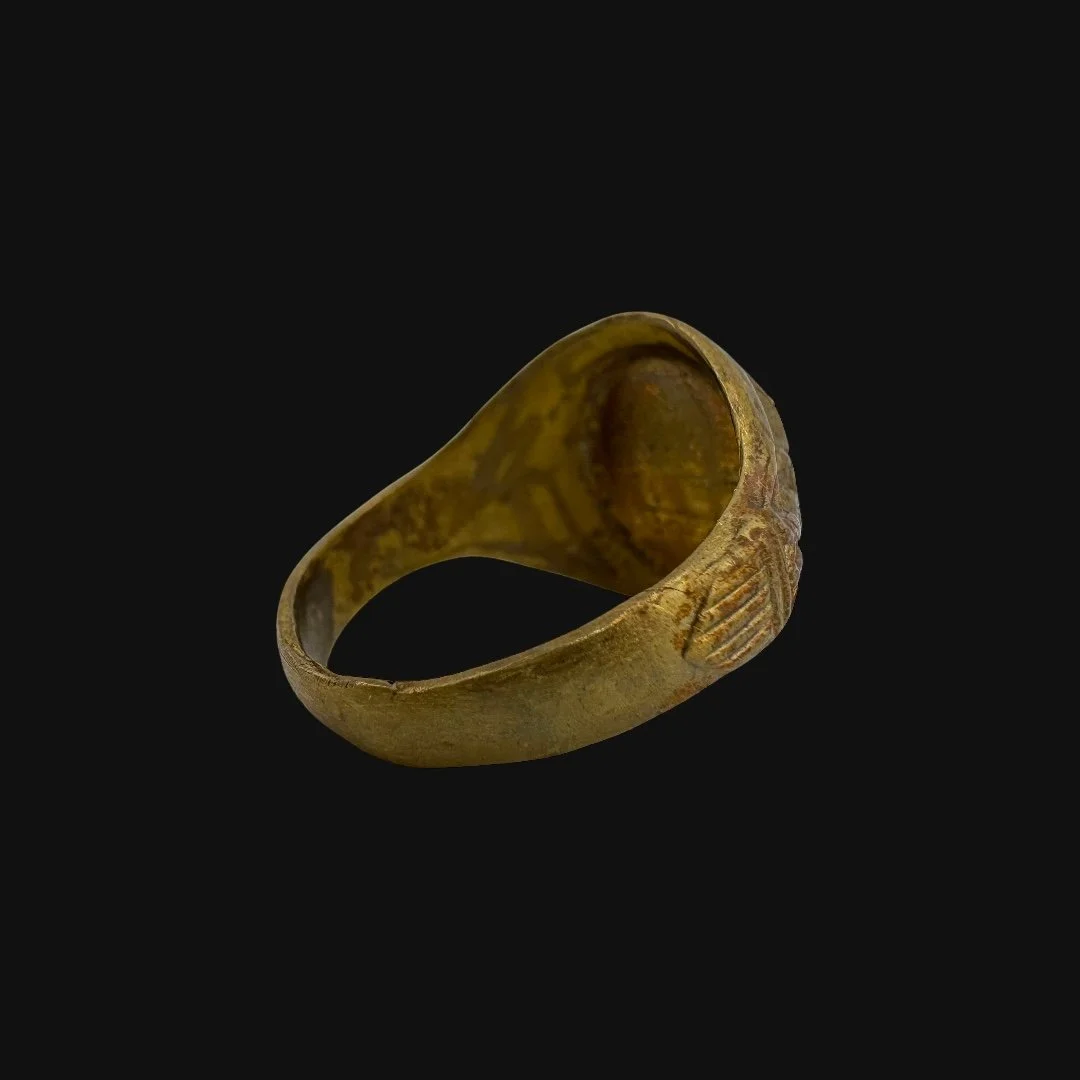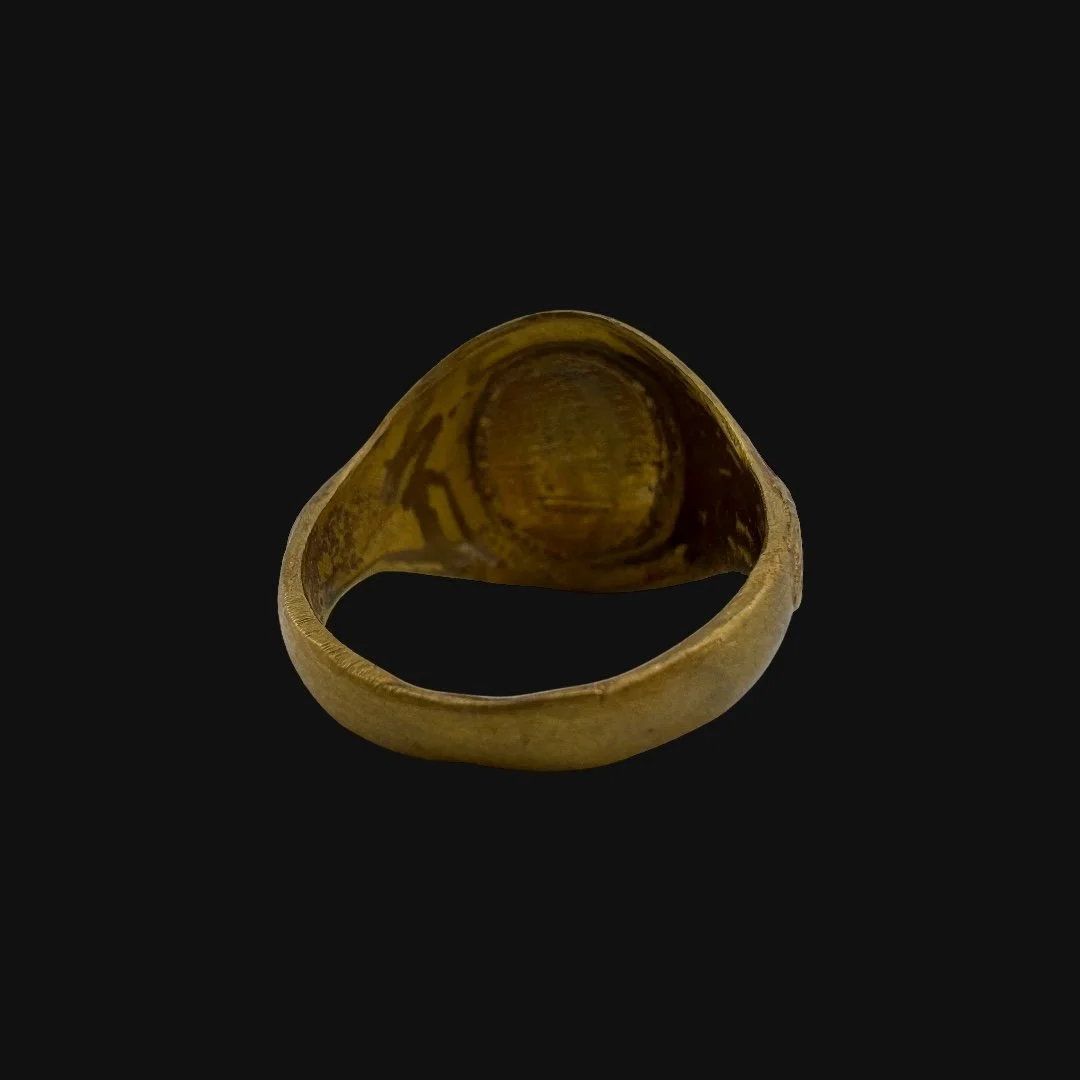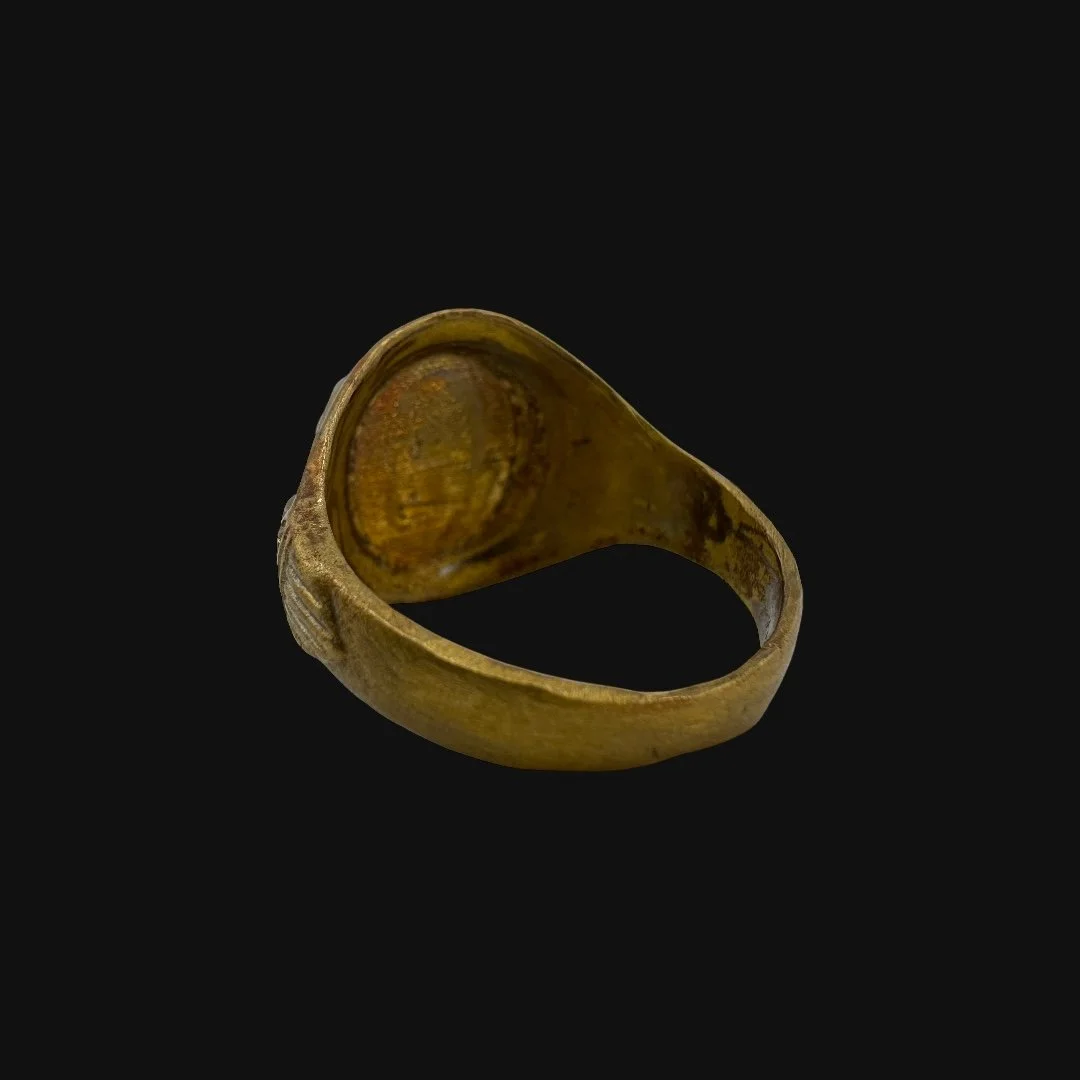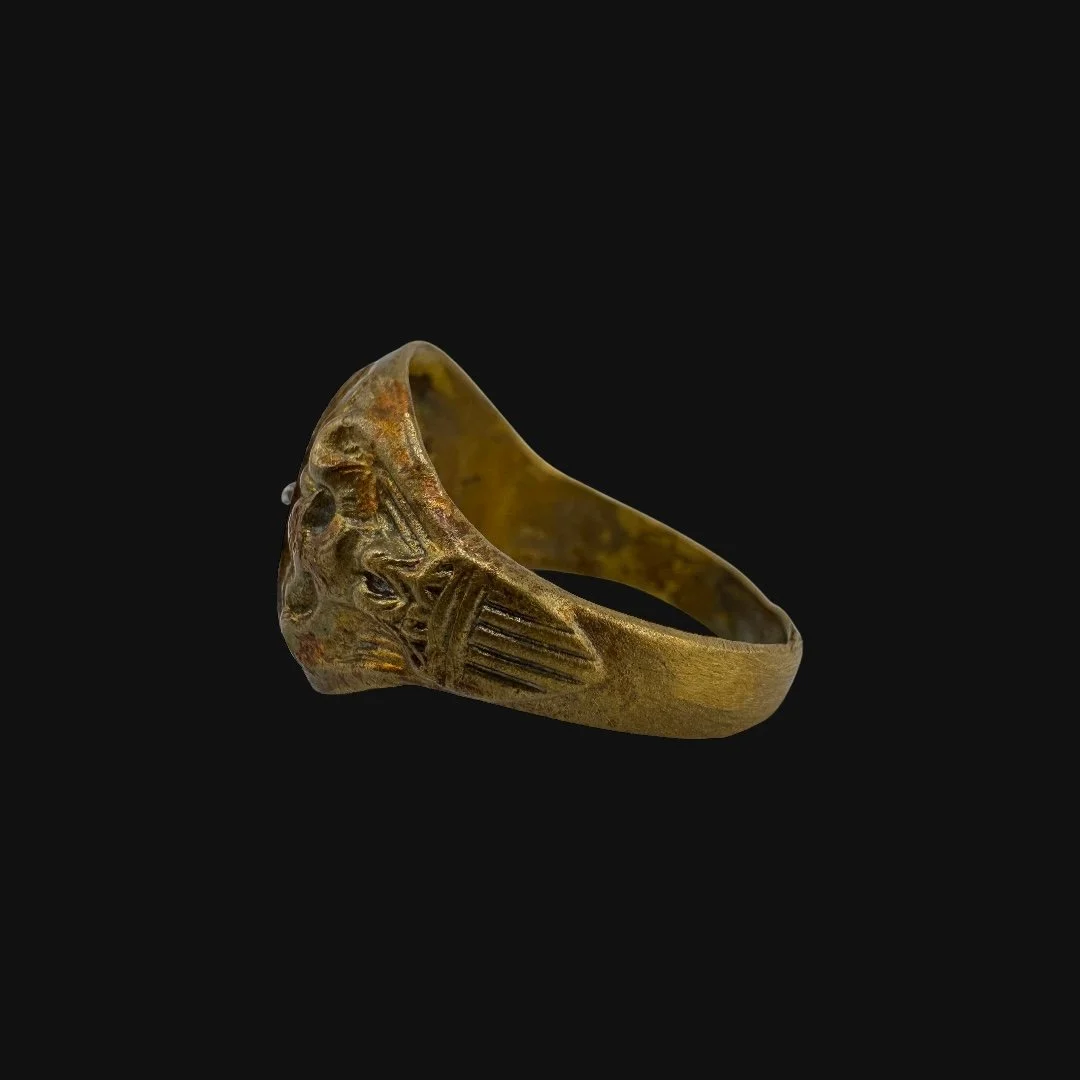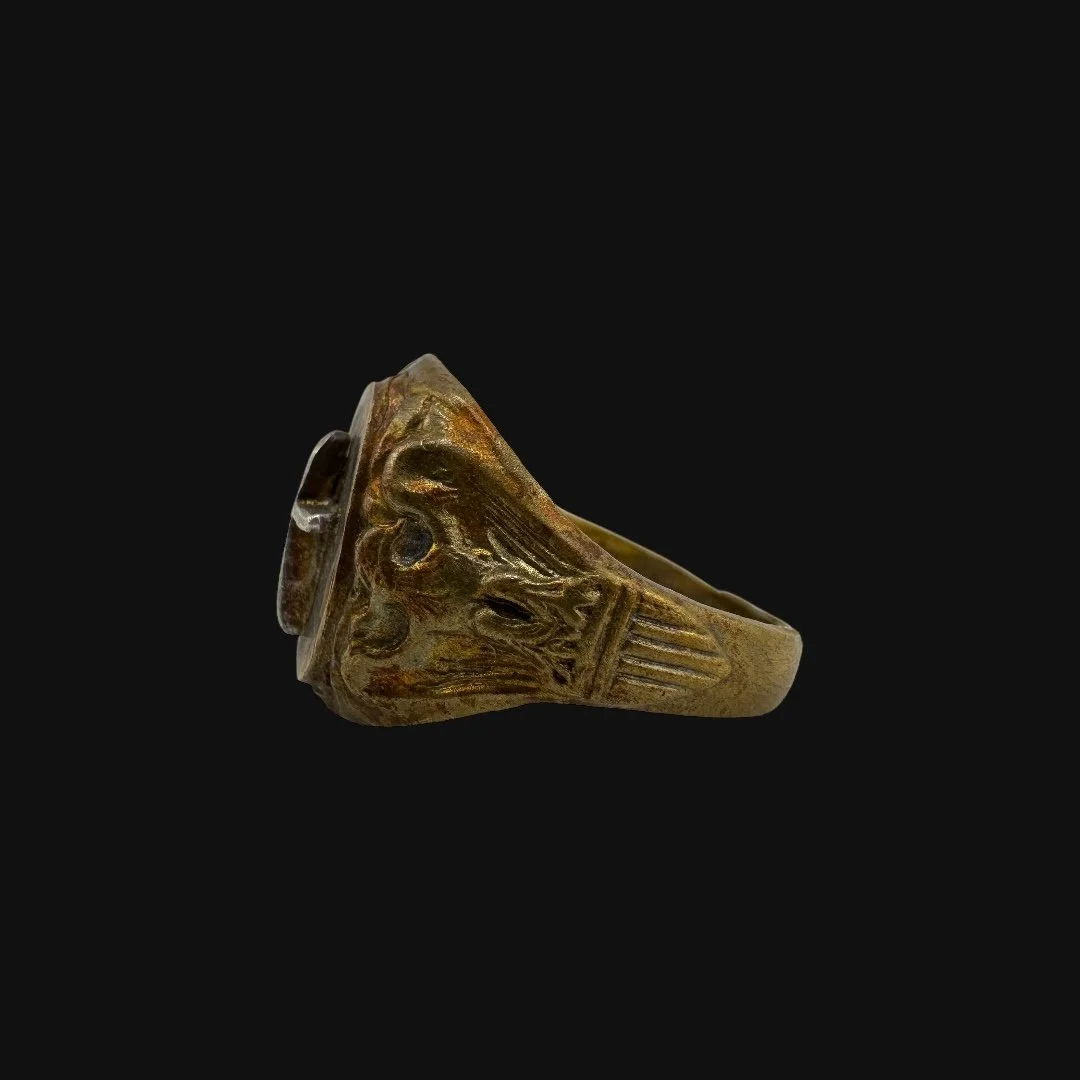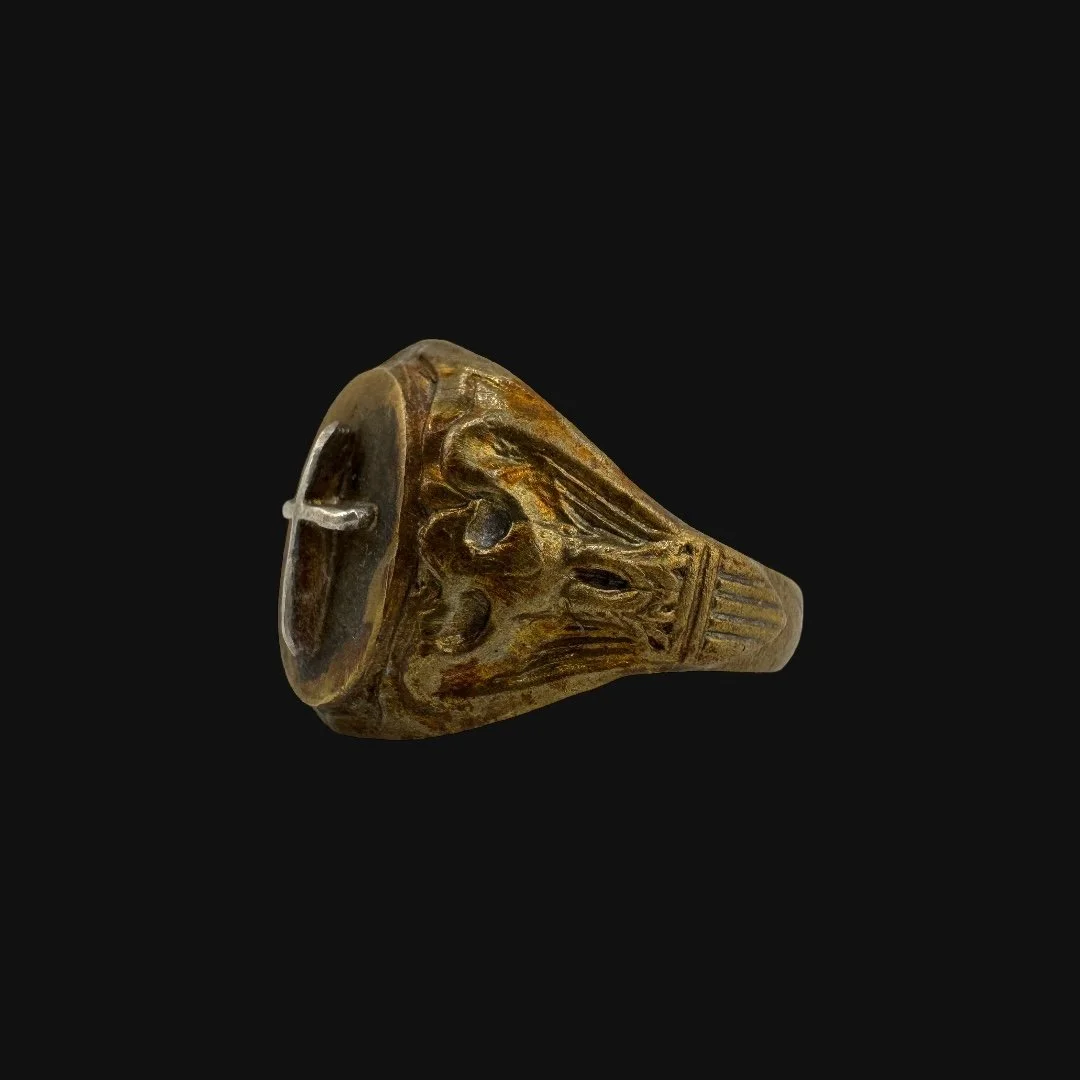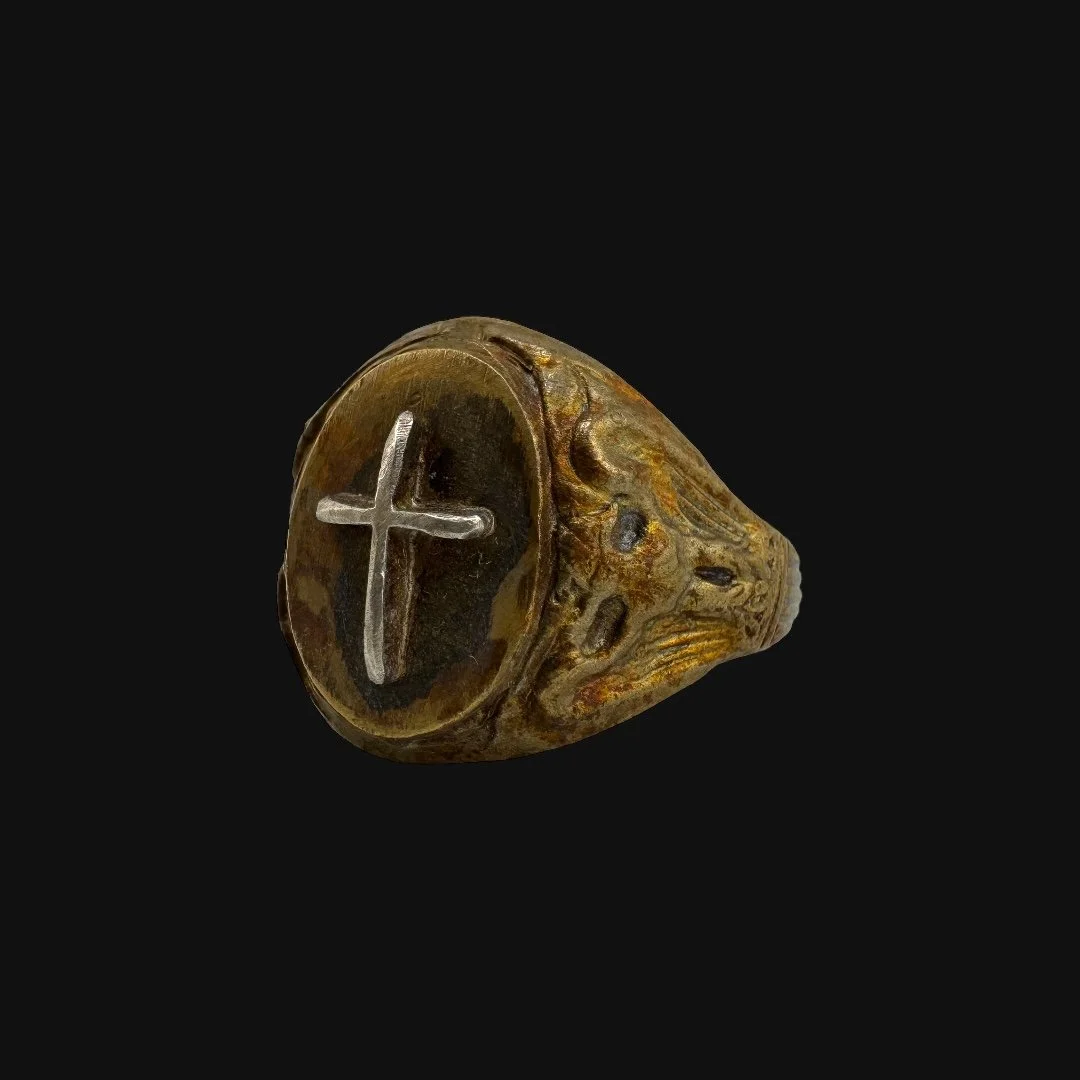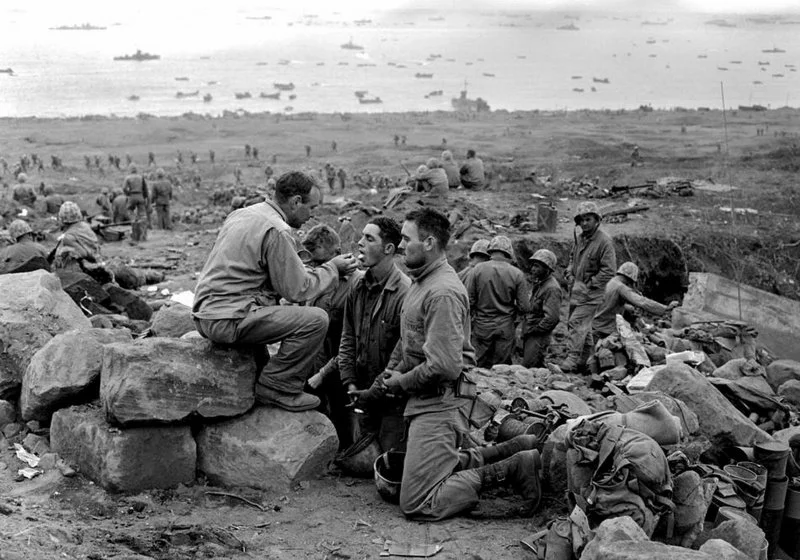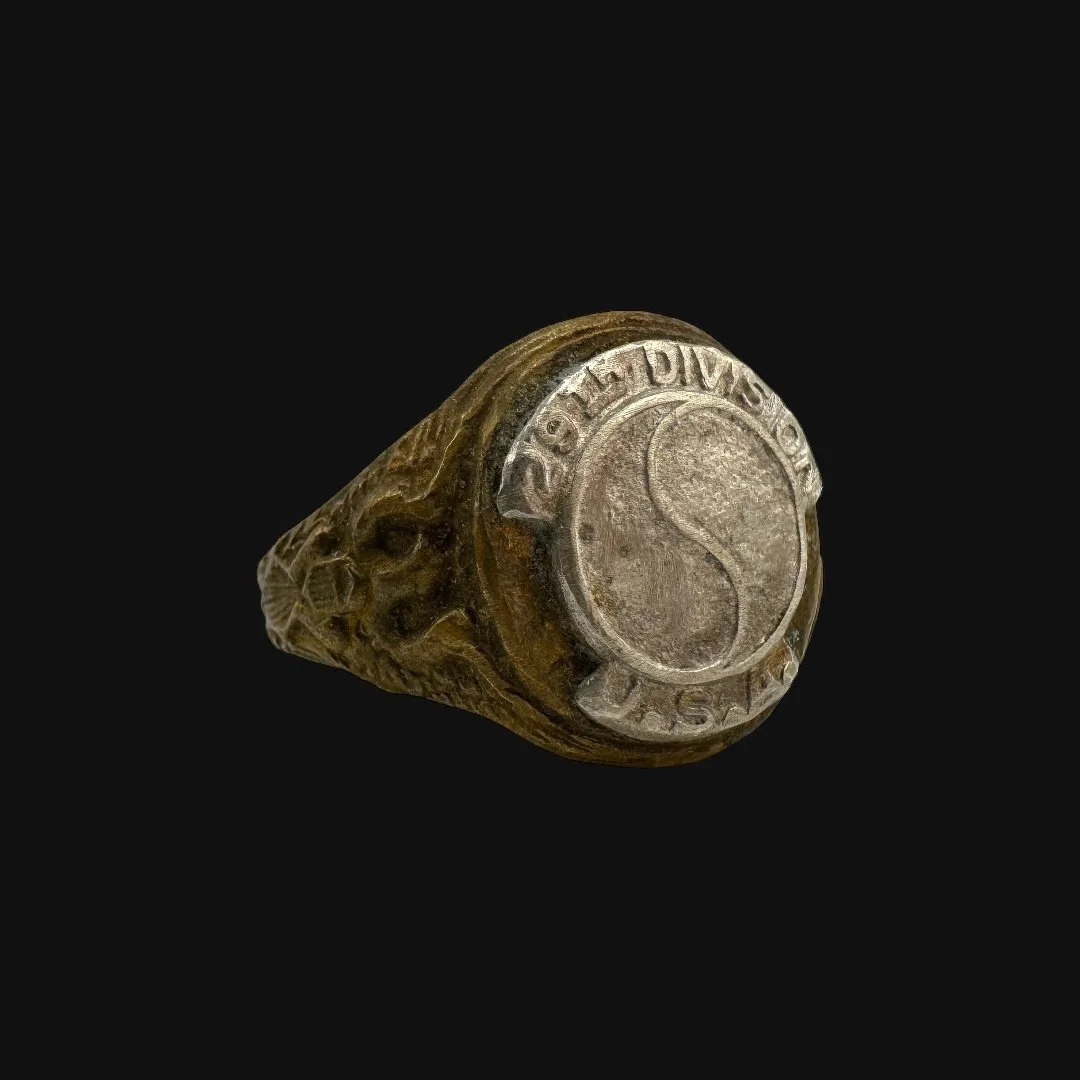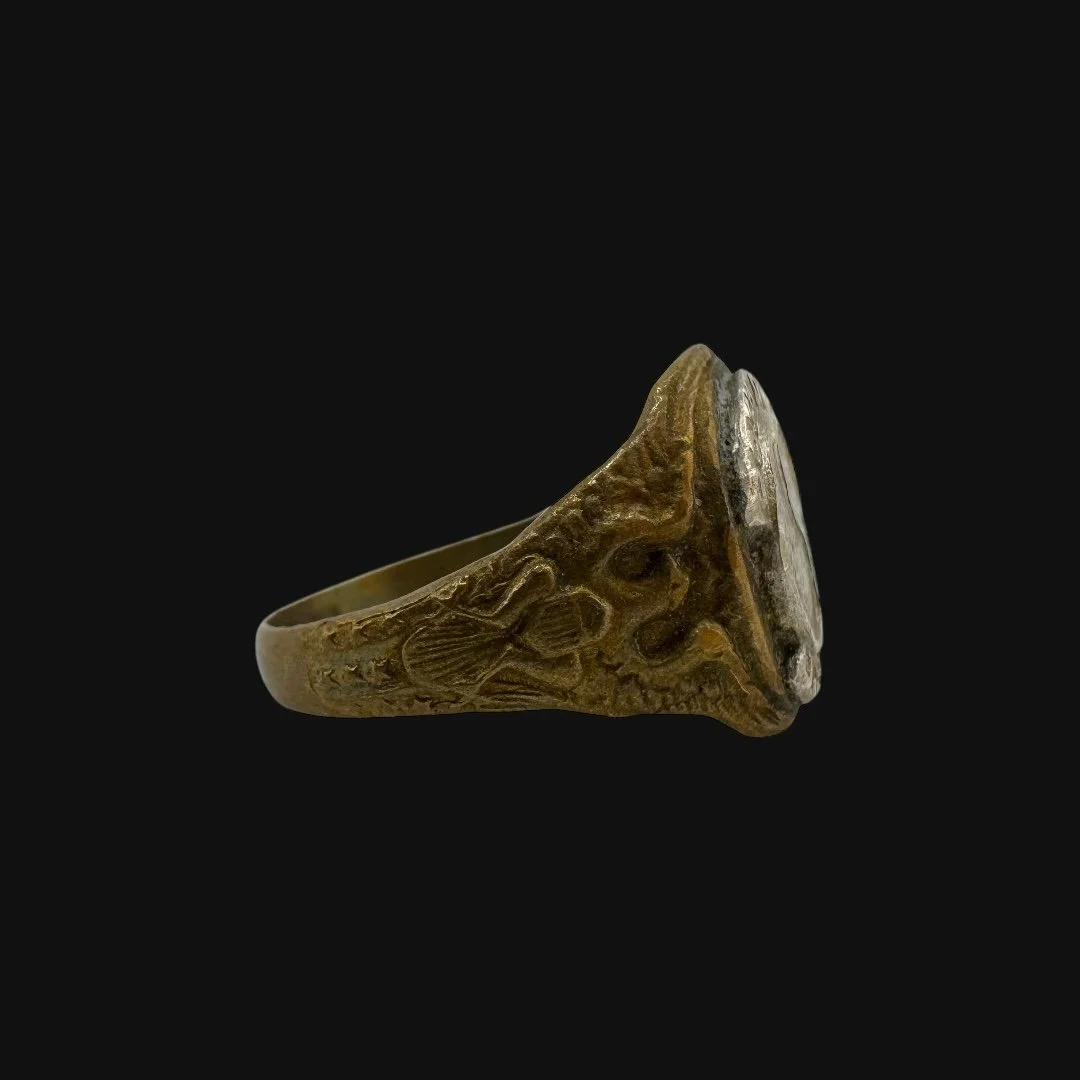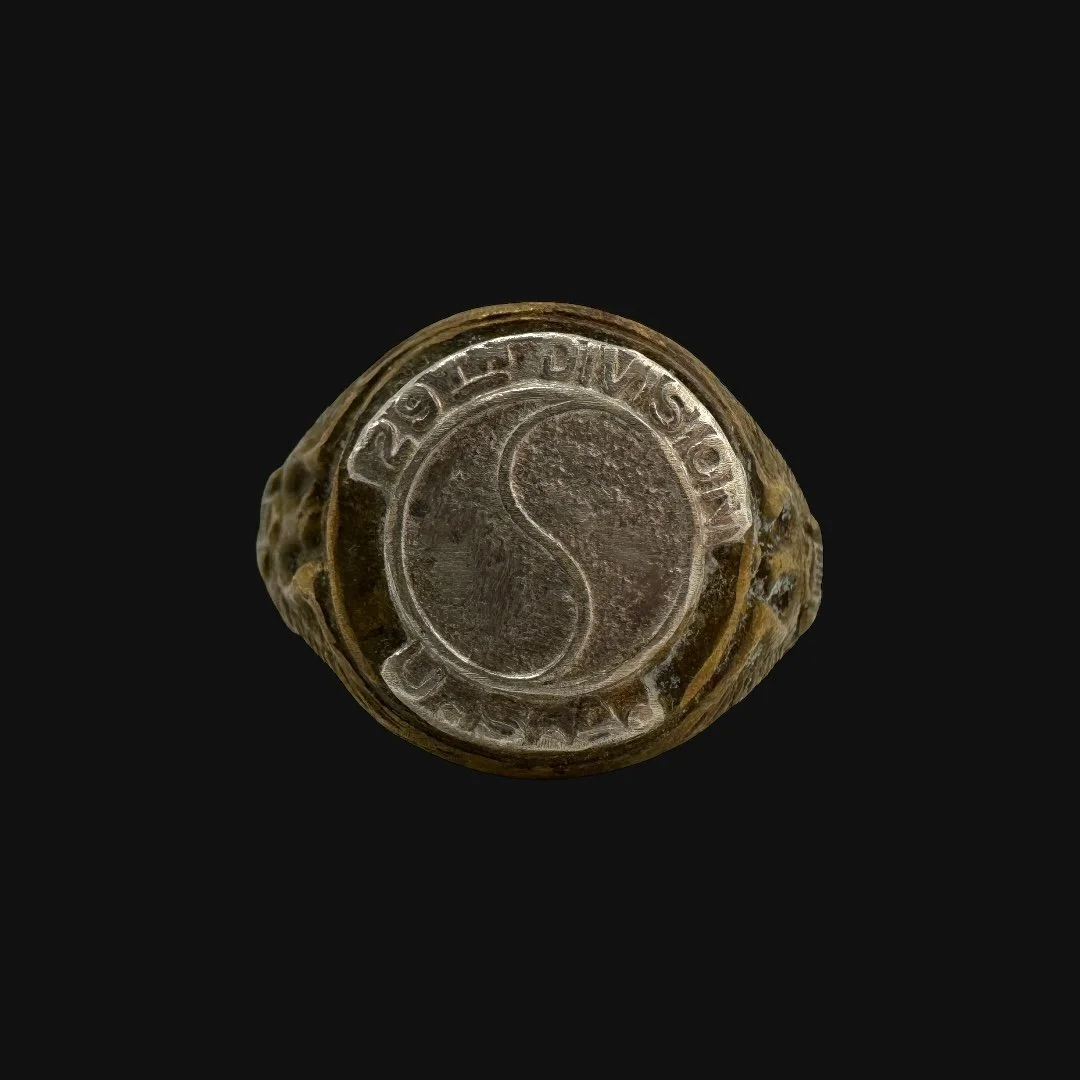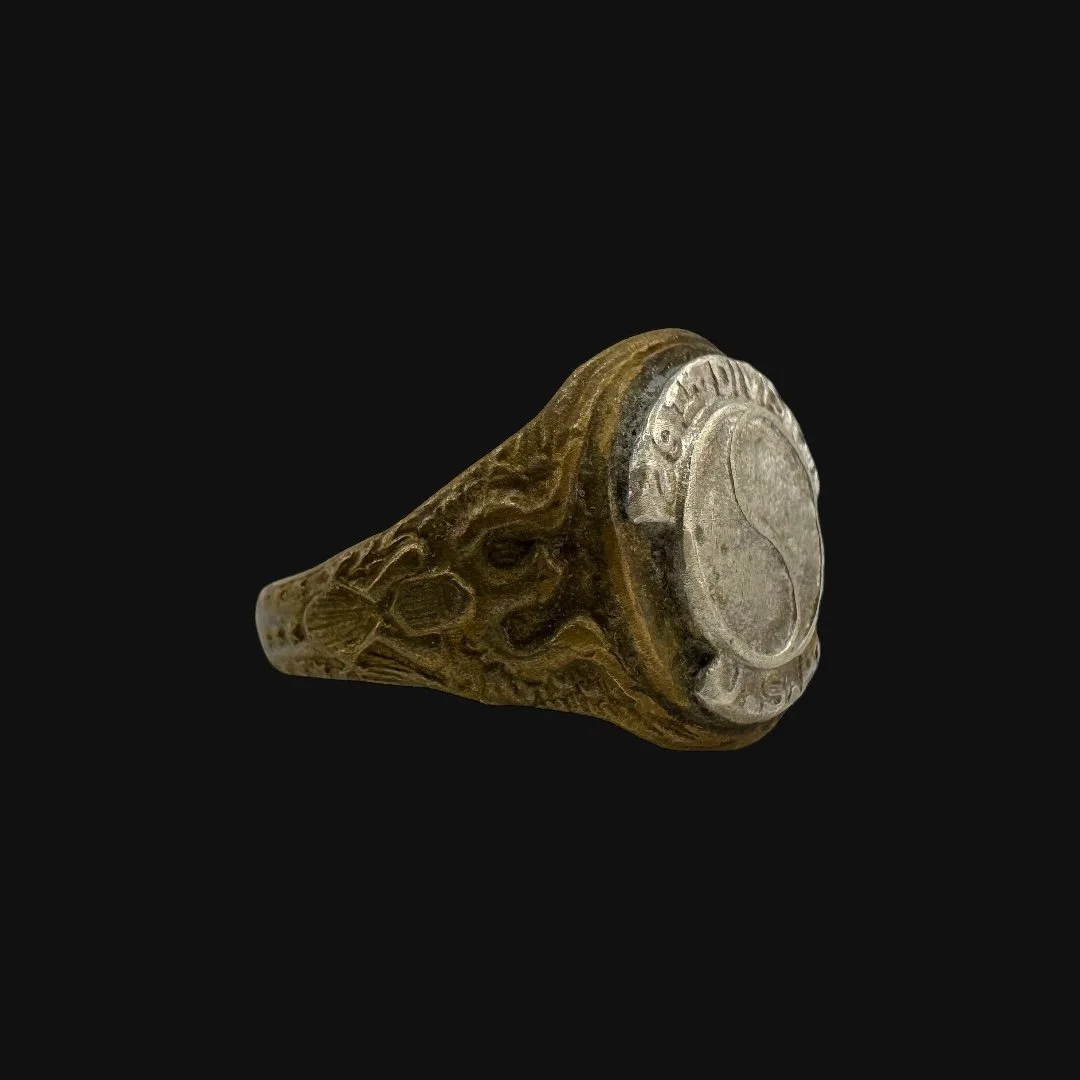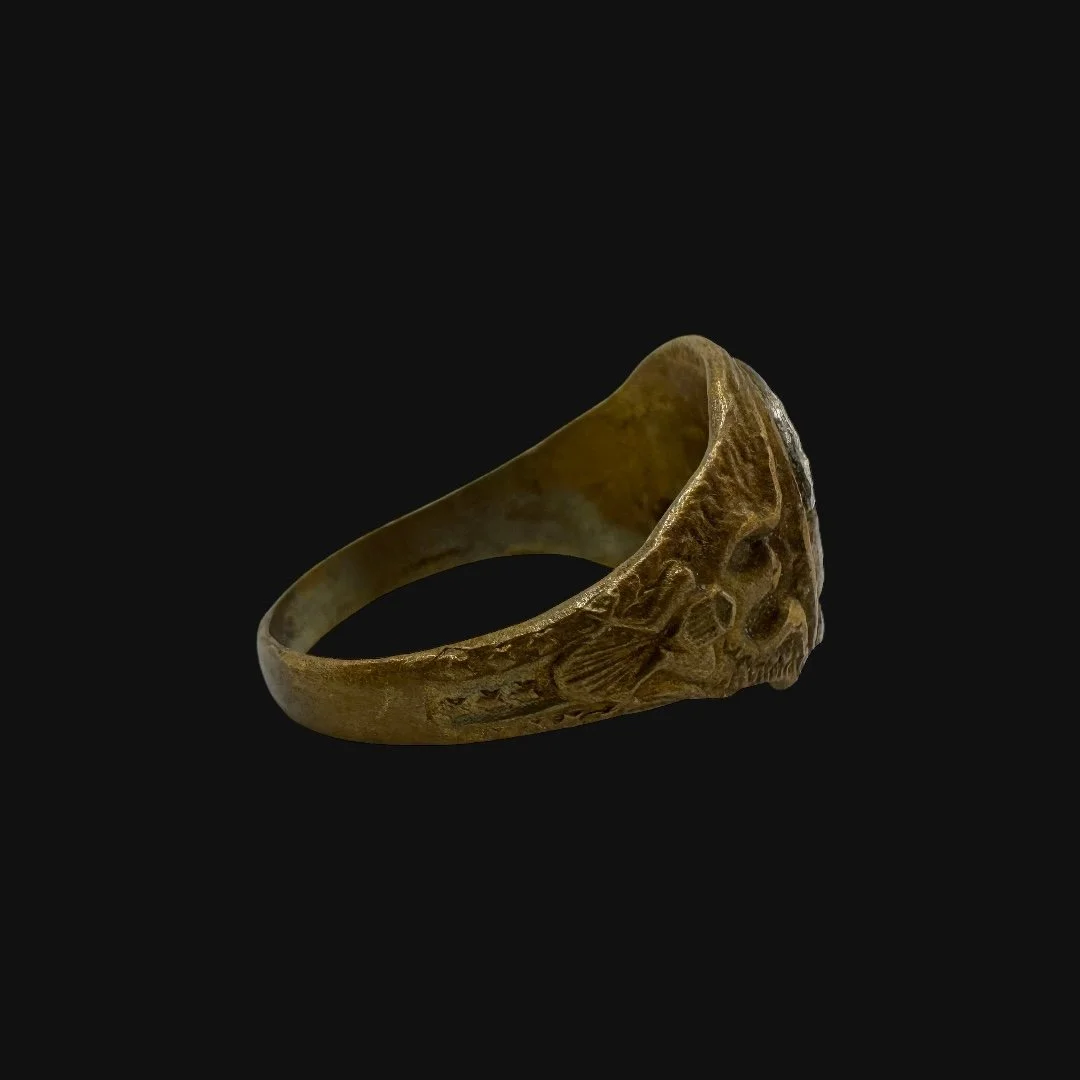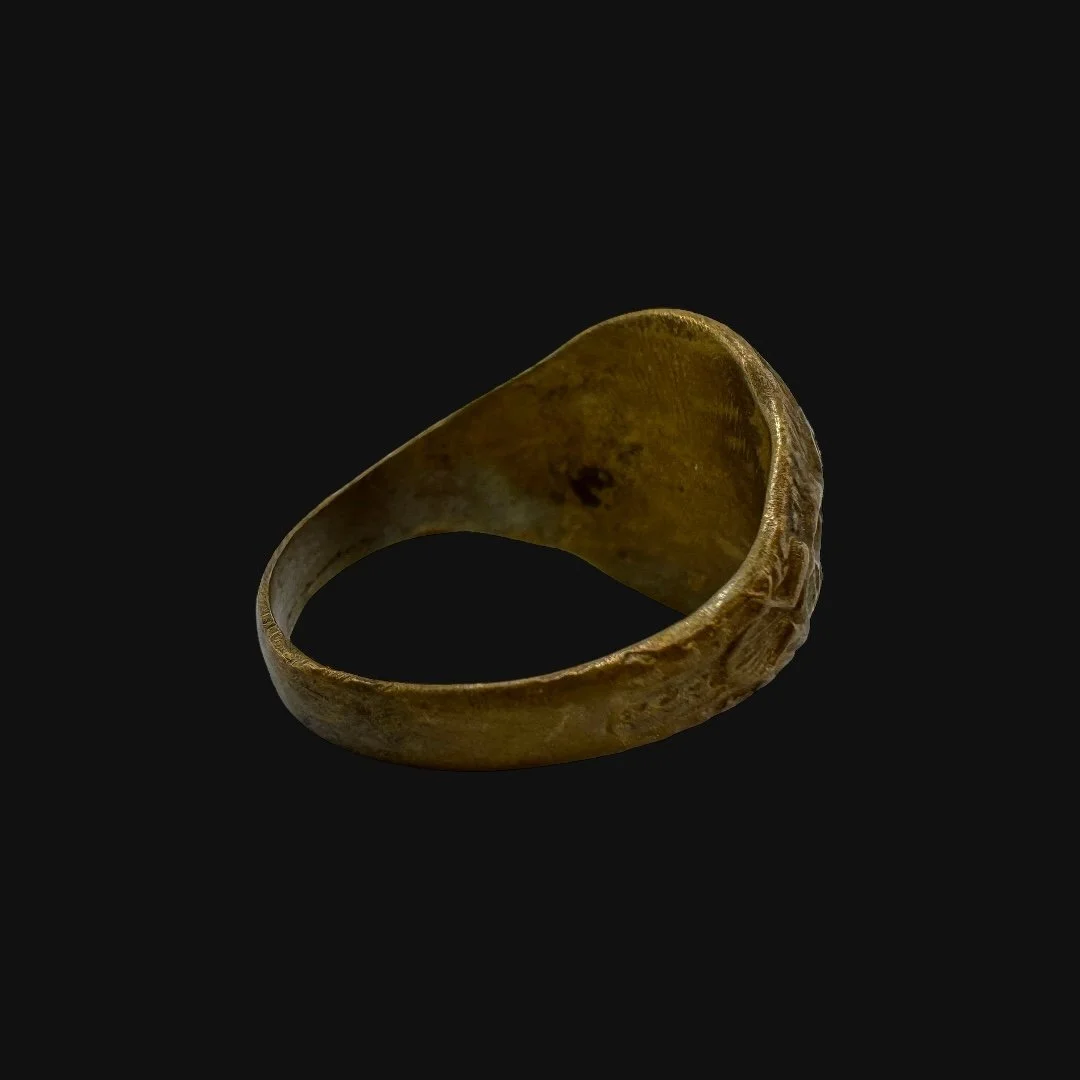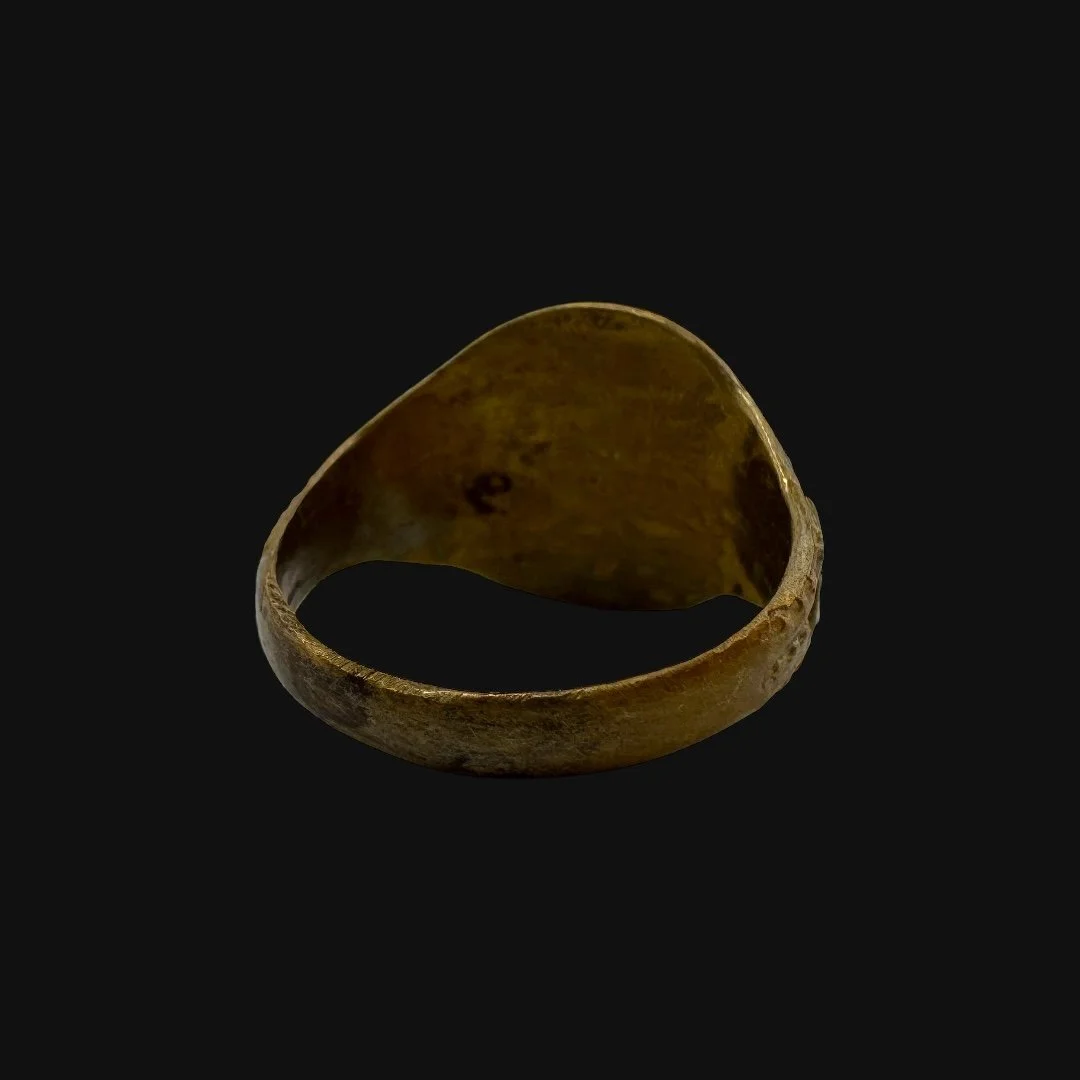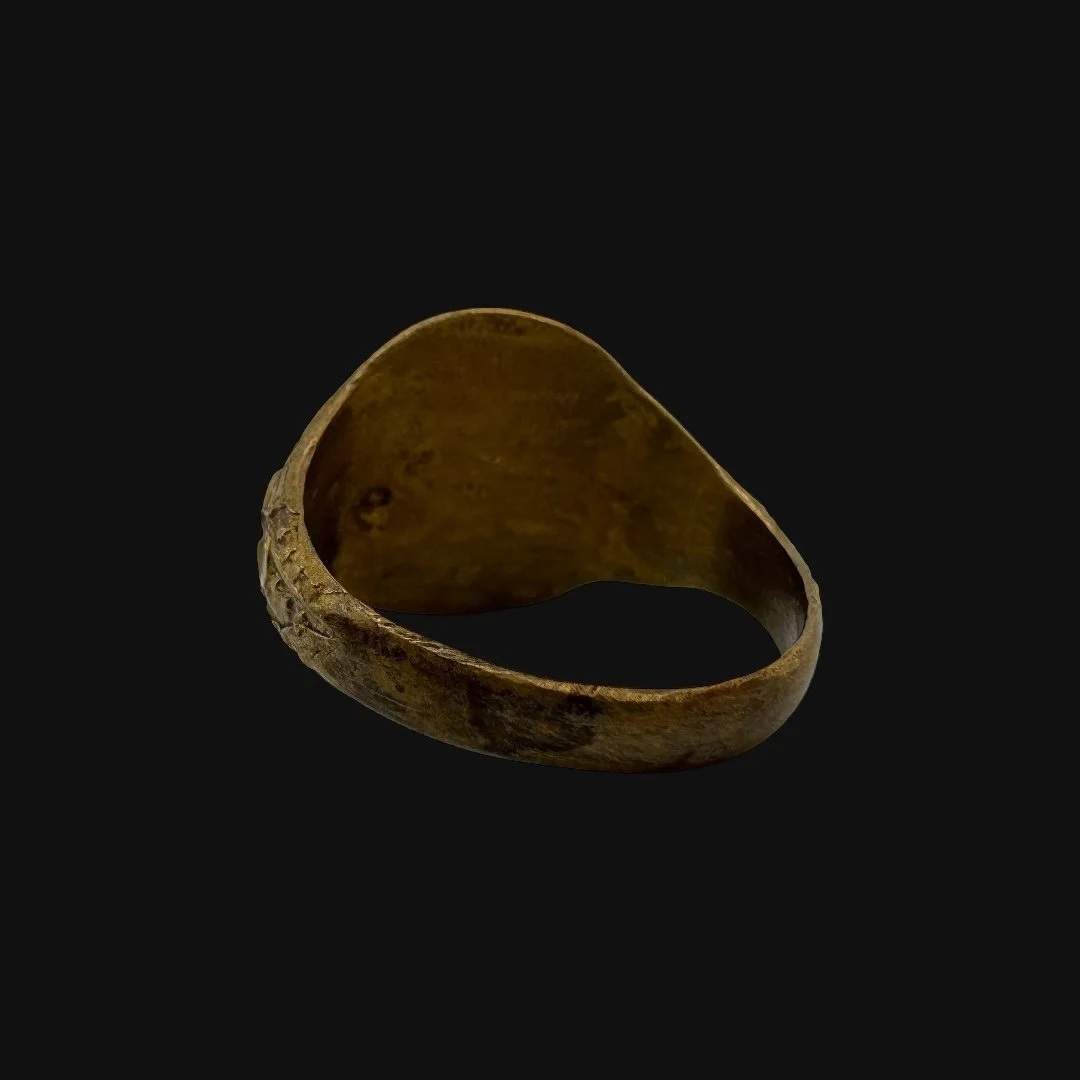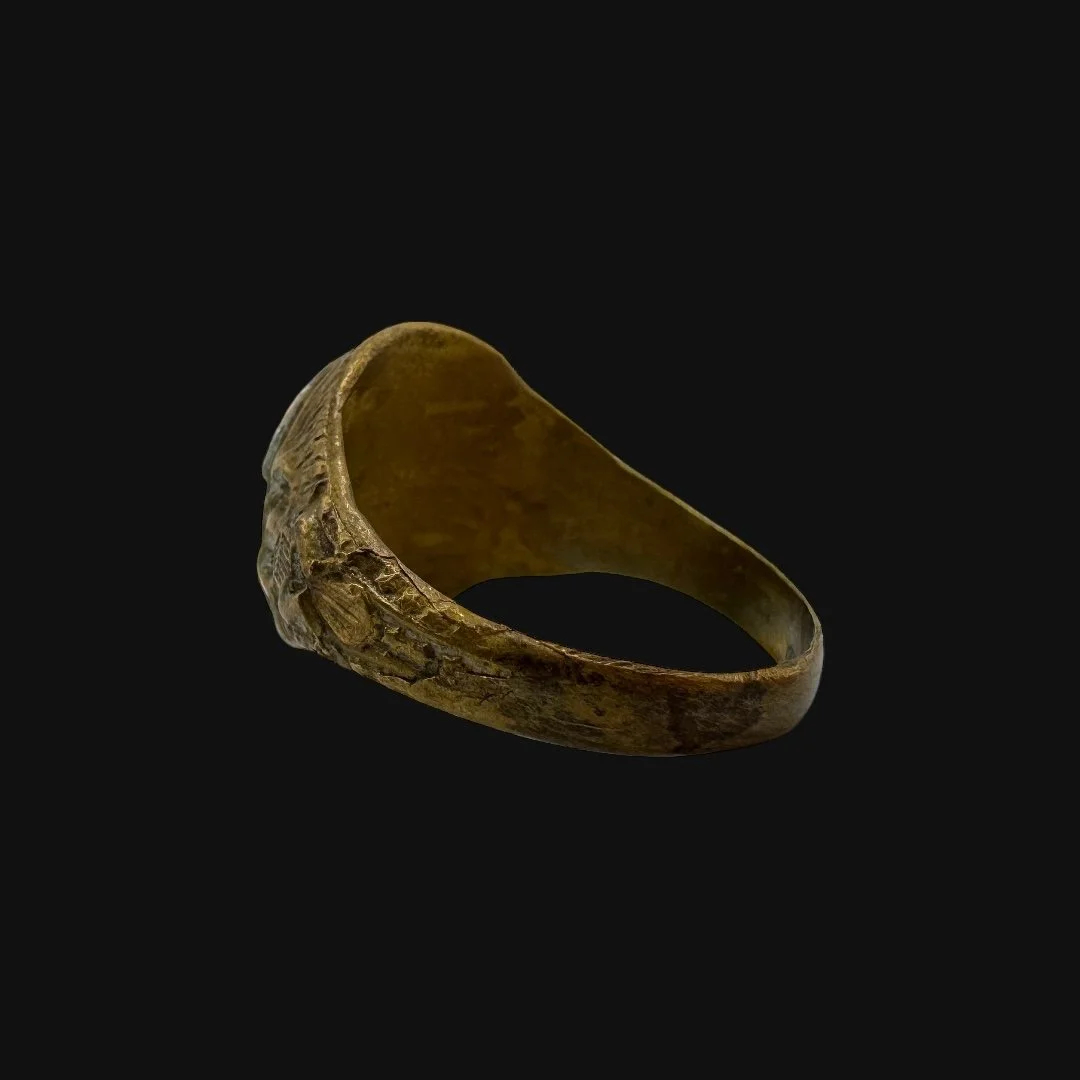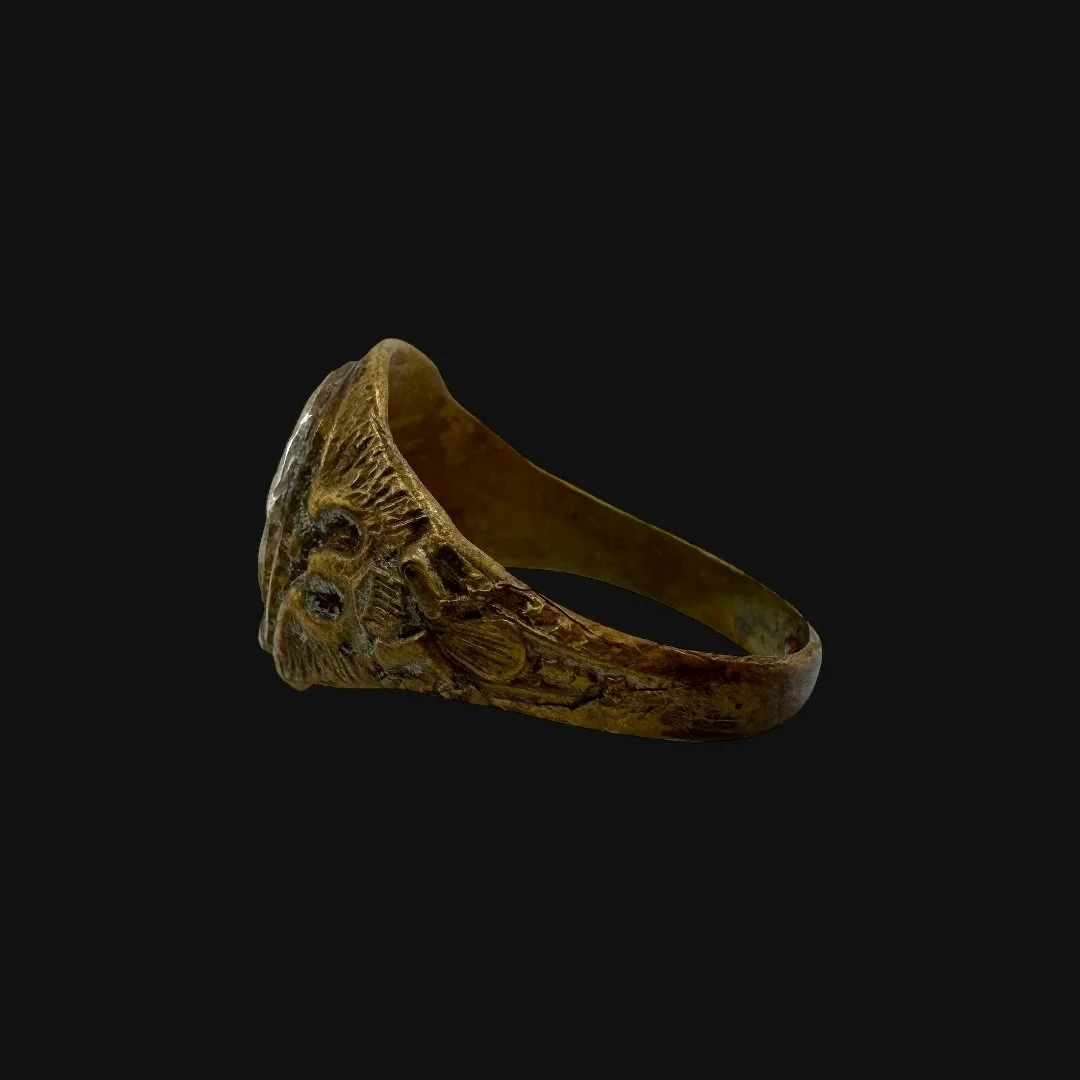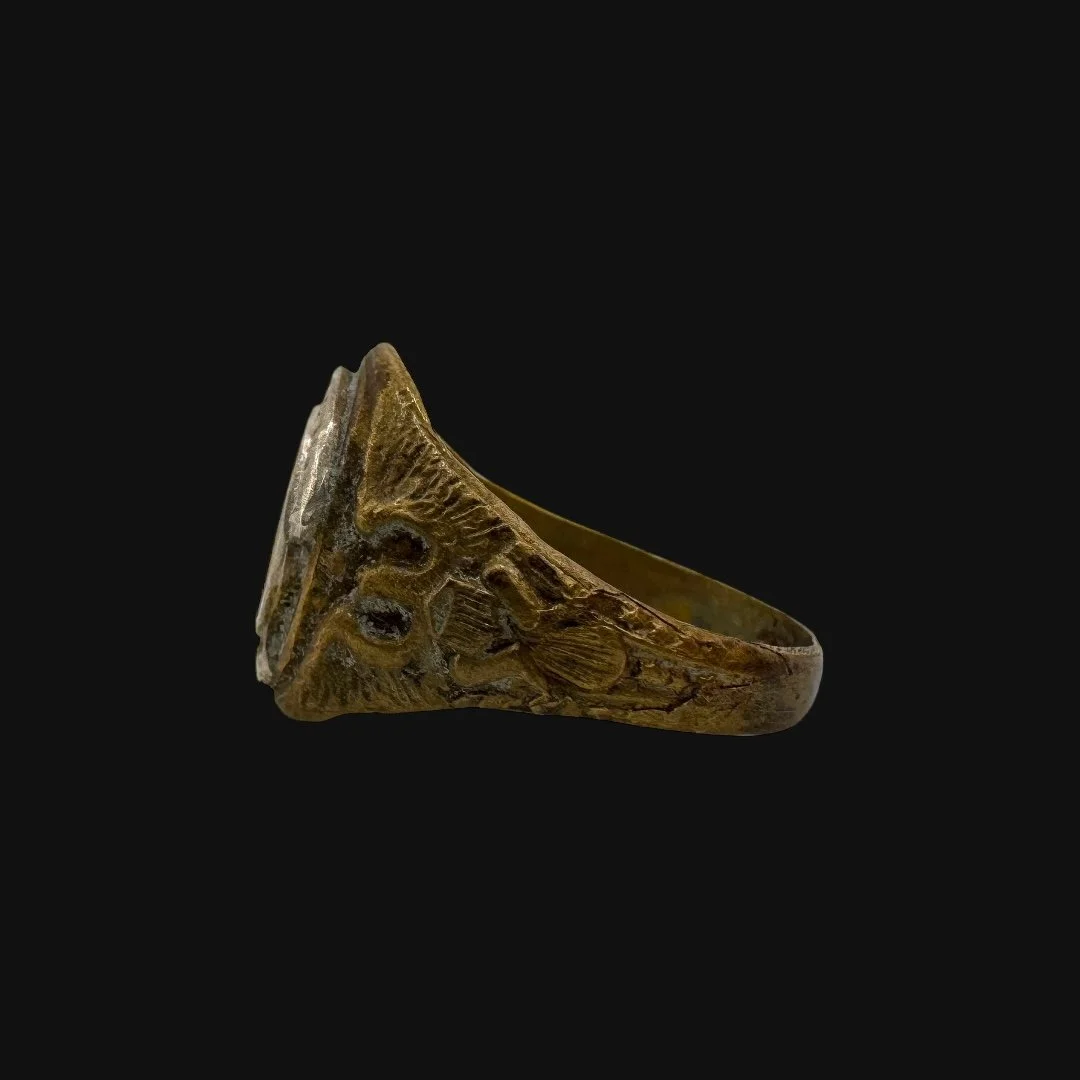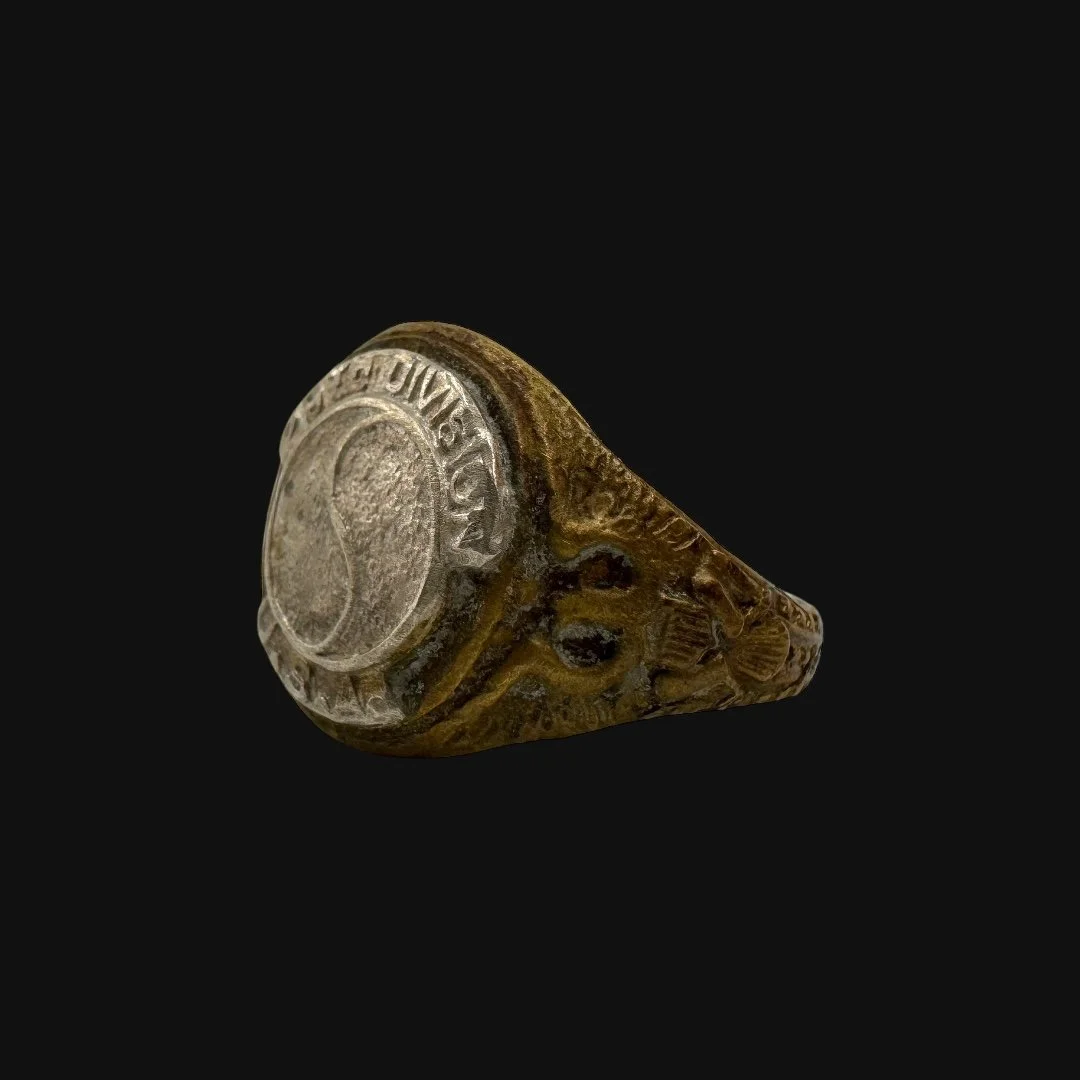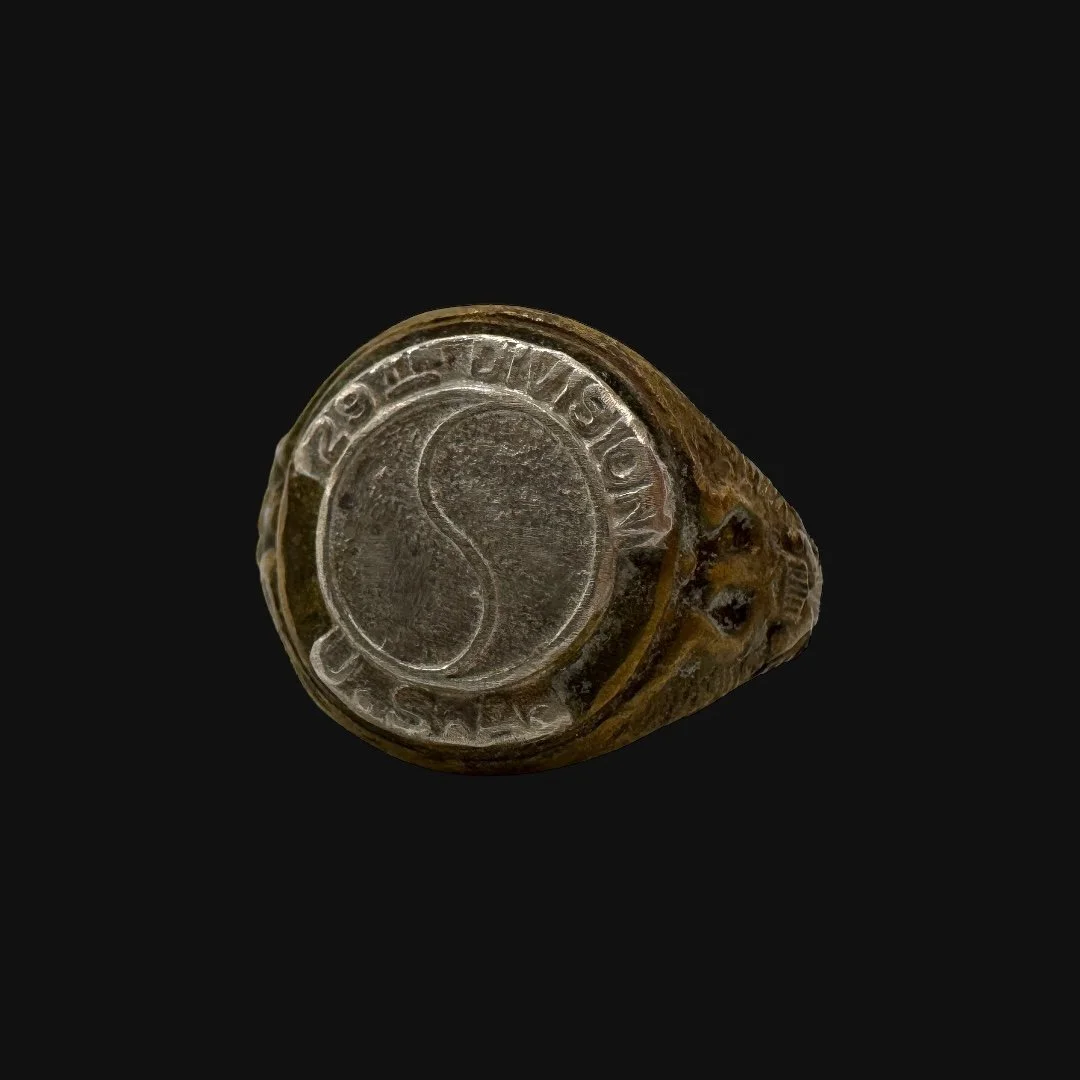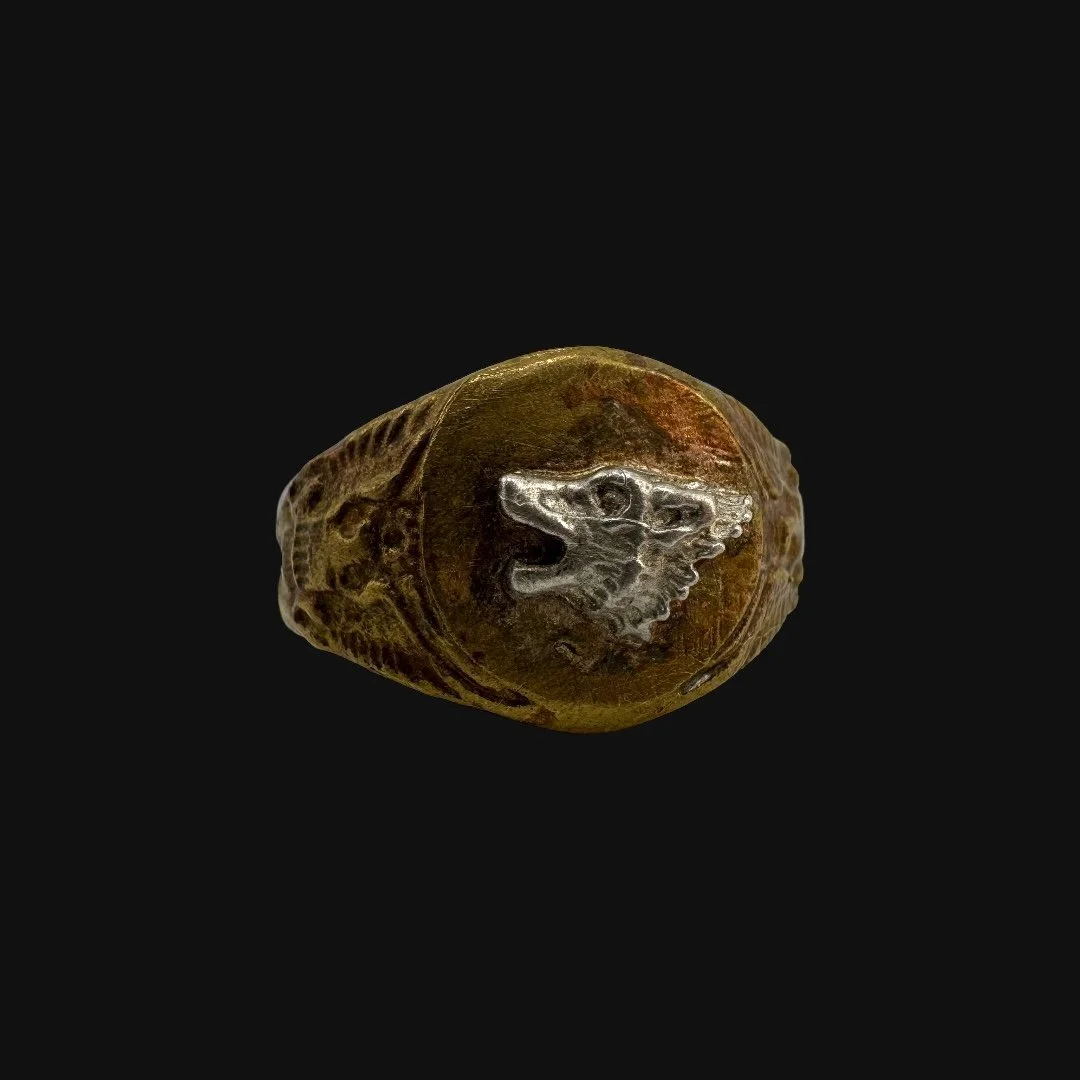 Image 1 of 14
Image 1 of 14

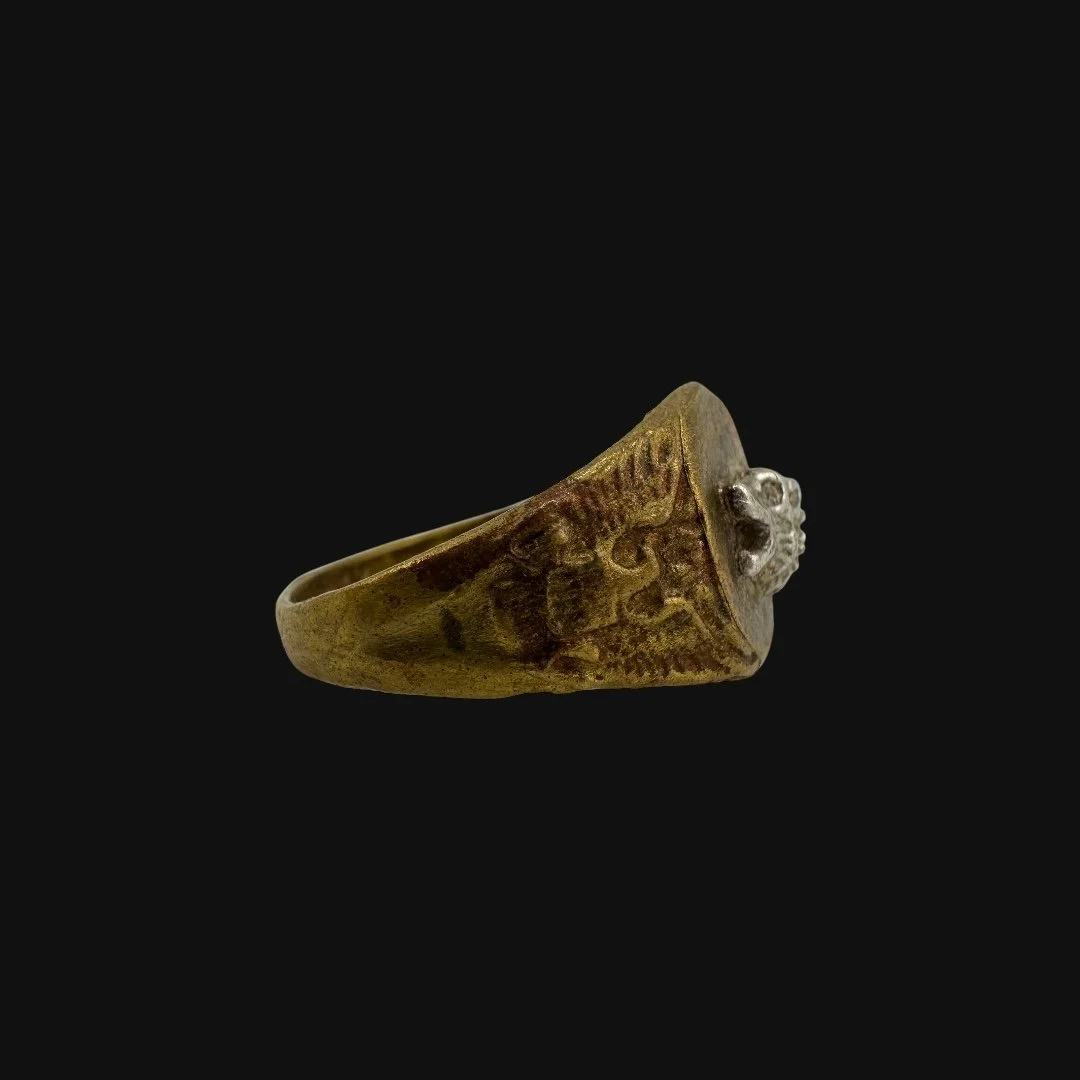 Image 2 of 14
Image 2 of 14

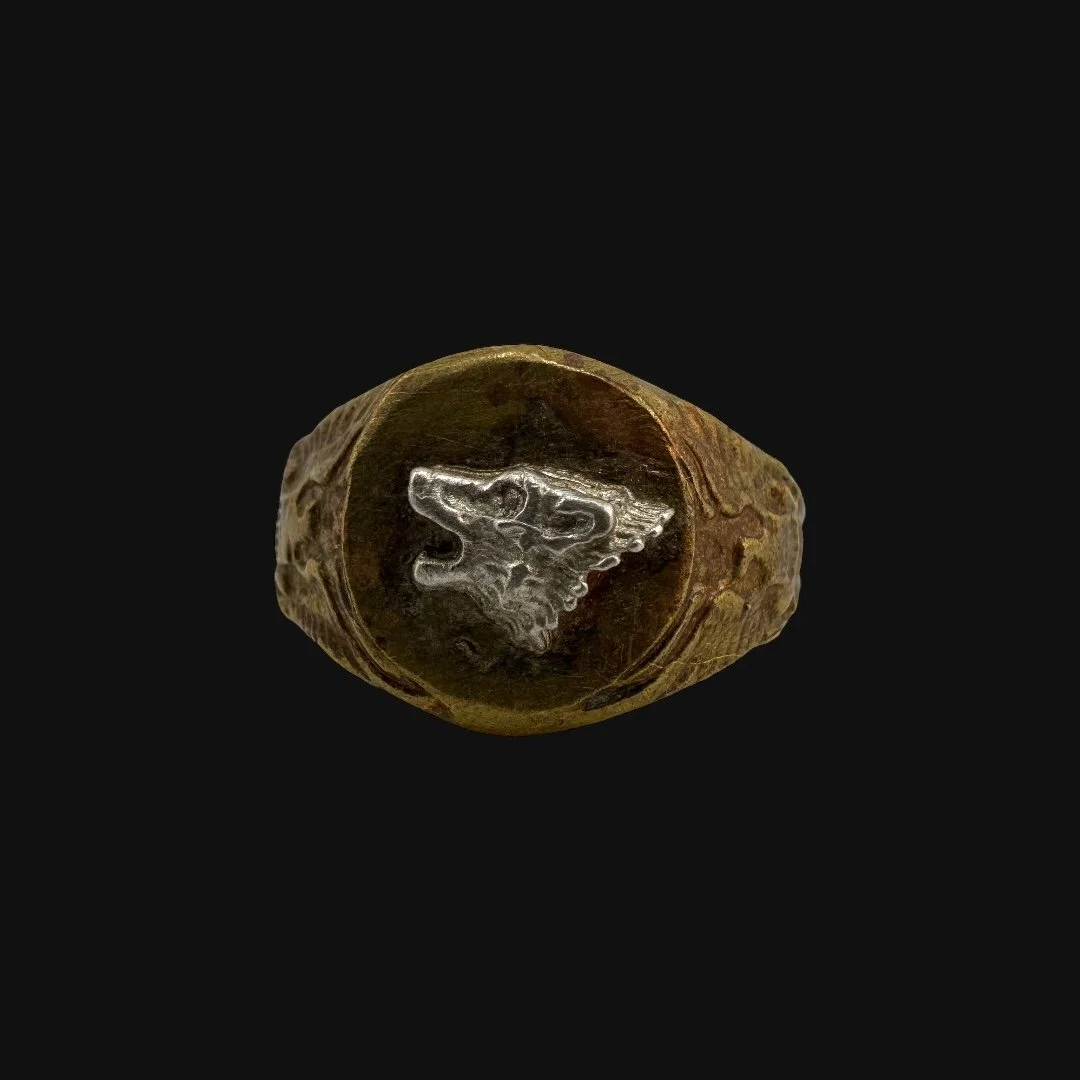 Image 3 of 14
Image 3 of 14

 Image 4 of 14
Image 4 of 14

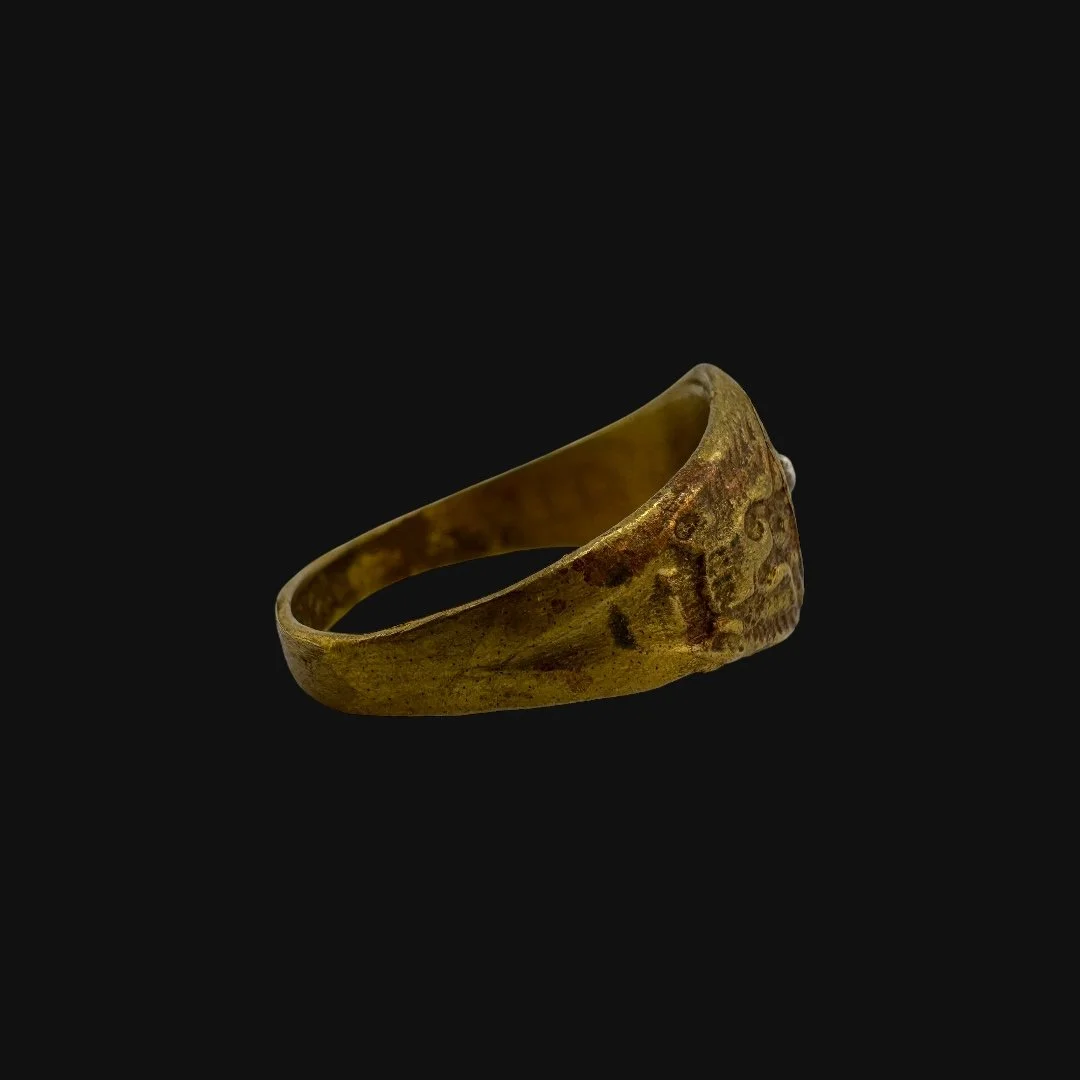 Image 5 of 14
Image 5 of 14

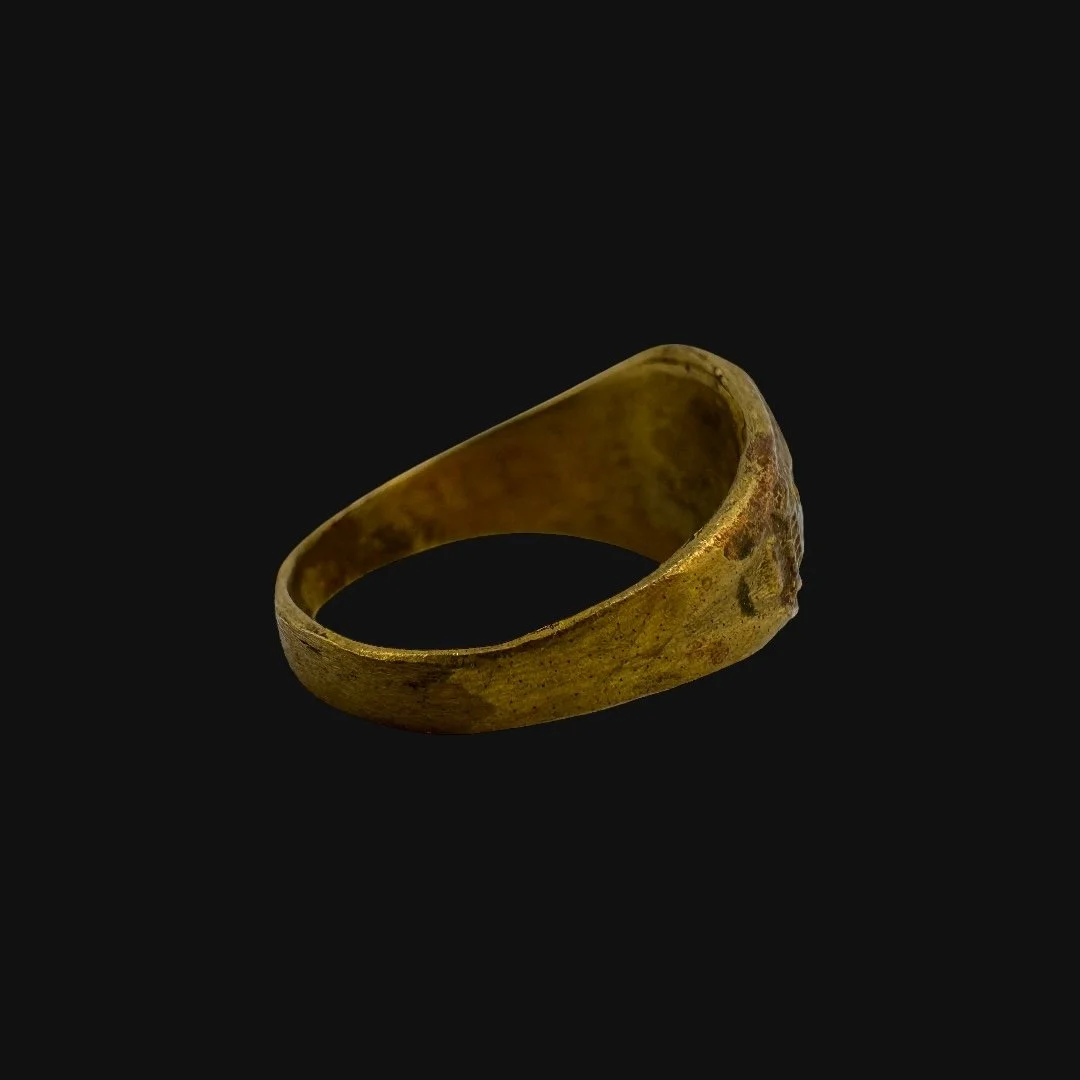 Image 6 of 14
Image 6 of 14

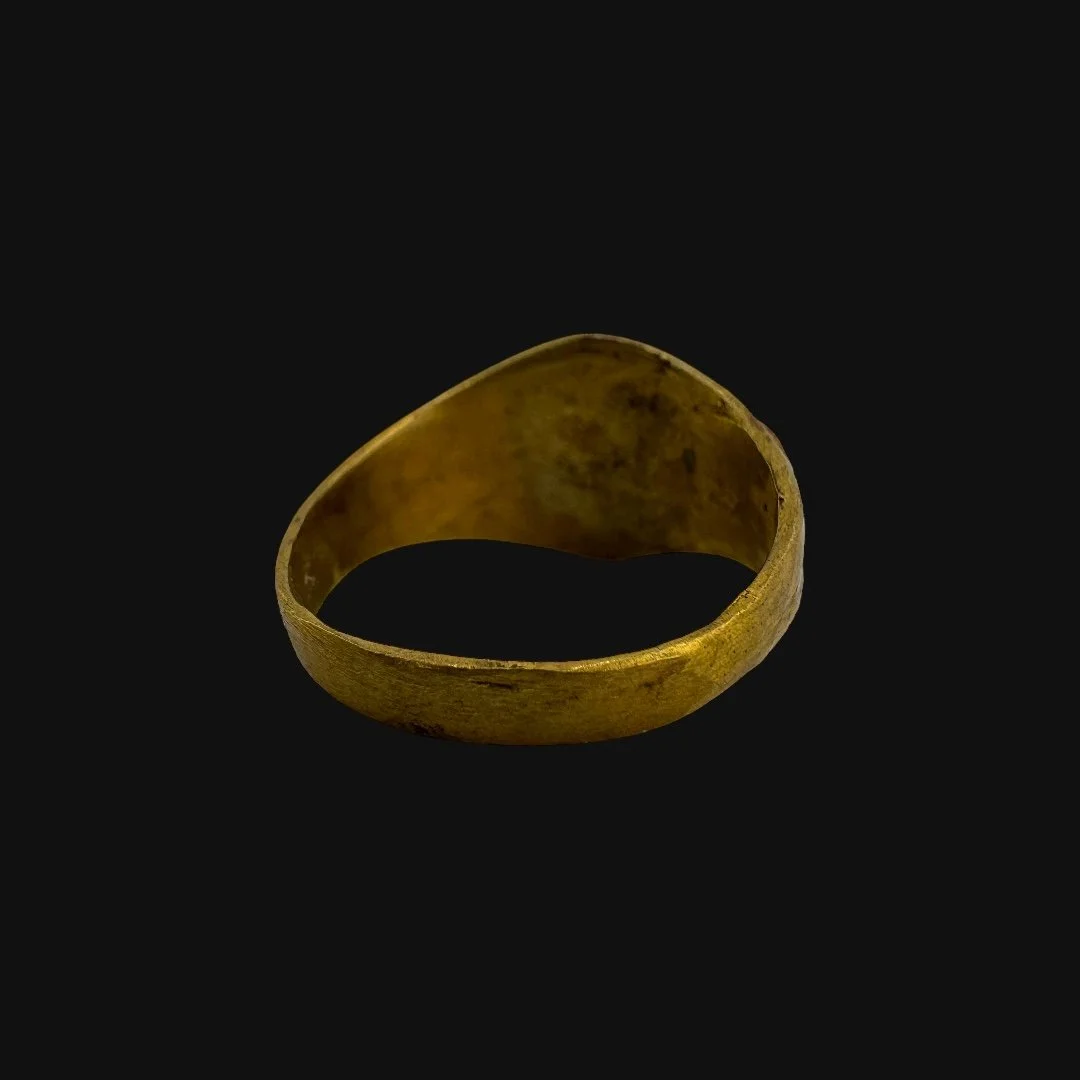 Image 7 of 14
Image 7 of 14

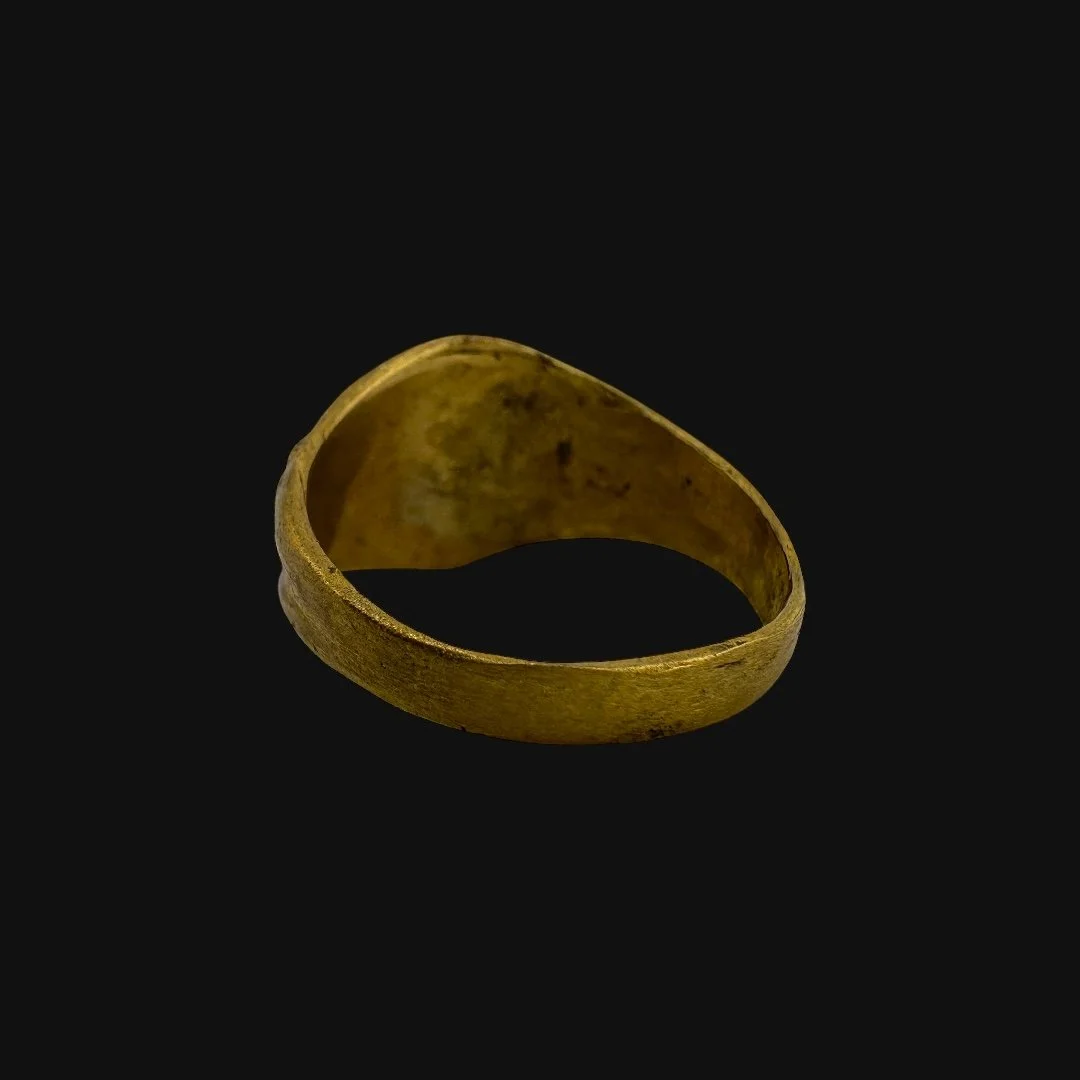 Image 8 of 14
Image 8 of 14

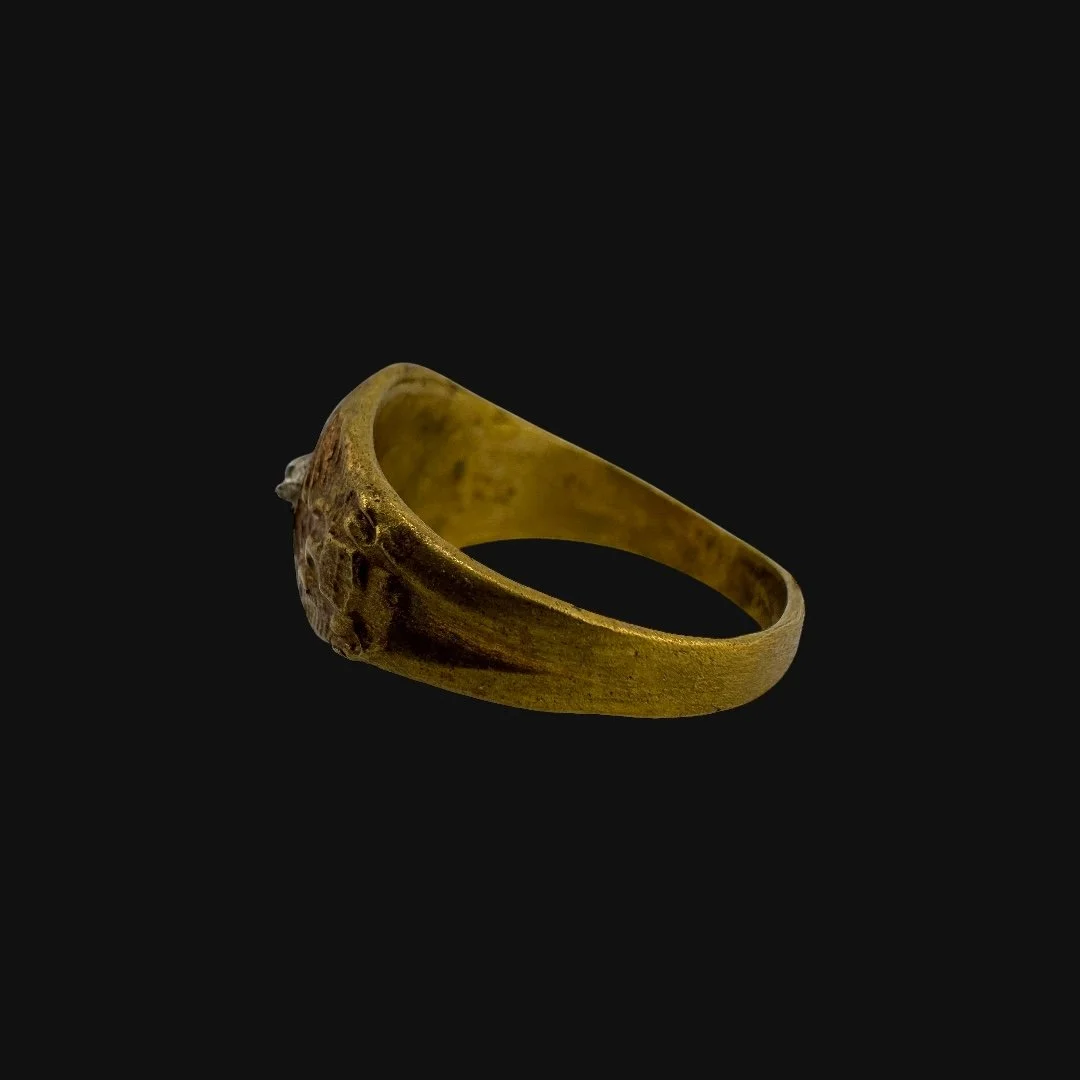 Image 9 of 14
Image 9 of 14

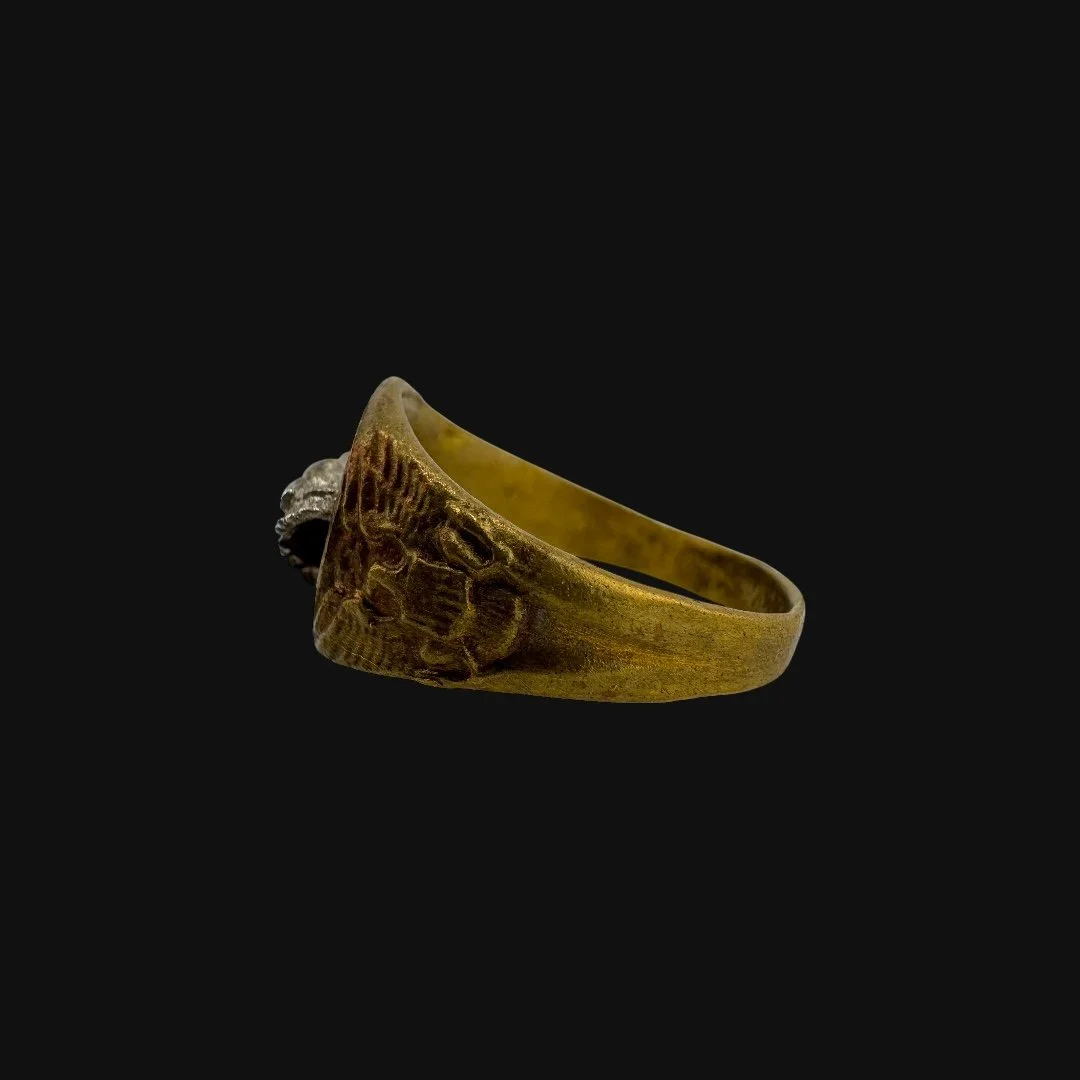 Image 10 of 14
Image 10 of 14

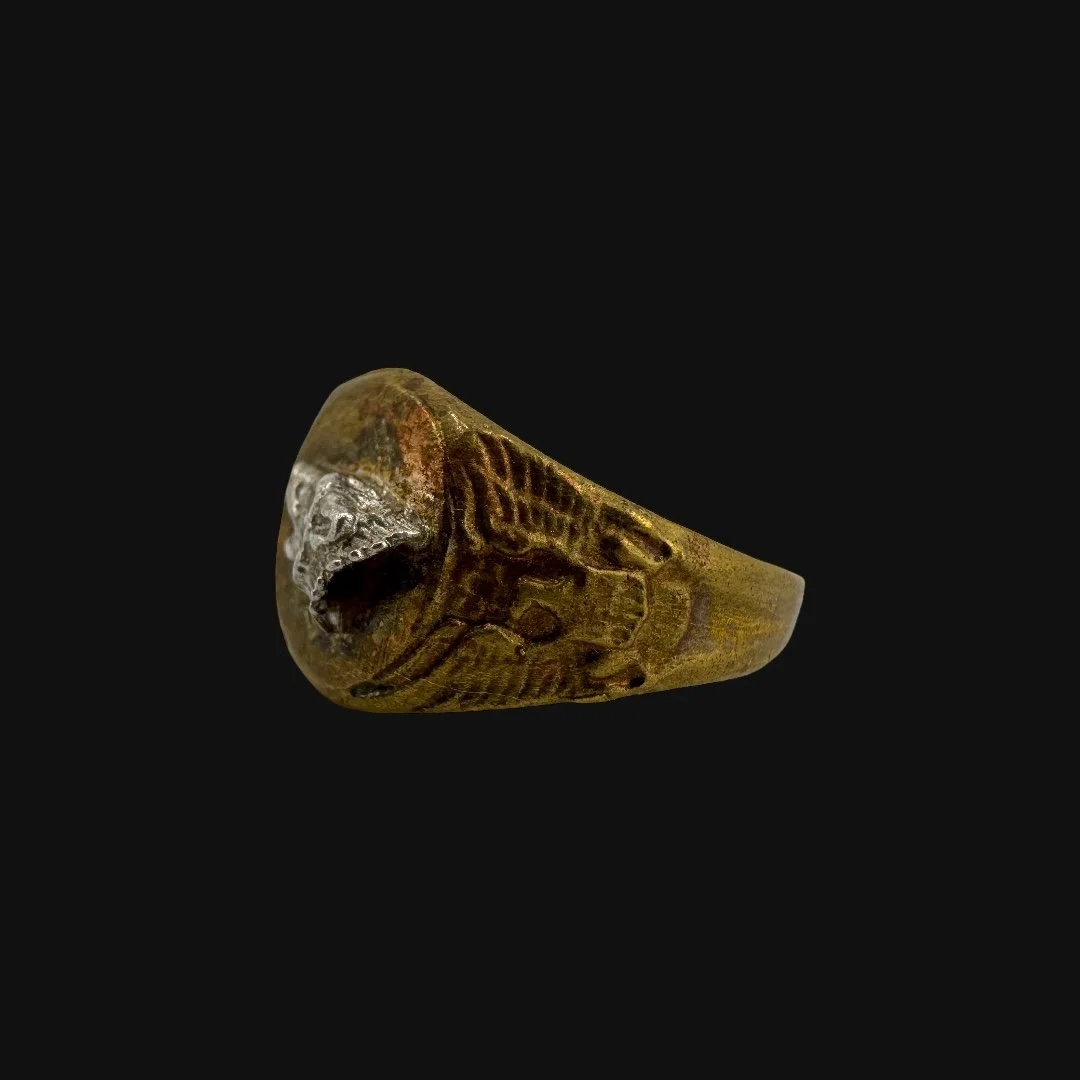 Image 11 of 14
Image 11 of 14

 Image 12 of 14
Image 12 of 14

 Image 13 of 14
Image 13 of 14

 Image 14 of 14
Image 14 of 14















Original WWII 1943-1945 U.S. Army 104th Infantry Division “Timberwolf Division” Combat Soldier's Military Ring (Size 11)
Comes with a hand-signed C.O.A. and a full historical research write-up
From: World War II
Branch: U.S. Army
Division: 104th Infantry Division (Timberwolf Division)
Dated: 1943-1945
Ring Size: 11 (US)
Material: Bronze & Sterling Silver
Wearable History Collection:
This authentic 1943-1945 WWII-era ring, preserved in its original and unaltered condition, combines exceptional craftsmanship with lasting durability, making it fully suitable for modern wear today. As part of our exclusive World War II “Wearable History Ring Collection,” it offers the rare opportunity to own and wear a genuine piece of World War II. Both a timeless accessory and a tangible link to the past, this truly one-of-a-kind ring stands as a wearable tribute to the courage and sacrifice of a generation.
Historical Significance to the 104th Infantry Division During WWII:
The 104th Infantry Division, the famed “Timberwolf Division,” earned distinction in World War II as one of the most innovative and effective U.S. Army divisions. Activated in 1942 under Major General Terry de la Mesa Allen Sr., the 104th was the first American division trained specifically for night combat, using darkness to surprise German positions and reduce casualties. Arriving in Europe in the fall of 1944, it was committed to the First Army near Aachen, where it fought its first battles against the Siegfried Line. In the rugged fighting around Aachen and the Roer Valley, the Timberwolves gained a reputation for discipline and determination, capturing towns like Inden and Stolberg and proving their night tactics on the battlefield.
Through late 1944, the 104th helped secure the Netherlands and pushed into the Cologne Plain, engaging in grueling urban and fortified combat that steadily wore down German defenses. In March 1945, the division played a vital role in Operation Plunder, the crossing of the Rhine, establishing bridgeheads that enabled the Allies to surge into Germany. From there, the Timberwolves advanced rapidly, liberating towns and capturing Halle before reaching the Elbe River, where they linked up with Soviet forces. One of their most enduring contributions came in April 1945 with the liberation of the Nordhausen concentration camp, where they uncovered the horrors of Nazi slave labor tied to the V-2 rocket program.
In 195 days of combat, the division endured heavy losses but proved itself in every assignment. Its key significance lies in pioneering night operations, maintaining combat effectiveness across campaigns from Aachen to the Elbe, and helping secure Germany’s collapse in 1945. Beyond battlefield accomplishments, the 104th’s liberation of Nordhausen remains a defining moment, underscoring the moral purpose of the Allied fight. The Timberwolves’ legacy is one of toughness, ingenuity, and humanity, embodying the qualities that helped secure Allied victory in Europe.
The Legacy Within This Ring:
This original World War II 104th Infantry Division ring is a rare and deeply personal artifact, privately commissioned by a soldier of the famed “Timberwolf Division.” Bearing the proud division emblem on its face, the ring allowed its owner to carry the symbol of his service not only on his uniform but also as a constant reminder on his hand. For the men who fought through the Siegfried Line, advanced across the Cologne Plain, and pressed into Germany under cover of darkness, such rings were far more than jewelry. They served as daily reminders of endurance, sacrifice, and the close brotherhood forged in the crucible of combat. Every engraved detail speaks to the pride these men held in their unit’s unique legacy, including their pioneering use of night combat tactics that helped surprise German defenders and save countless lives. The emblem of the 104th stood for the Timberwolves’ determination in battles from Aachen to the Elbe and for their humanitarian role in liberating the Nordhausen concentration camp. Today, this ring endures as a wearable relic of the 104th Infantry Division’s World War II service. It represents not only the courage of those who fought through nearly 200 days of combat, but also the enduring spirit of the Timberwolves—soldiers who carried their emblem with honor into the heart of Nazi Germany and helped secure final victory. More than a collectible, it remains a symbol of resilience, innovation, and the sacrifices of the men who wore it.
Comes with a hand-signed C.O.A. and a full historical research write-up
From: World War II
Branch: U.S. Army
Division: 104th Infantry Division (Timberwolf Division)
Dated: 1943-1945
Ring Size: 11 (US)
Material: Bronze & Sterling Silver
Wearable History Collection:
This authentic 1943-1945 WWII-era ring, preserved in its original and unaltered condition, combines exceptional craftsmanship with lasting durability, making it fully suitable for modern wear today. As part of our exclusive World War II “Wearable History Ring Collection,” it offers the rare opportunity to own and wear a genuine piece of World War II. Both a timeless accessory and a tangible link to the past, this truly one-of-a-kind ring stands as a wearable tribute to the courage and sacrifice of a generation.
Historical Significance to the 104th Infantry Division During WWII:
The 104th Infantry Division, the famed “Timberwolf Division,” earned distinction in World War II as one of the most innovative and effective U.S. Army divisions. Activated in 1942 under Major General Terry de la Mesa Allen Sr., the 104th was the first American division trained specifically for night combat, using darkness to surprise German positions and reduce casualties. Arriving in Europe in the fall of 1944, it was committed to the First Army near Aachen, where it fought its first battles against the Siegfried Line. In the rugged fighting around Aachen and the Roer Valley, the Timberwolves gained a reputation for discipline and determination, capturing towns like Inden and Stolberg and proving their night tactics on the battlefield.
Through late 1944, the 104th helped secure the Netherlands and pushed into the Cologne Plain, engaging in grueling urban and fortified combat that steadily wore down German defenses. In March 1945, the division played a vital role in Operation Plunder, the crossing of the Rhine, establishing bridgeheads that enabled the Allies to surge into Germany. From there, the Timberwolves advanced rapidly, liberating towns and capturing Halle before reaching the Elbe River, where they linked up with Soviet forces. One of their most enduring contributions came in April 1945 with the liberation of the Nordhausen concentration camp, where they uncovered the horrors of Nazi slave labor tied to the V-2 rocket program.
In 195 days of combat, the division endured heavy losses but proved itself in every assignment. Its key significance lies in pioneering night operations, maintaining combat effectiveness across campaigns from Aachen to the Elbe, and helping secure Germany’s collapse in 1945. Beyond battlefield accomplishments, the 104th’s liberation of Nordhausen remains a defining moment, underscoring the moral purpose of the Allied fight. The Timberwolves’ legacy is one of toughness, ingenuity, and humanity, embodying the qualities that helped secure Allied victory in Europe.
The Legacy Within This Ring:
This original World War II 104th Infantry Division ring is a rare and deeply personal artifact, privately commissioned by a soldier of the famed “Timberwolf Division.” Bearing the proud division emblem on its face, the ring allowed its owner to carry the symbol of his service not only on his uniform but also as a constant reminder on his hand. For the men who fought through the Siegfried Line, advanced across the Cologne Plain, and pressed into Germany under cover of darkness, such rings were far more than jewelry. They served as daily reminders of endurance, sacrifice, and the close brotherhood forged in the crucible of combat. Every engraved detail speaks to the pride these men held in their unit’s unique legacy, including their pioneering use of night combat tactics that helped surprise German defenders and save countless lives. The emblem of the 104th stood for the Timberwolves’ determination in battles from Aachen to the Elbe and for their humanitarian role in liberating the Nordhausen concentration camp. Today, this ring endures as a wearable relic of the 104th Infantry Division’s World War II service. It represents not only the courage of those who fought through nearly 200 days of combat, but also the enduring spirit of the Timberwolves—soldiers who carried their emblem with honor into the heart of Nazi Germany and helped secure final victory. More than a collectible, it remains a symbol of resilience, innovation, and the sacrifices of the men who wore it.
